When you buy through links on our site, we may earn an affiliate commission. Learn more.

Trek Vs Specialized Bikes – Which Has the Better Bikes?
You've decided to buy a bike, and you've narrowed your search down to two brands, Trek and specialized. Which one of them offers more value for your money? It's the classic case of Trek vs. Specialized. Well, Both of these cycle manufacturers are established and have their crowds of a loyal fan base. They both offer a diverse range of bikes across categories and budgets.
But there has got to be a clear winner between the two brands when it comes to deciding the reliability of their bikes, right? Frankly speaking, the answer isn't a clear cut one. It is true that Trek houses more varieties of bikes than Specialized. But the bikes in both brands boast high-quality components . Plus, the bikes from both brands do not vary too much in terms of their price range.
Both Trek and Specialized have a wide range of road bikes, mountain bikes , and even kids' bikes to their credit. As many characteristics as bikes from these brands share, they also have that many differences between them.
Before we get into the nitty-gritty of which brand has the better bikes, here's a brief recap on what each brand stands for individually.
Trek Vs Specialized Bikes Comparison
Overview of trek.

Trek bikes are most popularly associated with the legendary Lance Armstrong. It was on these bikes that this Cycling champ won all of his Tour de France championships. Therefore, it comes as no surprise that Trek is popularly known for their road bikes.
This American company made its entry into the bike market in 1976, but most of its bikes are made in Taiwan. Today, the brand has a commendable range of bikes for men, women, and kids. You can also be sure to find Trek bikes for every level of rider and for different riding terrains.
- The manufacturer has an extensive range of bikes for all kinds of riders.
- Trek bikes can be customized in more ways than one.
- The brand is most famous for its road bikes.
- Trek bikes can be pricey compared to cycles from other brands.
Overview of Specialized
Specialized began its journey of manufacturing bikes with their iconic road and touring bikes. Then in 1995, it added on to its accolades with its range of mountain bikes. This range of mountain bikes was aptly named 'The Full Force.' Today, Specialized is synonymous with mountain bikes, with the company even sponsoring Loic Bruni, the downhill world champion.

- Specialized is well known for its range of mountain bikes.
- Like Trek, Specialized also caters to riders of all levels.
- Specialized bikes are more expensive than Trek bikes.
Feature Comparison
When you are a beginner rider, it can sometimes be difficult to tell the minor differences between different bike models. But experienced riders are likely to notice even the slightest of differences. This happens especially for lower-end bike ranges. The high-end bikes typically boast quite visible differences in design, geometry, or components.
Regardless of that, bikes from Trek and Specialized both have their own unique appeal. So at the end of the day, which bike model or brand you decide to go with boils down to personal preference. Don't hold back from checking out as many options of bikes from both manufacturers. Doing so will only benefit you.
To help simplify your quest for the ideal bike for yourself, we've compiled a list of differences between Trek bikes and Specialized bikes. Take a look:
Customization
Trek allows riders the flexibility to build a bike of your liking. You have the option to choose your bike's fork, frame, and other parts so as to customize it. Pretty neat, isn't it?
Specialized has a wide range of bike types and styles, but this manufacturer doesn't offer customization services.
The Design of Their Bikes' Rear Suspension

Trek takes pride in their Active Braking Pivot and Full Floater rear suspension designs. The Full Floater rear suspension design system works in a way that prevents the shock mount's movement from increasing when you pedal. This way, there is more pedaling efficiency.
The Active Braking Pivot rear suspension design system works similar to the braking systems in modern cars. Here, the rear suspension allows more chatter, so your bike's wheels skid less.
Specialized bikes generally use the Future Shock rear suspension design. Incorporating this design into their bikes helps riders journey over rough roads with ease. This design system also allows more control and stability for riders.
The Pricing of Their Bikes
Bikes from Trek or Specialized aren't exactly cheap, especially if we're talking about mountain bikes. Even so, both manufacturers offer lower-end bikes just as they do high-end ones. The price range of bikes from Trek and Specialized are almost on par with each other. In this case, the bike model or the type of bike determines its price.
The Materials They Use
In most cases, both Trek and Specialized use the same materials with their bikes. With either brand, you'll find that they utilize premium aluminum for their lower-end bikes. Moreover, they both save carbon fiber for their higher-end bikes.
Components & Parts
This is another area where both manufacturers find common ground. They both use SRAM and Shimano components for their bikes. So if you want a fair comparison of bikes from these manufacturers, the fair way to do so is to compare bikes that are on the same price range.
Range of Mountain Bikes
Trek's range of mountain bikes covers cross-country mountain bikes, hardtail mountain bikes, aluminum mountain bikes, 27.5 m mountain bikes, carbon mountain bikes, entry-level, and beginner mountain bikes, and 29er mountain bikes.
Take the Trek Procaliber 9.6 mountain bike, for instance. It is a heavy duty mtb that allows you to experience the thrill of riding a carbon race bike that boasts IsoSpeed, all at a fairly affordable price. This bike is equipped with solid features, and it also provides you with the option to upgrade its parts easily if you want to.
Specialized's range of mountain bikes includes cross country mountain bikes, trail mountain bikes, and BMX/dirt jump mountain bikes.
The Chisel Comp is a classic example of an exemplary cross-country mountain bike from Specialized. It impresses with its superior performance and budget-friendly price tag. This bike's aluminum frame is responsive and facilitates easy handling when riding over technical courses. Getting you ahead of other riders are the bike's fast-rolling wheels. Its wheels boast high-speed control when riding on difficult terrain.
Range o f Road Bikes
Under its road bikes category, Trek houses performance, women's road bikes , aluminum, lightweight, endurance, carbon, and disc brake road bikes. These bikes typically feature IsoSpeed or Aerodynamic designs.
This Trek Domane 5 embodies everything this brand aims for with its road bikes - versatility, speed, and a smooth ride. It features a carbon frame (OCLV), which has both rear and front IsoSpeed. This detailing helps smooth out bumps on the road and does its bit to reduce fatigue on long rides. The Domane SL5 road bike from Trek is ideal for riders looking for a racing bike that is quick and able to withstand long distances.
For Specialized, their range of road bikes includes performance bikes, triathlon bikes, and gravel bikes.
A Specialized road bike that justifies this manufacturer's credibility is the Tarmac Disc Comp. It offers stiff competition with its impressive climbing responsiveness and great descending capabilities. This bike comes with hydraulic disc brakes, which boast precise shifting and good stopping power.
Features such as its cartridge hubs, which are sealed, and its reliable wheels equip this bike to confidently aid you in conquering highways, challenging terrains, and street corners. This Specialized road bike also comes with 24 spokes on its front and rear. These spokes help maintain the bike's weight and contribute to its durability.
What are the Differences and Similarities Between Trek Bikes & Specialized Bikes?
Initially, Trek was mainly associated with making top-notch cross country bikes. The company changed the game when they started manufacturing other styles of bikes. Today, Trek boasts an impressive range of bikes for all sorts of riding feats – road bikes, mountain bikes, and hybrid bikes .
Not one to be caught lacking, Specialized entices with its own versions of top-notch bikes for every type of rider. They are best known for their mountain bikes, but they also make road bikes , turbo E-bikes, active bikes, and kids' bikes. Specialized bikes are the ideal choice for you if you want precision, good quality components, strength, and aren't afraid of financially splurging on a bike.
What are the main differences between full suspension mountain bikes from Trek and Specialized?
Full suspension mountain bikes from Trek and Specialized both offer a comfortable and smooth ride on rough terrain, but there are a few key differences to consider. Trek full suspension bikes tend to be more versatile and can handle a wider range of terrain, while Specialized bikes are often designed with a specific type of rider and terrain in mind. Trek also tends to use higher-end components and materials, such as carbon fiber, in their full suspension bikes, making them generally more expensive than Specialized models.
How do Trek and Specialized compare when it comes to mountain biking performance?
Both Trek and Specialized are highly regarded for their mountain biking performance, but there are some key differences to consider. Trek bikes are known for their versatility and ability to handle a wide range of terrain, while Specialized bikes are often designed with specific types of riders and terrain in mind. Trek also tends to use higher-end components and materials, such as carbon fiber, in their mountain bikes, which can give them a performance edge. Ultimately, the best choice will depend on your specific needs and preferences as a mountain biker.
Are Trek and Specialized considered to be among the top mountain bike brands?
Yes, both Trek and Specialized are widely considered to be among the best mountain bike brands in the industry. They both have a long history of innovation and performance in the world of mountain biking, and their bikes are known for their high quality and durability. They are also both respected by professional mountain bikers and are often seen as the go-to choice for serious riders.
What are some key factors to consider when choosing between Trek and Specialized mountain bikes?
When choosing between Trek and Specialized mountain bikes, there are several key factors to consider. These include the type of terrain you will be riding on, your riding style and preferences, and your budget. It's also important to consider the components and materials used in the bikes, as well as the level of support and service offered by the manufacturer. Finally, it can be helpful to talk to other riders and visit a local bike shop to get more information and advice.
Are Trek and Specialized bikes available at local bike shops?
Yes, both Trek and Specialized bikes are widely available at local bike shops. Many bike shops carry a range of models from both brands, and can offer expert advice and support to help you choose the right bike for your needs. In addition, both Trek and Specialized have their own network of authorized dealers, where you can find a wider range of bikes and accessories, as well as specialized service and support.
How do specialized mountain bikes compare to trek bikes in terms of performance and durability on rough terrain?
Both specialized and trek bikes are known for their ability to handle tough, rocky trails, but specialized is generally considered to have an edge in downhill riding. Specialized's advanced suspension systems and use of carbon fiber in their frames give them a more agile, responsive ride on steep, technical trails. Trek, on the other hand, is known for their durability and reliability, making them a solid choice for riders who value long-lasting performance.
Are specialized and trek bikes in the same price range?
Yes, specialized and trek bikes are generally in the same price range, with entry-level models starting around $500 and high-end models reaching over $5,000. However, specialized's use of carbon fiber in their frames often makes their bikes slightly more expensive than comparable trek models.
What are the key differences between specialized and trek's electric mountain bike offerings?
Specialized and trek both offer a range of electric mountain bikes, but specialized's e-bikes are generally more performance-oriented and designed for more aggressive riders. Specialized's e-bikes feature more powerful motors and larger battery packs, allowing them to tackle steep, technical trails with ease. Trek's e-bikes, on the other hand, are more geared towards leisurely, casual rides, with smaller motors and batteries that are better suited for flat, smooth trails.
Should a new mountain biker choose a hardtail or full-suspension bike from specialized or trek?
As a new mountain biker, it's important to consider your riding style and the type of trails you'll be riding on when deciding between a hardtail or full-suspension bike. If you're planning to ride mostly on smooth, well-groomed trails, a hardtail bike from specialized or trek will provide a lightweight, efficient ride that's easy to handle. However, if you're planning to tackle more challenging, technical trails, a full-suspension bike from specialized or trek will offer more control and comfort on rough, rocky terrain.
How do specialized and trek's entry-level mountain bikes compare in terms of quality and value?
Both specialized and trek offer a range of entry-level mountain bikes that are designed to provide a high-quality, affordable option for new mountain bikers. Specialized's entry-level bikes are typically made with lightweight aluminum frames, while trek's entry-level bikes are often made with a combination of aluminum and carbon fiber. Both specialized and trek offer a wide range of components and features on their entry-level bikes, so it's important to carefully compare the specs and prices of each brand to find the best value for your needs.
The Final Verdict
Every component in Trek bikes is carefully thought out to enhance the rider's comfort and performance. Most bikes from this manufacturer feature hydraulic disc brakes and trigger shifters. They are also no stranger to Rockshocks forks and SRAM gears. Similarly, Specialized bikes put up fierce competition with equally impressive features and components.
It's okay if you aren't willing to shell out too much cash on a Specialized mountain bike because the company offers lower-end bikes that promise just the same level of high performance. Detailing such as Suntour forks, mechanical disc brakes, and Shimano components make these lesser-priced bikes just as efficient as their more expensive counterparts.
Last Updated on October 14, 2023 by Daniel White

Trek vs Specialized MTB Brand Comparison: Which is Best?

- Latest Posts
- Best Cyber Monday Mountain Biking Deals - September 13, 2022
- Marin Hawk Hill Review: Is It The Right Ride For You? - September 13, 2022
- Best Prime Day Mountain Biking Deals - September 13, 2022
Trek and Specialized are two of the most famous mountain bike brands in the industry; if you’ve been looking for a reliable mountain bike, you won’t go wrong choosing from one of these brands.
When it comes to making a decision about which MTB brand is right for you, there are several factors you’ll need to consider. While both brands offer something unique to riders, some distinct differences will cater to specific riding styles and rider preferences.
Depending on what you’re looking for in a mountain bike, Trek and Specialized have tons of premium selections for you to choose from. One of the most notable differences I came across when researching both of these brands was that Trek has a more extensive selection of products than Specialized does.
One commonality that both of these brands have is that they offer various mountain bike types, including full suspension bikes , hardtails , and hybrids.
Unless you are an experienced mountain bike rider, it can be hard to tell the difference between Trek and Specialized as the differences can be very subtle. Both brands will also have a very dis tinct riding feel, which is something you’ll want to consider and try out yourself before making a decision.
For those of you who are in the market for a new mountain bike and are struggling to find which one is the perfect match, this comprehensive comparison will provide you with all of the essential information you need to make an informed and educated decision.
Table of Contents
Main Differences Between Trek vs Specialized MTB
The main differences between Trek vs Specialized MTB are:
- Trek bikes use a full-floater and active breaking pivot rear-suspension system, whereas Specialized MTB use Future Shock Rear.
- Trek offers entry-level bikes that tend to be expensive, whereas Specialized MTB come more affordable.
- Trek bikes come with a more conventional design, whereas Specialized MTB have a mode modern design.
- Trek bikes tend to integrate more functionality focused design elements in their bikes, whereas Specialized MTB are focused more on efficiency and durability.
These are some of the primary differences between Specialized and Trek bikes that you can expect to encounter when choosing between the two. While both of these brands are well-known for their high-quality manufacturing standards, they each offer tailored MTB experiences based on the rider’s preference. You can’t compare a low-end Specialized bike to a high-end Trek bike and vice versa.
Brand Comparison
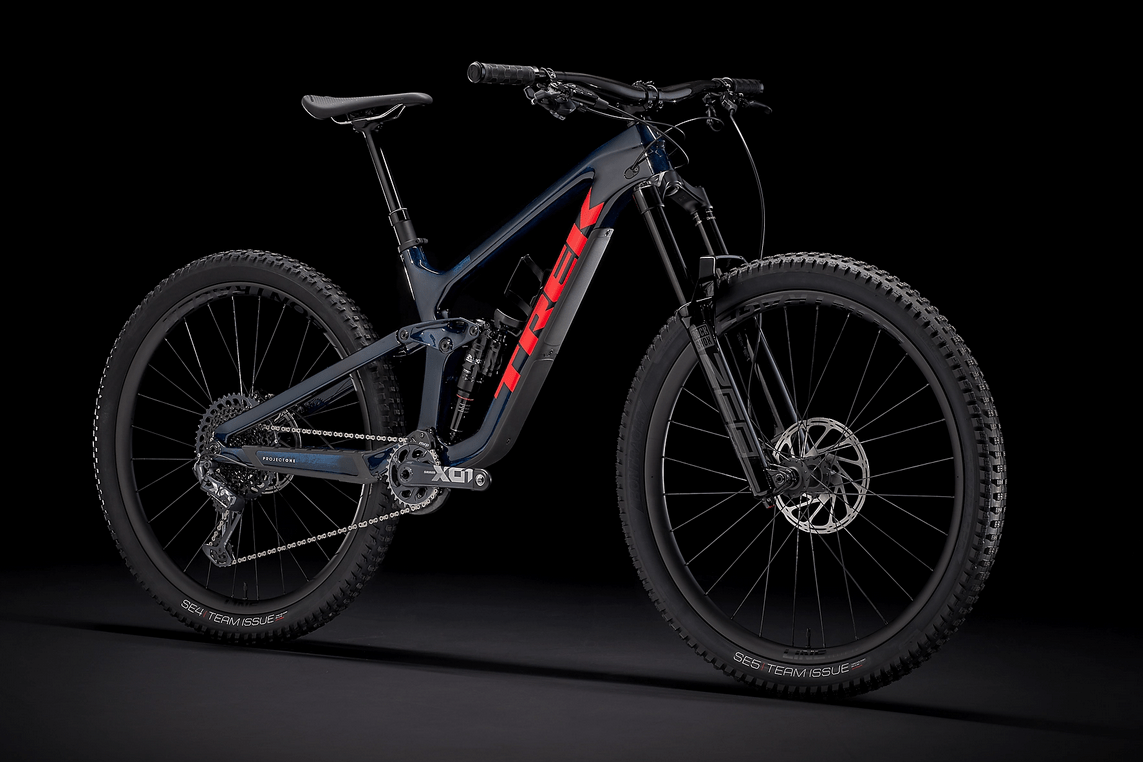
Trek mountain bikes focus heavily on trail riding. They incorporate several innovative elements such as OCLV carbon and Alpha Aluminum to deliver stunning mountain bike performance that often times far outperforms the competition. Specialized focuses on a similar approach however their approach is more cohesive.
Specialized offers a wider array of innovative riding accessories and add-ons you can add on to elevate your riding even further and the company prioritizes aerodynamics and performance over durability. These are all factors to consider when making a decision about which brand is right for you.
Core Feature Comparison
Trek and Specialized have a lot of similarities when it comes to the core features you can expect to find when choosing between the two brands.
However, the variants between the two that do exist can have a massive impact on your ride’s quality.
Below, I’m going to cover all of the most critical aspects that riders need to know when it comes to the overall usability of the various bikes offered by Specialized and Trek.
Build Quality/Frame Material
An interesting thing to note about Trek and Specialized mountain bikes is that both companies use premium quality aluminum to craft their bikes.
However, in certain instances, the particular type of bike you buy will determine what material it is made from.
On high-end model mountain bikes, you can expect to find bikes made from carbon fiber materials. Keep in mind, the higher quality the material is that you get, the more expensive your mountain bike will be.

Whether you’re all about climbing or bombing nasty descents (or both), Specialized has a bike for every style of mountain biking you could want. Road cyclists have just as legendary of a lineup at their fingertips with the Tarmac, Venge, Roubaix, and other aero machines ready to flatten mountains and dart to the head of the pack.
Selections Offered
Both Specialized and Trek offer a wide range of different mountain bike options ranging from full-suspension bikes, hardtail bikes, electric bikes, and more.
Both of these companies also offer a wide range of color options, designs, and configurations in their bikes for you to choose from, making it easy to find the exact mountain bike for you, regardless of what you are looking for.
Gear Functionality
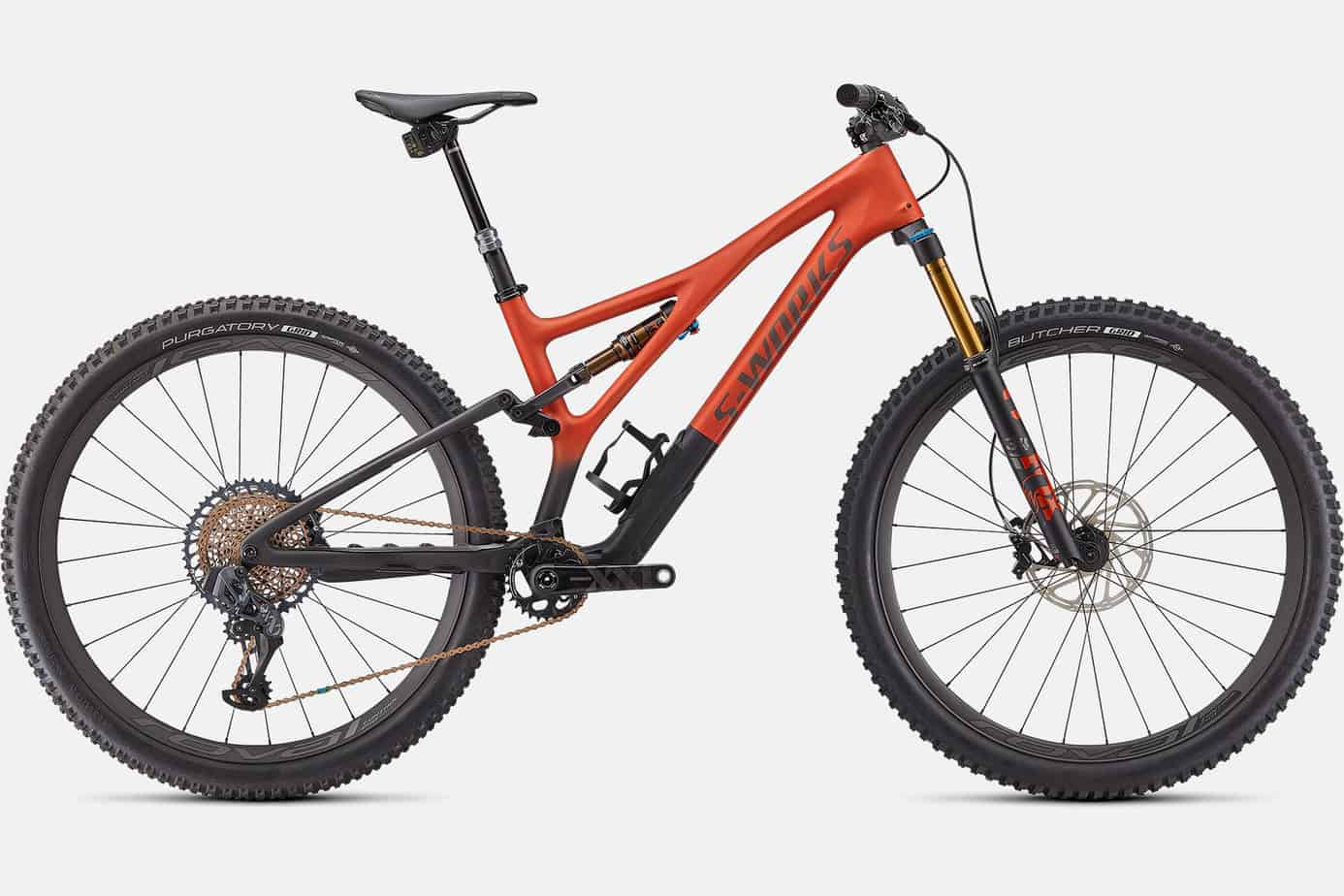
Smooth gear transitions can be the difference between a great ride and a gnarly crash. Without the proper gear ratio installed on your mountain bike, you will risk losing serious performance and functionality on the trail.
Both Specialized and Trek provide various mountain bikes that use high-quality gear components , which will enable you to achieve smooth shifts regardless of how gnarly the trail is.
Braking System
While both brands have similar set-ups in terms of the way that the brakes function on their bikes, Trek bikes come with this unique feature known as an active braking pivot, which keeps the suspension on your bike busy when you engage the rear brake.
Specialized mountain bikes also use premium brake set-ups that are fast-acting, accurate, and powerful.
Overall Value
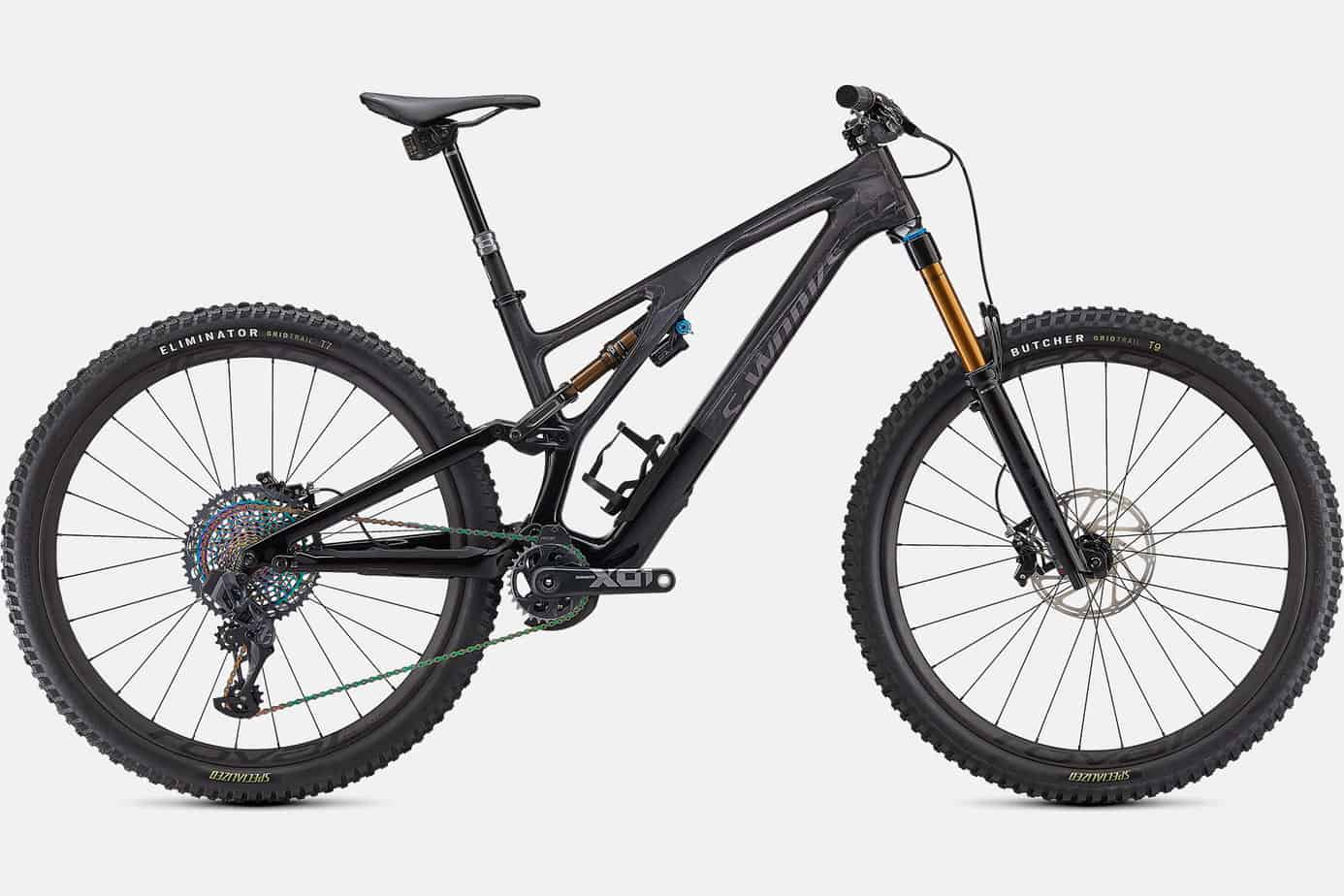
All in all, both of these mountain bike brands utilize innovative design and premium grade components that combine to deliver smooth actioning and hassle-free rides.
When it comes to making a decision about which one of these bike brands is best for you, the final answer will really depend on what your personal riding preferences and needs are.
If you’re someone looking for versatility, functionality, and power for beginners and intermediate riders, Trek has many more options for you to choose from when compared to Specialized.
For those that want more modern looking and pre-built bikes built for racing and bombing mountains, Specialized offers more options than Trek. It’s all a matter of what you need out of your mountain bike and what you’re willing to pay.
Make A Decision: Which brand is better?
I would say Trek just due to the fact that it offers the most variety and selections. If you want a more modernized approach to mountain biking in general.
To put it simply, Trek is a titan in the industry. The company is currently rated as the #1 mountain bike brand in the world, and for good reason!
At the end of the day, it’s your decision, and you should only choose the mountain bike that meets your needs the best according to whatever specific ride style you rock!
Top Alternative Recommendations
#1 trek slash 8 mountain bike.

The Trek Slash 8 Mountain Bike is made from an aluminum frame that provides lasting durability and ultra-stability while out on the trails.
It comes packing a RockShox Yari RC fork that has 160mm of travel.
The rear shock system is a RockShox Deluxe DebonAir RE: AKTIV Thru Shaft that is very responsive yet capable of providing solid support when tackling tougher trails.
This bike also has SRAM Guide R brakes which deliver powerful stopping under all conditions.
It’s also outfitted with SRAM GX Eagle shifters that I like because they deliver versatility to the bike.
- Responsive suspension, durable frame.
- Lack of customization.

Slash 8 is an aluminum enduro mountain bike with fast-rolling 29er wheels, a 160mm RockShox fork, and Trek's exclusive RE:Aktiv with Thru Shaft shock.
#2 Trek Fuel EX 9.9 Mountain Bike
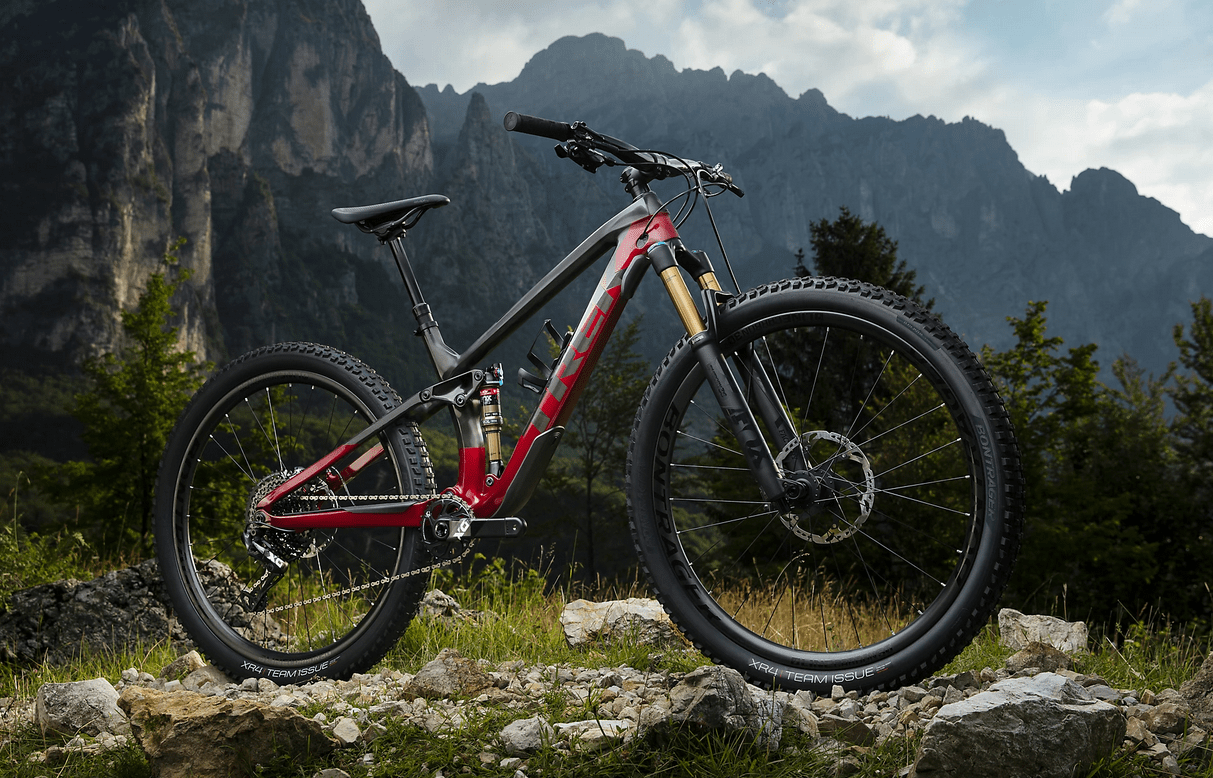
The T rek Fuel EX 9.9 Mountain Bike is outfitted with a Fox 36 Factory Series Float Grip 2 fork that works well in tight corners and large drops.
The SRAM X01 Eagle shifters work great for maintaining balance when engaging in quick speed changes.
The frame is made from carbon fiber which provides ultimate durability and longevity throughout the life cycle of the bike.
The fork has 140mm of travel which is perfect for taking on steeper trails requiring fast adjustment.
Check out how the Fuel EX 9.9 compares to the Fuel EX 5.
- High-quality frame build, relatively lightweight.
- Not comfortable for all body types.

Fuel EX 9.9 makes no compromises. A carbon frame, carbon wheels, SRAM's X01 Eagle 1x12 drivetrain, and FOX Factory Float suspension make this the one carbon full suspension mountain bike that rules every trail.
#3 Specialized STUMPJUMPER EVO PRO 29
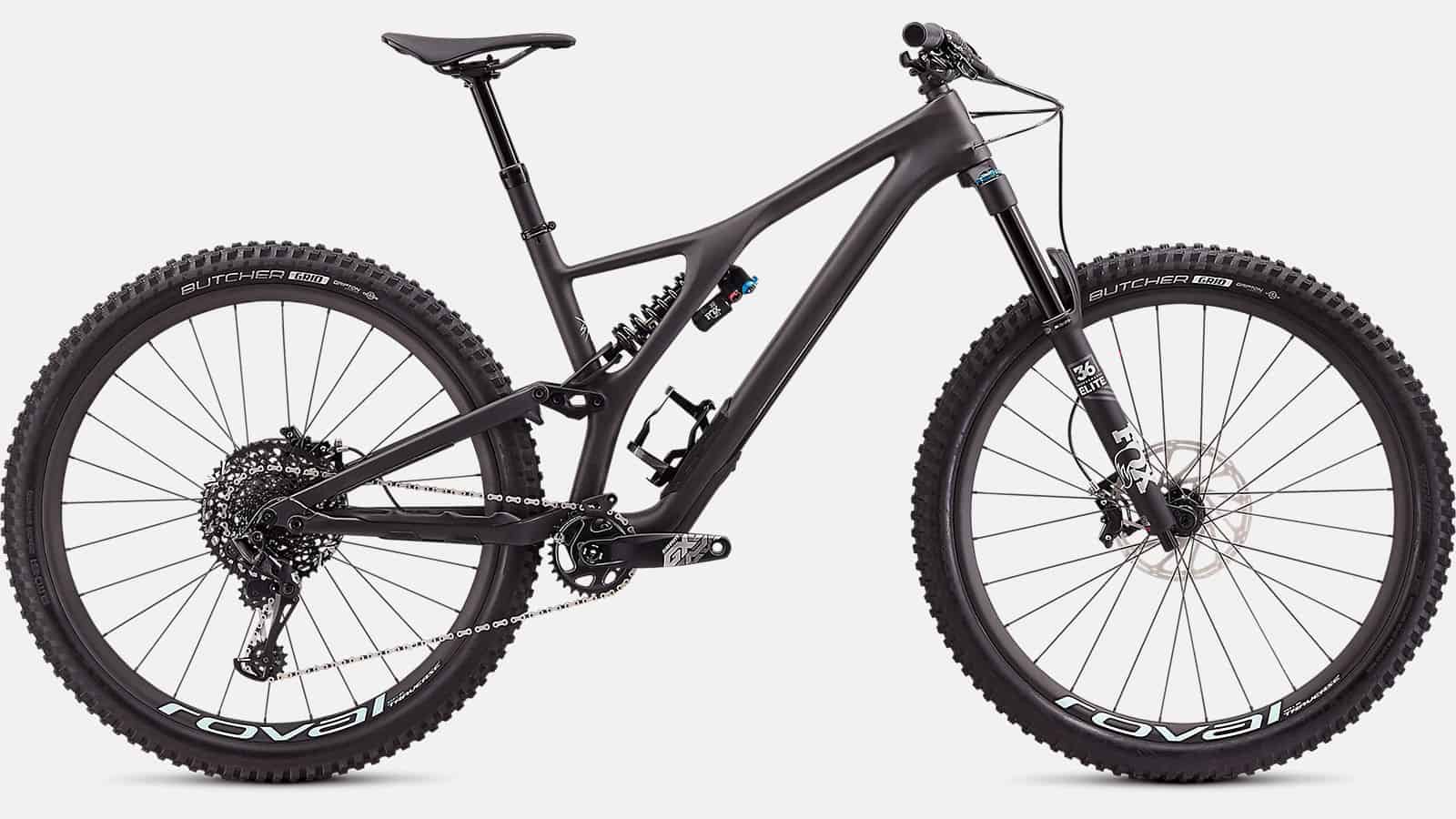
The STUMPJUMPER EVO PRO 29 is made using a FACT 11m carbon frame and has a beautiful asymmetrical design.
It features fully enclosed internal cable routing which delivers a smooth and clean finish to the look of the bike overall.
It’s also equipped with a FOX FLOAT 36 Performance Elite fork that delivers maximum responsiveness. The rims are Roval Traverse Carbon 29s and they look great out on the trail.
- Durable frame, responsive suspension.
#4 Merax 26″ Mountain Bike
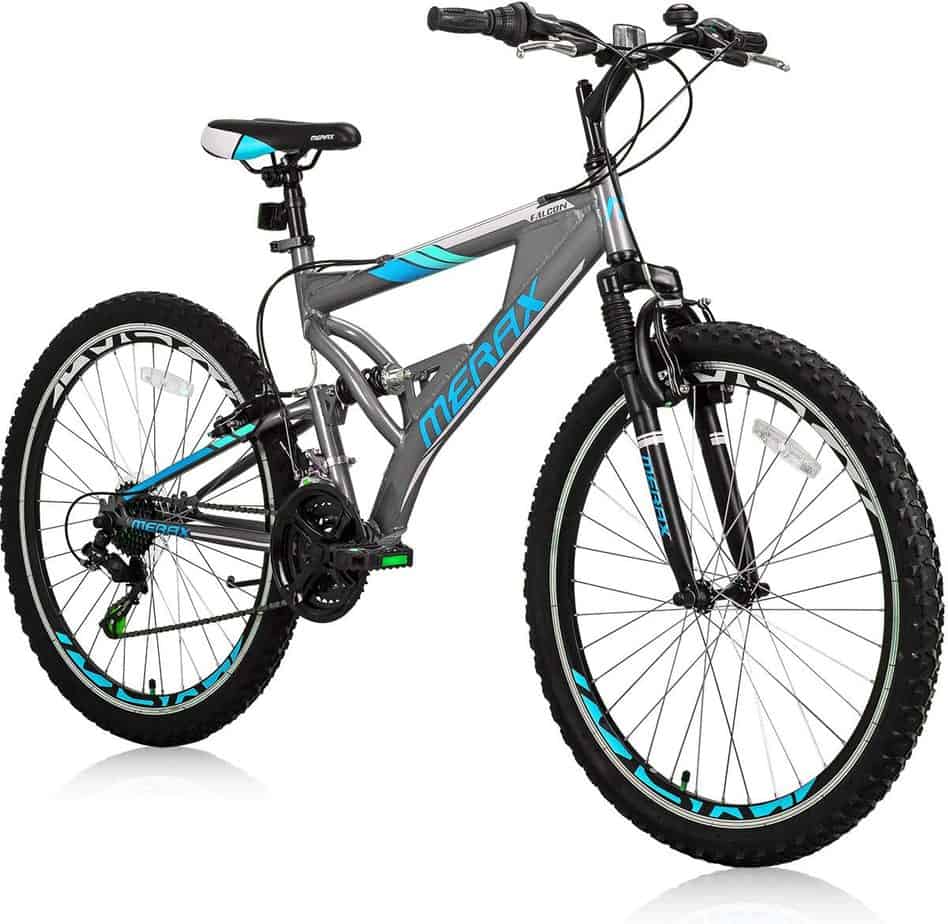
The Merax 26″ Mountain Bicycle comes with integrated suspension forks that provide lots of cushion for those rough rides and windy trails. This bike also comes outfitted with a 24-speed Shimano shifter that makes it easy for you to change gears efficiently and smoothly.
This particular MTB was designed to meet all of your riding needs thanks to its dual-braking system that delivers accurate and responsive stopping power at the drop of a dime.
- 24-speed derailleurs, dual-brake system, and full suspension fork.
Only comes with a limited 1-year warranty.

This Merax Finiss Aluminum 21-Speed Mountain Bike Racing Bicycle features a lightweight heat-treated aluminum mountain frame. The 26-inch double-wall aluminum rim wheels make for easier rolling.
Answer: While I wouldn’t consider Specialized as the best bike brand, it is definitely one of the best mountain bike brands on the market today.
Answer: Both Specialized and Trek use premium grade aluminum materials to craft their bikes; on higher-end models, the materials are upgraded. Because of this, both bikes meet the same durability standards regardless of which option you decide to go with.
Answer: As of today, Trek is rated as the best all-around mountain bike brand on the market.
Trek Vs Specialized Bikes: Which Is the Winner?
The Trek vs. specialized bikes debacle is classic, as the two-cycle manufacturers have been the industry’s most popular mountain bike brands for a while. You can never go wrong with a bike from either of the brands, but they compare favorably against each other in various aspects. Each brand has unique bikes with distinct features that will cater to different rider styles and preferences.
Choosing a bike from either Trek or Specialized bikes boils down to your needs and personal preferences. However, as a beginner mountain bike rider, you may not be able to identify the subtle differences between the two brands. This comparison article has all the information you need to know to make an informed choice when buying a mountain bike from Trek or specialized.
Overview of Trek
Trek is popular because of their road bikes that the legendary cycling champ Lance Armstrong used. The American brand has been in the bike industry for over four decades now and has a wide collection of bikes for all riding levels and terrains.
- Range of Mountain Bikes
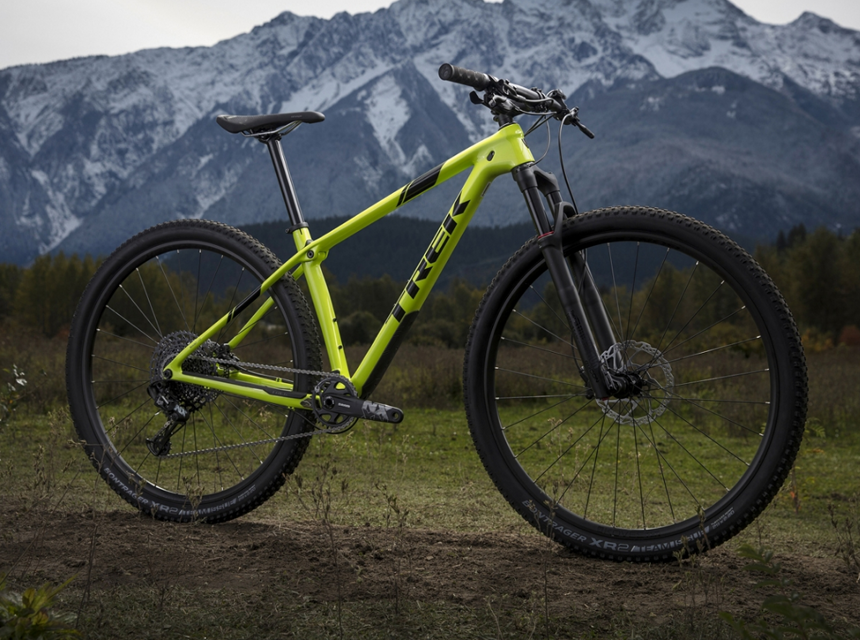
Trek’s range of mountain bikes includes;
- Carbon mountain bikes
- Hardtail mountain bikes
- 29er mountain bikes
- Entry-level and beginner mountain bikes
- Aluminum mountain bikes
- Cross-country mountain bikes
- 27.5 m mountain bikes
- Range of Road Bikes
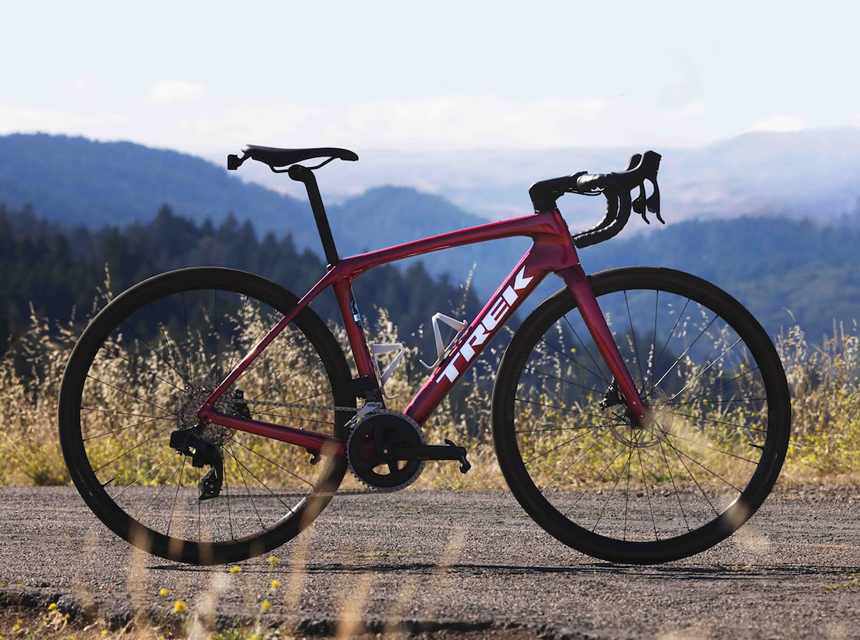
Trek offers a wide range of cycles in the road category, including;
- Performance Trusted Source Performance road bikes There isn’t just one type of road, or one type of road rider. That’s why we created four different high-performance road bike platforms. Check them out to see which is right for however and wherever you love to hit the road. www.trekbikes.com road bikes
- Gravel road bikes
- Backpacking road bikes
- Triathlon road bikes
- Cyclocross bikes
- Electric bikes
- Women’s road bikes
The Trek Domane 5 is a model that perfectly demonstrates what Trek aims for with its road bikes. It offers versatility, a smooth ride, and great speed. It has a carbon frame on its rear and front IsoSpeed that helps smooth out bumps on the road, reducing rider’s fatigue on long rides.
Overview of Specialized
Specialized got famous for their iconic and touring bikes when they first entered the cycles industry. The brand introduced its range of mountain bikes in 1995, popularly known as ‘The Full Force.’ Till date, Specialized remains a top-rated mountain bike brand and has even sponsored cycling champions like Loic Bruni.
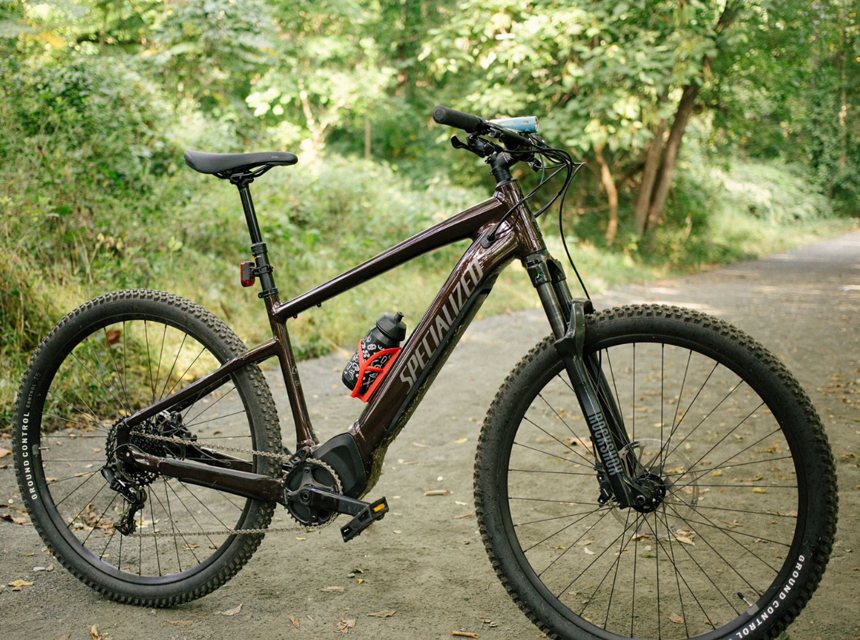
Specialized’s range of mountain bikes includes;
- Trail mountain bikes
- BMX/dirt jump mountain bikes
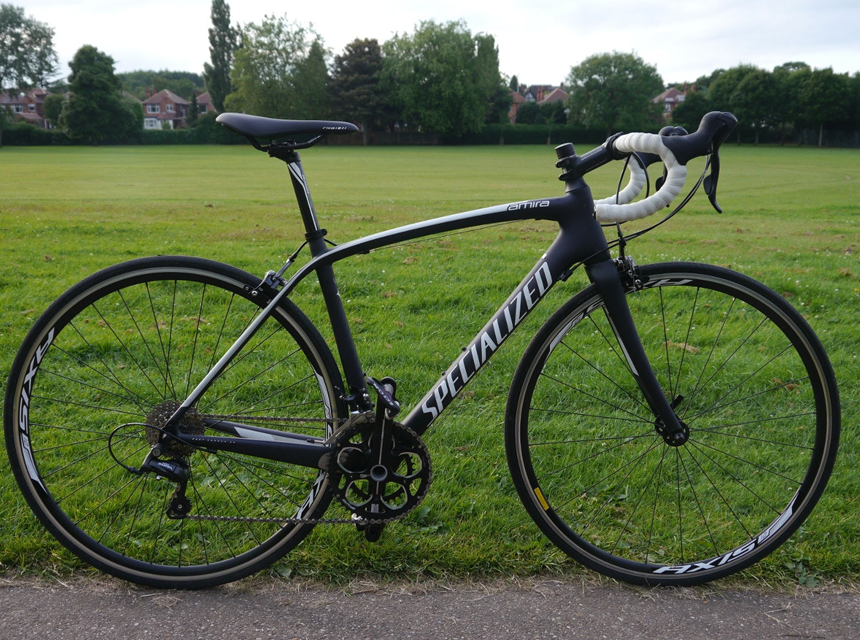
Specialized has performance bikes, triathlon bikes, and gravel bikes in their range of road bikes. The famous Tarmac Disc comp justifies Specialized’s credibility with great descending capabilities and impressive climbing responsiveness. It also has impressive shifting and stopping power, thanks to its hydraulic disc brakes.
Differences between Trek and Specialized Mountain Bikes
As mentioned earlier, both Trek and Specialized have mountain bikes with a unique appeal. However, some of the bikes have visible differences in components, design, and geometry. Here are the primary differences that will help you pick a bike Trusted Source How to Choose Mountain Bikes Trying to figure out which mountain bike is right for you? Here’s how to approach the question www.rei.com that suits your riding needs.
- Types of bikes
Both Trek and Specialize offer a variety of Mountain bikes for every level of riders, but Trek has a wider range of mountain bikes. Although Trek offers a bit more choice, avoid the cheapest models as they can’t take much of a beating and would be uncomfortable riding.
Models & Designs
Both brands offer high-performing models and designs for different riders, including children, men, and women. Trek allows you to customize your bike to your liking so you can have a bike that suits your performance and design needs. You can choose your bike’s frame, fork, and other parts. Specialized offers a wide range of mountain bikes in different styles but doesn’t offer customization.
If you need a bicycle repair tool kit and are having trouble choosing one, check out the popular Bike Hand kit that features 37 pieces of quality tools. A close alternative is the Crankbrothers M19 multitool and case. It features 19 tools and a tool flask.
- Full-Suspension
When choosing Full suspension (FS) bikes, compare two bikes from Trek and Specialized within the same price range and see the components you get. FS bikes are relatively pricey because of the materials and technology used to build them. They offer exceptional durability and an entirely different riding experience.
Would you like to learn more about full suspension and hardtail bikes, read our detailed full suspension vs. hardtail article.
- Rear-suspension Design
The two brands have different rear-suspension designs for their mountain bikes. Trek uses the Full-floater and Active Braking Pivot systems, while Specialized uses Future shock rear. Each brand swears by the power and superiority of their systems, but you can only tell by the bikes’ ability to handle rough terrain and bumps.
Trek’s full-floater system is designed for efficient pedaling. The shock mount does not increase movement when you pedal, so all your energy goes into pedaling instead of getting wasted by the suspension.
The Active Braking pivot system is a unique feature only found on Trek bikes. It is meant to prevent the issue of locking the suspension when braking, just like modern car braking systems. The rear suspension continues to work, allowing more chatter and less skidding of the wheels.
Specialized’s Future Shock rear system is a lightweight suspension designed for rough roads. The Future shocks are placed on top of the head tube, which gives the rider more stability and control.
All in all, both suspension systems stack up against each other. You need to pick one that feels comfortable and meets your cycling needs.
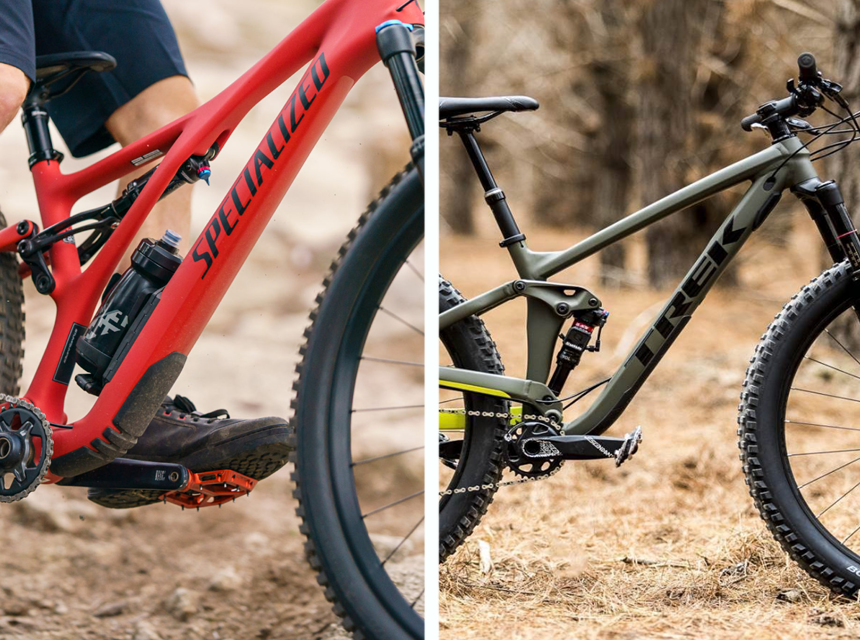
Trek and Specialized use the same materials for the mountain bike frames. The brands use lightweight A1 premium aluminum for the cheaper models and FACT carbon for the high-end models. Generally, the materials used to make the bikes’ components vary according to price ranges for both brands. You cannot compare the build quality of a cheap Trek bike with that of a premium Specialized bike.
- Parts and Components
Trek and Specialized are pretty much similar in quality at similar price ranges. According to an article by the Pros Closet magazine, they offer bike parts and components from Shimano and SRAM, which are industry leaders . Trusted Source Shimano vs. SRAM: Guide to Groupsets & Drivetrains Choosing between Shimano and SRAM can be a major decision. We’ll compare the brands’ drivetrains, brakes, and other components so you can make an informed decision. www.theproscloset.com
You can’t go wrong with a Trek or Specialized bike if you stay away from the cheap models they offer. However, Specialized is synonymous with Mountain bikes Trusted Source Electric Mountain Bikes | Specialized.com Each of our Turbo Electric Mountain Bikes possesses the incredible ride qualities of our legendary mountain bikes, plus smooth and powerful motors, massive range, seamless integration, and innovative yet intuitive controls to personalize every aspect of your Turbo Mountain experience. www.specialized.com and is a top preferred option for high-quality components. It offers relatively good build quality in all the price ranges, from the entry-level option to the premium models.
For example, an entry-level hardtail mountain bike, like Pitch from Specialized, will give you better value for money than the Marlin 4 by Trek, which is $30 cheaper. Another prime example is the mid-level Rockhopper expert by Specialized, which costs $1010, and the famous X-Caliber 7 by Trek.
Do you need help choosing an efficient mountain bike from all the options available in the market? Our ‘ Best Mountain Bikes ’ article will guide you through different types of Mountains bikes and help you choose one that suits your cycling needs.
- Durability on rough terrain
Trek and Specialized offer hardtail and full suspension bikes in their mountain bike ranges. Trek has more hardtail model options than Specialized. When it comes to entry-level options, riders prefer Specialized’s hardtail bikes more than Trek since Specialized integrates durability and efficiency in their designs. This is why the brand wins in a typical Trek vs. Specialized electric mountain bike battle. You would have to try the bike’s geometry and feel at the store to choose what suits you.
For incredible durability, opt for the higher-end hardtail bikes from both brands, as they are more responsive, comfortable to ride, and can take a good beating.
Differences between Trek and Specialized Road Bikes
The Trek vs. Specialized road bikes debate is not easy as both manufacturers have a lot of similarities in their road bike ranges. That said, you have to be extra keen when comparing the two brands and what they offer different types of users. Here are some of the subtle differences between them that you may be unable to see as a beginner;
Trek and specialized offer different types of road bikes for men, women, and children in different cycling levels. Trek offers more options than Specialized in the road bike range. Moreover, Trek allows customization of bike parts so you end up with a bike that meets your design and performance needs.
Both brands have a wide variety of models that cater to every rider, including women, children, beginners and professionals. However, Specialized offers a bit more choice than Trek when it comes to bike models and designs for men and women. Conversely, Trek offers a more extensive range of kids’ models and designs than Specialized.
Another thing to consider is that Trek focuses more on functionality design elements on their bikes and Specialized focuses more on durability and efficiency
Trek and Specialized use the same materials, Carbon and Aluminum Trusted Source enduro-mtb.com For most riders, carbon is synonymous with the best: desirable, remarkably light and, of course, extremely high-performance. However, there is hardly any material surrounded by more myth! In this article, we’ll dismantle forum wisdom and dangerous half-truths. enduro-mtb.com , to make their road bikes. Trek uses their own OCLV carbon to make the fastest, lightest, and stiffest, most responsive road bikes. Trek also uses Alpha Aluminum material to build light, fine-tuned, and high-performance bikes.
Specialized uses Aluminum and Carbon to make their road bikes as well, except they employ a different approach in the manufacturing process. According to an article by Enduro a good ride is not just a question of material, but the manufacturing process. Nonetheless, when it comes to materials, Trek and Specialized offer the same quality.
Parts & Components
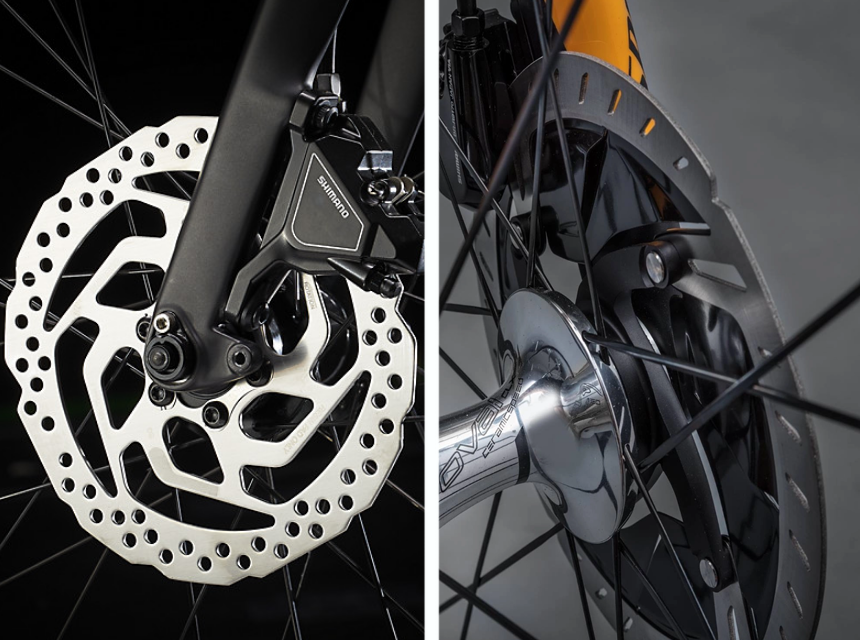
This is another area where both bike brands compare equally. Both manufacturers get bike parts for their road bikes from SRAM and Shimano. The higher-end models from both brands have high-quality parts and components compared to low-end or entry-level options.
One bike part that sets the two brands apart in the road bikes range is brake. Trek use disc brakes which offer better performance and control in all terrains, regardless of the weather. Disc brakes are incredibly versatile and safe, as they have great stopping capability. Specialized also use disc brakes on their road bikes, but they are not as extensive as the ones on Trek bikes.
Before choosing a road bike, you must be sure that it has the comfort and endurance you need when cycling on the road. Trek road bikes are known to offer better stability and endurance to bikers. If you are looking to do long-distance riding, a Trek road bike is your best bet.
Besides durability, Specialized bikes are highly preferred for their efficiency. They will give you the smoothest ride irrespective of road quality.
Trek and Specialized are among the top, premium bike brands in the market. Therefore, their prices are on par. The brands offer lower-end and high-end bike models at different prices. The Trek Precaliber 24 which costs $470 is a good example of a low-end road bike, the Supercaliber 9.7 a mid-level one at $5099, and the Madone SLR a high-end option at $13,199.
The $1300 Diverge E5 is an entry-level road bike by Specialized. Mid-level options are like the popular Roubaix at $2700 and $5500 Tarmac SL7 Comp. The S-Works Tarmac SL7 at $14,000 is a high-end option.
Clearly, Trek offers cheaper entry-level bike options than Specialized. The mid-level and high-end options have nearly similar prices.
Are you in the market for an entry-level road bike and have no idea what to get? Read our article on the best road bikes under $2000 . The detailed buying guide and list of top-rated choice will help you make an informed choice.
- Final Thoughts
Being among the top-rated, premium bike brands, choosing between Trek and Specialized when shopping for a bike can be daunting. Our detailed side by side comparison does not show a clear winner because both brands produce top-quality bikes that cater to the needs of different types of riders. Choosing either manufacturer should depend on your needs and priorities as a rider. For instance, if durability and efficiency are your top needs, a Specialized road or mountain bike is your best bet.
If your biggest need is a functional, rugged design, Trek bikes will give you the best value for money. The Trek vs. Specialized bike debacle can only be solved by comparing the performance and quality of bikes within the same price range from both brands.
Your email address will not be published. Required fields are marked *
Save my name, email, and website in this browser for the next time I comment.
Post Comment
- 1 best mountain biking in the us
- 2 best las vegas bike trails
- 3 best denver bike trails
- 4 best new jersey bike trails
- 5 bmx vs mountain bike
- mountain bikes Most popular | Aug., 2023
- 2 mtb knee pads
- 3 24 inch mountain bike
- 4 mountain bikes under 600
- 5 mountain bikes for hunting
- Models & Designs
- Parts & Components
Cycling made Simple.
Made By Cyclists
Trek Vs Specialized Mountain Bikes
May 4, 2023

Key Takeaways
- Trek bikes tend to be more cost-efficient, with options starting under $400.
- Trek bikes are known to be more durable and great for more challenging trails and terrain.
- On the other hand, Specialized bikes are lighter, fast, and more aggressive.
- The choice between Trek and Specialized bikes comes down to your needs.
- Consider factors like price, durability, range of models, suspension system, and weight.
This article may contain affiliate links where we earn a commission from qualifying purchases.
Can't decide between Trek and Specialized Mountain bikes? Our article helps you make an informed choice. Get the best ride for your adventure!
When it comes to Trek vs. Specialized mountain bikes, there’s no straightforward answer to which is best. Specialized bikes are faster and more aggressive and are known for their cutting-edge technology. Conversely, Trek bikes are more stable and comfortable, with more variety and options.
Both Trek and Specialized bike brands offer a wide range of mountain bikes with different features and price points. But which one is right for you? I have extensively researched and tested both Trek and Specialized mountain bikes to provide you with the most up-to-date and reliable information. So, if you’re looking to make an informed decision about which brand to choose for your next mountain bike purchase, read on to find more.
TABLE OF CONTENTS
Trek Vs. Specialized Mountain Bikes Overview
If you are in the market for a new mountain bike, you may have heard of two popular brands: Specialized and Trek bikes. Both are among the best mountain bike brands on the market.
They also offer a wide range of bikes, from entry-level bikes to high-end model options. Both brands offer a wide range of mountain bikes, including hardtail bikes, hybrids, full-suspension bikes, and more.
Trek has a wider variety of bikes to choose from compared to Specialized. On the other hand, you get slightly better parts for entry-level bikes when you go with Specialized road bikes.
That said, both brands offer competing high-end road bikes with slim contrast in geometry. Here’s an overview of the differences between Trek and Specialized mountain bikes:
Trek Mountain Bikes
If you're considering purchasing a Trek mountain bike for mountain biking, you'll be happy to know that they offer a wide range of bikes to choose from.
When it comes to versatility, Trek Bike is the best mountain bike brand. It offers road bikes for every level of rider, from beginners to advanced riders. The brand also has hardtail bikes, full-suspension bikes, as well as electric mountain bikes.
Range of Trek Bikes
This road bike offers a variety of mountain bike models, including:
- Marlin: Entry-level hardtail mountain bike
- X-Caliber: Hardtail mountain bike with a lightweight frame
- Roscoe: Trail hardtail mountain bike with wider tires for added stability
- Fuel EX: Full-suspension mountain bikes with a carbon frame
- Remedy: Full-suspension enduro bike for more technical riding
- Powerfly: Electric mountain bike for added assistance on the trails
- High quality and durability
- A lifetime warranty on their frames
- Large selection of bikes to choose from
- Trek road bikes are also designed with the rider in mind, with features like adjustable suspension and dropper posts.
- They can be more expensive than some other brands. However, you do get what you pay for in terms of quality and durability.
- Some riders also find that Trek bikes can be on the heavier side, which can make them more difficult to maneuver on the trails.
Specialized Mountain Bikes
If you are considering buying a mountain bike, Specialized is a mountain bike brand you should definitely check out. Specialized models are known for their more expensive and high-end bikes, but they also offer more affordable entry-level mountain bikes than some of their other models.
Specialized is a well-known brand in the mountain biking world, and for a good reason. They offer a wide range of mountain bikes to suit every rider's needs and preferences.
The Range of Specialized Bikes
Specialized brand is known for manufacturing bikes in a wide range, from entry-level to high-end models.
- Cross-country (XC) mountain bikes : These are lightweight and efficient bikes designed for racing, cross-country riding, or riding on smoother trails.
- Trail bikes : These are versatile trail-riding bikes that are capable of handling a variety of terrains.
- Enduro bikes : These bikes are designed for riders who like to ride fast on rough and technical terrain.
- Downhill (DH) bikes : These are heavy-duty bikes designed with modern car braking systems to handle downhill riding. They’re great for riders who want to ride downhill fast and aggressively.
- Fat bikes : These are specialized mountain bikes with oversized tires that provide extra traction on snow, sand, and other soft terrains.
Specialized mountain bikes come in a range of wheel sizes, including 27.5", 29", and 27.5+. Overall, the range of specialized mountain bikes caters to different riding styles and terrains.
- They offer well-rounded performance characteristics.
- They’re known for their lighter weight and versatility, making them a great option for riders who want a bike that can handle a variety of terrain.
- They also offer a range of women's-specific mountain bikes designed to fit the female anatomy and provide a comfortable, efficient ride.
- While their entry-level models are relatively affordable, their higher-end models mostly comprise expensive bikes.
- Some riders may find that the geometry of Specialized bikes doesn't suit their riding style or body type.
- Specialized bikes may not be as durable as some other brands. However, this can vary depending on the specific model and how it is used.
Trek Vs. Specialized Bikes: Which One to Choose?
Choosing between a Trek and a Specialized mountain bike can be a tough decision. Both brands have their strengths and weaknesses; ultimately, the right choice depends on your preferences and needs.
Let’s compare the two brands in terms of bike technologies, frame design, groupsets, wheels, and tires to help you make an informed decision.
Trek Vs. Specialized Bikes Bike Technologies
When it comes to bike technologies, both Trek and Specialized have unique features that set them apart.
Trek bikes utilize an active breaking pivot rear-suspension design system and a full-floater, while Specialized mountain bikes use Future Shock Rear.
Trek also offers a proprietary suspension system called IsoSpeed, which is designed to absorb vibrations and increase comfort on rough terrain. On the other hand, Specialized offers a proprietary technology called Brain, which automatically adjusts the suspension based on the terrain.
Bike Frame Comparison
Frame design is another important factor to consider when choosing between Trek and Specialized mountain bikes.
Trek mountain and road bikes are known to be versatile. These bikes can handle a wider range of terrain. On the other hand, Specialized bikes are crafted with specific types of riders and terrain in mind.
Trek mountain bikes have relatively hefty frames, which provide a more stable and reliable ride. They use a full-floater and active breaking pivot rear-suspension system.
On the other hand, Specialized is mainly known for its lightweight bikes, yet they occasionally make a compromise-weight model. And because Specialized frames may be slightly lighter, they might not be as durable.
Groupset Comparison
The groupset is the collection of components that control the shifting and braking of the bike. Both Trek and Specialized offer a range of groupsets from various manufacturers, including Shimano and SRAM.
Trek bikes tend to use more expensive groupsets than Specialized bikes, which can make them more expensive overall. However, the higher-end groupsets on Trek bikes tend to offer better performance and durability.
Bike Wheels Comparison
The wheels on a mountain bike can greatly affect its performance and handling. Trek offers a wide range of wheel options, including carbon fiber and aluminum rims.
Conversely, Specialized offers a proprietary wheel technology called Roval. Both brands offer tubeless-ready wheels that can improve traction and reduce the risk of flats.
Bike Tire Comparison
Tire selection is another important consideration when choosing a mountain bike. Trek and Specialized both offer a range of tire options, including tubeless-ready tires that can improve traction and reduce the risk of flats.
Trek bikes tend to come with wider tires, which can provide better stability and traction on rough terrain. Specialized, on the other hand, offers a range of tire technologies, including the Gripton compound, which is designed to provide exceptional grip in wet and dry conditions.
Factors to Consider When Choosing Trek Vs. Specialized Bikes
When deciding between Trek and Specialized mountain bikes, there are several factors to consider. Here are some key points to keep in mind:
- Budget: Trek bikes tend to be a bit more expensive than Specialized bikes. Specialized might be the better choice if you're on a tight budget.
- Riding Style: Consider what type of riding you'll be doing. Trek bikes are designed to handle various terrains, while Specialized mountain bikes are designed to cater to specific types of riders and terrains.
- Components: Both Trek and Specialized use high-quality components, but Trek tends to use higher-end components and materials, such as carbon fiber, in their mountain bikes, which can give them a performance edge.
- Suspension: Trek bikes use a full-floater and active breaking pivot rear-suspension system, whereas Specialized MTB uses Future Shock Rear. Both systems have their advantages and disadvantages, so it's important to test-ride both types of bikes to see which one feels better for you.
- Size: Make sure to choose the right size bike for your body type. Trek offers a wider range of bike models than Specialized, which can make it easier to find the perfect fit.
Ultimately, both brands offer high-quality bikes that are designed to provide a great riding experience. By considering your budget, riding style, components, suspension, and size, you can make an informed decision and choose the bike that's right for you.

Why Road Cyclists Are Switching to Gravel Bikes

Why Fitness Enthusiasts Are Switching to Smart Cycling Trainers

Why Competitive Cyclists Are Switching to Aero Road Bikes

Why Eco-Conscious Riders Are Switching to Bamboo Bikes
About THE AUTHOR

Danny Lawson
Mountain biking is more than just a hobby for me - it's a way of life. I love the challenge and excitement that comes with it, and I'm always pushing myself to go faster and ride harder. Some people might think that mountain biking is dangerous, but I see it as the only way to live.
Trending Now

Why City Dwellers Are Switching to Folding Bikes

Why Budget-Conscious Riders Are Switching to Co-op Bike Brands

Why Mountain Bikers Are Switching to Fat Tire Bikes

Why Urban Commuters Are Switching to Electric Bikes

About PedalChef
PedalChef is a blog on all things cycling. We are a group of people who love bikes, and we want to share the joy that comes with the experience. You can read more about us here .

©2024 PedalChef. All rights reserved.
We can be reached at [email protected]
PedalChef.com is a participant in the Amazon Services LLC Associates Program, an affiliate advertising program designed to provide a means for sites to earn advertising fees by advertising and linking to Amazon. This site also participates in other affiliate programs, and is compensated for referring traffic and business to these companies.

Trek vs Specialized Mountain Bikes Which is Better
This is a tough question, both Trek and Specialized mountain bikes have established themselves and offer great bikes in different categories and price ranges. There are a few differences between Trek and Specialized bikes which come more apparent when looking at the high-end mountain bikes.
Trek vs specialized which is better? There isn’t a clear winner. Both offer similar bikes and components in the same price range. Trek has a wider variety of bikes to choose from compared to Specialized. At entry-level, you get slightly better parts when you go with Specialized. Both offer competing high-end bikes with slight variations in geometry.
Both brands offer a wide range of mountain bikes like hardtails, full suspension, hybrids, etc. There are a few differences when it comes to design and technology which impact how a bike feels and handles.

Rear-suspension Design
Parts and components, full-suspension, differences between trek and specialized mountain bikes.
Differences are hard to notice when you’re a beginner, more experienced mountain bikers will notice differences even if they are only minor. The differences can be seen in the more expensive line-ups and geometry. Each brand will feel different when riding their mountain bikes and it comes down to personal preference and body type which brand or bike suits you best.
Bike fit is the most important factor when you’re looking for a new MTB. Hardtails of both brands are quite similar but the full suspension mountain bikes have a few differences.
Both brands have women’s mountain bikes, but I won’t be going over these as it’s more of a marketing thing. A woman can perfectly go for a ‘men’s’ mountain bike, there’s no difference honestly.
Trek allows you to build your own bike to your liking. You can select the frame, fork and other parts to have it fully customized. This isn’t offered by Specialized but it doesn’t favor one brand over the other.
There’s a difference in rear suspension design, Trek developed the Full-floater and Active Braking Pivot where Specialized has the Future Shock Rear. Both claim their systems are far superior to their competitors however this remains to be seen. In essence, it comes down to how the bikes deal with rough terrain and bumps and reducing impact.
So let’s look at what Full-Floater means. It’s designed in a way to pedal more efficiently, the shock mount doesn’t increase movement when your pedaling meaning more energy goes into actually paddling than it being wasted by the suspension.
Active Braking Pivot gets rid of the problem of locking the suspension while breaking. The rear suspension keeps working allowing for more chatter and your wheels will skid less, exactly like most modern car braking systems. This is a unique feature only found in Trek bikes.
Future Shock Rear is a lightweight suspension that deals with rough roads. Future shocks are located above the head tube which increases stability and gives the rider more control.
Either way, both suspension systems are perfectly fine, it just depends on what feels more comfortable and you need to decide for yourself.
Both Trek and Specialized use the same materials for their MTB frames depending on the type of bike. Lightweight A1 premium aluminum for the cheaper bikes and FACT carbon fiber for the more expensive and high-end MTB’s. It also depends entirely on how the budget you bring, you can’t compare a cheap Trek to an expensive Specialized MTB.
Both brands offer parts and components from Shimano and SRAM depending on the bike and price. Both manufacturers can be considered equal in quality if they cost the same. Not everybody will agree though.
Types of Mountain Bikes
Both brands offer a variety of mountain bikes for both men and women. The most common mountain bikes can be roughly divided into hardtails (only front suspension) and full suspension bikes. Full suspension is often used for trails, tracks, and downhill, and hardtails are better suited for cross country but are also great for trails.
Not all bikes are designed for trails, some are more suitable for speed, freeride, dirt jumping, etc. Both have rigid fat bikes with oversized tires for dealing with snow, sand, and mud.
If you look at the lower end or entry-level hardtail mountain bikes there isn’t a clear answer of which one is better but riders often favor Specialized . This is where it really comes down to geometry and bike feel.
The best way for you to find out is to go to your local bike shop and see if you can test ride them . After that, you can make a decision based on your personal experience and what feels right to you.
Trek offers a bit more choice when it comes to hardtails compared to Specialized but stay away from the cheapest models (which goes for both brands). These bikes aren’t very responsive and feel a bit uncomfortable riding trails. The bikes can’t take much of a beating and you’ll find yourself replacing parts sooner than later.
Both Specialized and Trek offer full-suspension mountain bikes (FS) starting at around $2,000 all the way up to $10,000. When comparing the two pick bikes in the same price range and look at which components you get.
Full suspensions are expensive mainly because of the materials and technology used. It’s an entirely different experience riding a full suspension and it comes at a price.
Let’s have a look at how much Trek and Specialized bikes cost starting with the entry-level bikes around $700. Specialized entry-level mountain bike costs (29″) $710, Treks entry-level MTB is $760, slightly more expensive.
The specialized bike has better slightly bike parts and the biggest difference is the fork. It has a stiffer, rigid platform which helps to ride with confidence. Treks bike seems less precise and people question the fork they picked.
People that rode both bikes note that shifting is a bit smoother and you get a remote lockout. So when you’re looking at entry-level bikes. Specialized sometimes is a better option . Don’t take my word for it though, try and test the bikes yourself.
I’m not taking deals into consideration that you can get at your local bike shop. I personally never met a Trek or Specialized owner that wasn’t happy with their bike.
Looking at the more expensive bikes, the same applies. You get slightly better components when you buy a Specialized, assuming you compare mountain bikes in the same price range. This probably has to do with Treks’ reputation, they won many competitions and this probably adds up to the price.
In the end, you can’t go wrong with Trek or Specialized, both offer great high-quality bikes. They also both make cheap crappy bikes, I would stay away from them. Here’s a table with bikes in the same price range if you’re looking to compare entry and mid-level hardtail MTB’s.
After researching all the cons and pros of both brands it’s hard to tell which truly is better. It’s such a general question and you really need to look at the individual parts, how it fits, and bike feel. There’s no such thing as ‘best brand’.
Sometimes you’re better off buying a Trek and sometimes you should go for a Specialized. Even when one MTB seems to have better specs it’s still a matter of how the bike feels when you ride it. Also comparing a $400 MTB to a $1000 MTB is just insane.
Also, note that new bikes are introduced every year, technology is moving forward and an MTB introduced 3 years ago usually can’t be compared to the latest model.
My advice is to look at other brands as well, there are so many good brands out there that offer great bikes and parts for a great price. Giant comes to mind if you’re really constrained by your budget they often provide the best bikes at the lowest price. They aren’t as shiny and people generally don’t like their designs but I would seriously consider looking into it.
Remember that both brands come from the same Taiwanese factory!

I always had a thing for cycling sports and love almost anything that involves bikes and boards. I work part-time as a designer in the tech industry and work on my blogs whenever I can.

Specialized vs Trek (Brand Comparison)
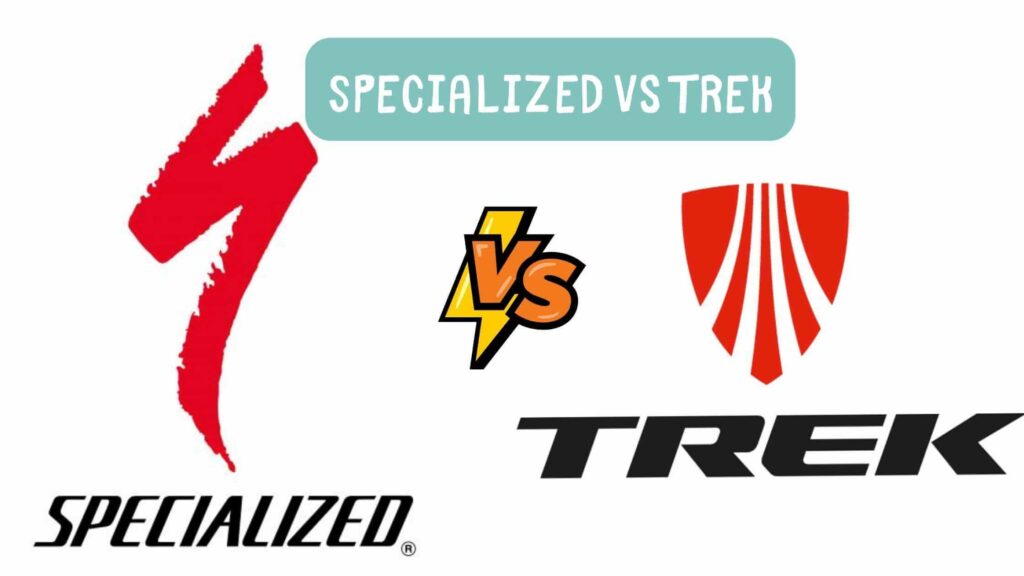
When it comes to buying a new bike, two brands that are often compared are Specialized and Trek. Both are well-established American bike brands that produce high-quality bikes for all types of riders. But which one is better? Below we’ll explore the differences and similarities between Specialized vs Trek bikes to help you make an informed decision.
Key Takeaways:
- Price and Range: Trek generally offers less expensive entry-level bikes compared to Specialized. Specialized’s use of carbon fiber in their frames makes their bikes slightly more expensive.
- Riding Focus: Trek is known for mountain bikes, while Specialized is known for road bikes.
- Design Approach: Trek focuses on innovative technology like OCLV carbon fiber frames for lightweight strength. Specialized prioritizes functional and aesthetically pleasing design.
- Target Audience: Trek caters more to serious cyclists, while Specialized offers a wider range from beginners to professionals.
- Quality and History: Both Trek and Specialized have a history of producing high-quality bikes. The choice depends on personal preference.
- Mountain Bikes: Both brands offer a range of mountain bikes. Trek’s hardtail bikes tend to be more affordable, while Specialized’s tend to be more expensive.
- Innovation and Future Trends: Specialized innovates with technologies like Future Shock for smoother rides, while Trek integrates technology and explores new materials like OCLV carbon fiber.
Trek vs Specialized: An Overview
When it comes to bike brands, Trek and Specialized are two of the most well-known and respected names in the industry. Both brands offer a wide range of bikes for different types of riders, from road bikes to mountain bikes and everything in between. In this section, we’ll take a closer look at the similarities and differences between Trek and Specialized to help you decide which brand might be right for you.
One of the main differences between Trek and Specialized is their approach to bike design. Trek is known for its innovative technology, such as its OCLV carbon fiber frames, which are designed to be both lightweight and strong. Specialized, on the other hand, is known for its attention to detail and focus on creating bikes that are both functional and aesthetically pleasing.
Another key difference between the two brands is their target audience. Trek tends to focus more on serious cyclists and enthusiasts, while Specialized offers a wider range of bikes for different types of riders, from beginners to professionals. This means that if you’re just starting out, you may find more options with Specialized, while if you’re a seasoned cyclist looking for high-end performance, Trek may be the better choice.
When it comes to price, Trek bikes tend to be more expensive than Specialized bikes. This is partly due to the brand’s focus on high-end technology and performance, but it also reflects the quality of the materials used in their bikes. That being said, both brands offer a range of bikes at different price points, so you should be able to find something within your budget regardless of which brand you choose.
In terms of overall quality, both Trek and Specialized are highly respected brands with a long history of producing high-quality bikes. Ultimately, the choice between the two will come down to personal preference and what you’re looking for in a bike. Whether you’re a serious cyclist or just looking for a reliable bike to get you from point A to point B, both Trek and Specialized are great options to consider.
Road Bikes Comparison
When it comes to road bikes, both Specialized and Trek offer a wide range of options to choose from. Whether you’re looking for an entry-level bike or a high-end model, both brands have something to offer. In this section, we will compare some of the most popular road bikes from both brands.
Specialized Tarmac vs Trek Emonda
The Specialized Tarmac and Trek Emonda are two of the most popular high-end road bikes from both brands. The Tarmac is known for its stiffness and responsiveness, while the Emonda is known for its lightweight and climbing ability. Both bikes are designed for speed and performance, but they have different strengths.
Specialized Roubaix vs Trek Domane
The Specialized Roubaix and Trek Domane are two endurance road bikes that are designed for long rides on rough roads. The Roubaix is known for its comfort and compliance, while the Domane is known for its stability and control. Both bikes are designed to absorb shocks and vibrations, but they have different approaches to achieving this.
Specialized Allez vs Trek Checkpoint
The Specialized Allez and Trek Checkpoint are two entry-level road bikes that are designed for beginners and budget-conscious riders. The Allez is known for its lightweight and agility, while the Checkpoint is known for its versatility and durability. Both bikes are designed to provide a comfortable and efficient ride, but they have different strengths.
Trek Boone vs Specialized Crux
The Trek Boone and Specialized Crux are two cyclocross bikes that are designed for off-road racing and adventure. The Boone is known for its stability and control, while the Crux is known for its agility and speed. Both bikes are designed to handle rough terrain and challenging conditions, but they have different strengths.
Mountain Bikes Face-off
When it comes to mountain biking, Trek and Specialized are two of the most popular brands. Both offer a range of mountain bikes designed to tackle everything from technical trails to cross-country terrain. In this face-off, we’ll take a closer look at the strengths and weaknesses of each brand’s mountain bikes.
Hardtail Mountain Bikes
If you’re looking for a hardtail mountain bike, Trek and Specialized both have plenty of options to choose from. Trek’s Marlin and X-Caliber series are popular choices, while Specialized’s Rockhopper and Pitch series are also well-regarded.
When comparing the two brands, Trek’s hardtail mountain bikes tend to be more affordable, with prices starting at around $500. Specialized’s hardtail mountain bikes, on the other hand, tend to be more expensive, with prices starting at around $700.
Full-Suspension Mountain Bikes
For more technical trails, a full-suspension mountain bike is often the way to go. Both Trek and Specialized offer a range of full-suspension mountain bikes designed to handle rough terrain.
Trek’s Fuel EX series is a popular choice, with models ranging from the Fuel EX 5, which starts at around $2,000, to the Fuel EX 9.9, which costs upwards of $10,000. Specialized’s Stumpjumper series is also well-regarded, with models ranging from the Stumpjumper ST, which starts at around $2,000, to the Stumpjumper EVO, which costs upwards of $9,000.
Which Brand is Best?
When it comes to mountain bikes, there’s no clear winner between Trek and Specialized. Both brands offer a range of high-quality mountain bikes designed to handle a variety of terrain. Ultimately, the best brand for you will depend on your individual needs and preferences.
If you’re looking for an affordable hardtail mountain bike, Trek may be the better choice. If you’re interested in a full-suspension mountain bike, both Trek and Specialized offer excellent options.
No matter which brand you choose, make sure to test-ride several different models to find the one that feels the most comfortable and responsive to you.
Bike Models and Design
When it comes to bike models and designs, both Trek and Specialized offer a wide range of options for different types of riders. Both companies have models specifically designed for kids, women, and beginners, as well as other products that target unique uses such as downhill or cross country.
Trek offers a diverse range of bike models, including road, mountain, and hybrid bikes. They have a wide range of mountain bikes, with hardtail and full suspension options. Trek’s hardtail bikes are known for their efficiency and durability, while their full suspension bikes offer a smooth ride on rough terrain. Trek’s road bikes are known for their geometry, which provides a comfortable riding position for long rides.
Specialized also offers a range of bike models, including road, mountain, and hybrid bikes. Their mountain bikes are designed with the Future Shock technology, which provides a smoother ride, while their road bikes are equipped with the Future Shock Rear technology, which absorbs vibrations and bumps on the road. Specialized also offers a range of e-bikes, which are becoming increasingly popular among riders.
Both Trek and Specialized use high-quality materials in their bike designs. Trek uses their proprietary Alpha Aluminum and OCLV Carbon materials in their bike frames, while Specialized uses their FACT Carbon and M5 Aluminum materials. Specialized’s use of carbon fiber in their frames often makes their bikes slightly more expensive than comparable Trek models.
In terms of design, both companies prioritize comfort and efficiency. Trek’s road bikes are designed with a comfortable riding position, while their mountain bikes are designed with a focus on durability and efficiency. Specialized’s road bikes are designed with a focus on aerodynamics and speed, while their mountain bikes are designed with the Future Shock technology for a smoother ride.
Materials and Manufacturing
When it comes to materials and manufacturing, both Specialized and Trek have a lot to offer. Both brands use a range of materials to construct their bikes, including aluminum and carbon fiber.
Aluminum frames are lightweight and strong, making them a popular choice for many riders. Specialized and Trek both offer aluminum frames in their range of bikes. Carbon fiber frames are even lighter and stiffer, providing excellent performance for road and mountain bikes. Both brands offer carbon fiber frames in their top-of-the-line models.
In terms of manufacturing, both brands have their own factories in Taiwan, where they produce many of their bikes. They also work with manufacturers in Europe and Asia to produce their bikes. Specialized has a reputation for being very particular about the manufacturing process and has a team of engineers who oversee the production of their bikes.
Trek, on the other hand, has a reputation for being more focused on innovation and design. They have a range of sub-brands, each with its own focus on innovation and design. This allows them to create bikes that are both functional and stylish.
In terms of materials and manufacturing, both Specialized and Trek offer high-quality bikes that are built to last. Whether you are looking for an aluminum or carbon fiber frame, both brands have a range of options to choose from. And with their own factories and partnerships with manufacturers around the world, you can be sure that your bike will be built to the highest standards.
Components and Features
When it comes to components and features, both Trek and Specialized offer high-quality options. Let’s take a closer look at what each brand has to offer.
Trek and Specialized both use top-of-the-line components from well-known brands like Shimano and SRAM. For example, Trek’s mid-range road bikes often come equipped with Shimano 105 components, which are known for their reliability and performance. Specialized also offers bikes with Shimano components, but they tend to use a wider range of components from different brands.
Disc Brakes
Both Trek and Specialized offer disc brakes on many of their bikes. Disc brakes offer better stopping power and are more reliable in wet conditions than traditional rim brakes. They also require less maintenance and are easier to adjust.
Active Braking Pivot (ABP)
Trek’s patented Active Braking Pivot (ABP) technology is a unique feature that sets their mountain bikes apart. ABP allows the suspension to remain active while you’re braking, which improves control and stability. This technology is found on many of Trek’s high-end mountain bikes.
Full Floater
Another unique feature found on many Trek mountain bikes is the Full Floater suspension. This system allows the rear suspension to move independently of the frame, which improves traction and control on rough terrain.
High-Quality Components
Both Trek and Specialized use high-quality components throughout their bike lines. This means you can expect reliable shifting, smooth brakes, and comfortable saddles on all of their bikes.
Comfort and Stability
When it comes to choosing between Specialized and Trek bikes, comfort and stability are two critical factors to consider. Both brands offer bikes with features designed to maximize rider comfort and stability, but there are some differences to keep in mind.
Specialized bikes are known for their comfortable ride, thanks in part to the company’s proprietary technology called “Zertz.” Zertz inserts are placed in the fork and seat stays of the bike, which helps to absorb road vibrations and reduce fatigue on long rides. The Specialized Roubaix is a great example of a bike that prioritizes rider comfort with a design that is ideal for endurance rides.
Trek bikes also offer a comfortable ride with their IsoSpeed technology. IsoSpeed is a decoupler that separates the seat tube from the top tube and seat stay, which helps to absorb vibrations and reduce fatigue. The Trek Domane is a popular endurance bike that features IsoSpeed technology and is designed for long, comfortable rides.
Stability is another important factor to consider when choosing between Specialized and Trek bikes. Both brands offer bikes with stable handling, but there are some differences in how they achieve it.
Specialized bikes often feature a longer wheelbase, which helps to create a more stable ride. This is particularly true for their Roubaix and Diverge models, which are designed for endurance riding and gravel riding, respectively.
Trek bikes, on the other hand, often feature a shorter wheelbase, which can make them more nimble and responsive. However, their IsoSpeed technology helps to maintain stability even with a shorter wheelbase. The Trek Madone is a great example of a bike that offers both stability and nimble handling.
Performance and Efficiency
When it comes to performance and efficiency, both Specialized and Trek offer high-quality bikes that can handle different terrains and riding styles. Here are some aspects to consider:
- Frame materials : Both brands use advanced materials to make their frames lightweight and durable. Trek uses OCLV carbon fiber, while Specialized uses FACT carbon. Both brands also offer aluminum frames for those who want a more affordable option.
- Aerodynamics : Specialized has been a leader in aerodynamics for years, with their wind tunnel testing and development of the S-Works Venge. However, Trek has also made strides in this area with their Madone series, which also underwent wind tunnel testing to optimize its aerodynamics.
- Versatility : Both brands offer a range of bikes that can handle different terrains and riding styles. Trek offers a wider range of mountain bikes, while Specialized has a strong focus on road bikes. However, both brands offer hybrid and gravel bikes that can handle a variety of terrains.
- Components : Both brands use high-quality components from top manufacturers like Shimano and SRAM. However, Trek also has its own component line, Bontrager, which offers a range of components and accessories.
In terms of performance and efficiency, both Specialized and Trek offer high-quality bikes that can meet the needs of different riders. Ultimately, the choice comes down to personal preference and the specific features and components that are important to you.
Pricing and Value
When it comes to pricing and value, both Trek and Specialized offer a range of options that cater to different budgets and needs. However, there are some differences in price points and features that are worth considering.
Trek’s entry-level road bikes start at around $500, while Specialized’s start at around $600. Both brands provide mid-range bicycles priced at approximately $1,500 to $2,000, along with premium models that can exceed $5,000 in cost. Nevertheless, due to Specialized’s incorporation of carbon fiber in their frames, their bicycles are generally priced slightly higher compared to similar offerings from Trek.
In terms of value, both brands promise endurance and performance, but it’s important to consider the specific features and components that come with each bike. For example, Trek’s Domane SL 5 Disc offers a lightweight frame and hydraulic disc brakes for reliable stopping power. On the other hand, Specialized’s Roubaix Sport features a Future Shock suspension system that absorbs road vibrations and provides a smoother ride.
It’s also worth noting that prices for bikes have increased over the years. In 2009, a high-end Specialized road bike with a Shimano Dura-Ace groupset would have cost around $8,500 in the US or £5,382 in the UK. Today, a high-end road bike from either brand can cost upwards of $10,000.
Ultimately, when it comes to pricing and value, it’s important to consider your budget, riding needs, and the specific features and components that come with each bike.
Customization and Variety
When it comes to customization and variety, both Trek and Specialized offer a wide range of options for their customers. Trek bikes can be customized in more ways than one, while Specialized is known for its relentless innovation and boundary-pushing technology.
Trek offers a wider variety of bikes, including road, mountain, hybrid, and electric bikes. They also have a range of sub-brands, such as Bontrager and Electra Bicycle Company, each focused on innovation while keeping a classic, elegant design. Trek bikes come with a lifetime warranty, which is a testament to their quality and durability.
On the other hand, Specialized is known for its superior brand and long experience in the construction of bikes, having started in 1974. They excel in adventure and sportbikes, with a focus on innovation and cutting-edge technology. Specialized offers a range of bikes, including road, mountain, electric, and fitness bikes. They also have a range of sub-brands, such as Roval and Body Geometry, which provide specialized components and accessories.
Both Trek and Specialized offer customization options for their bikes. Trek allows you to customize your bike through their Project One program, which allows you to choose your frame, paint, components, and accessories. Specialized offers customization through their S-Works program, which allows you to choose your frame, paint, and components.
In terms of variety, Trek offers a wider range of bikes, while Specialized focuses on innovation and cutting-edge technology. Both brands offer customization options, allowing you to create a bike that suits your needs and preferences.
Durability and Quality
When it comes to durability and quality, both Trek and Specialized have a reputation for producing high-quality bikes that are built to last. Trek bikes are known for their durability and are designed to withstand tough conditions. Specialized bikes, on the other hand, are known for their high-quality build and attention to detail.
Trek bikes are built with high-quality materials that are designed to withstand the rigors of off-road riding. They are also designed to be lightweight and easy to handle, making them ideal for long rides. Trek bikes are built with features such as suspension systems, disc brakes, and tubeless tires that provide a smooth and comfortable ride.
Specialized bikes are built with a focus on high-quality components and attention to detail. They are designed to be lightweight and aerodynamic, making them ideal for racing and high-performance riding. Specialized bikes are built with features such as carbon fiber frames, hydraulic disc brakes, and advanced suspension systems that provide a smooth and responsive ride.
Both Trek and Specialized offer a range of bikes that are designed to meet the needs of different riders. Whether you are looking for a bike for off-road riding, road racing, or just cruising around town, both Trek and Specialized have a bike that will meet your needs.
In terms of durability and quality, it is difficult to say which brand is better, as both Trek and Specialized have a reputation for producing high-quality bikes. Ultimately, the choice between Trek and Specialized will depend on your individual needs and preferences.
Innovation and Future Trends
When it comes to innovation and future trends, both Specialized and Trek are constantly pushing the boundaries of what is possible in the cycling industry.
Specialized has been at the forefront of innovation with their Future Shock technology, which is designed to absorb shock and vibrations from the road, providing a smoother ride. This technology has been integrated into their road, mountain, and gravel bikes and has received positive reviews from riders.
On the other hand, Trek has been focusing on integrating technology into their bikes, such as their Project One customization program, which allows riders to customize their bikes to their exact specifications. They have also been experimenting with new materials, such as their OCLV carbon fiber, which is designed to be lighter and stronger than traditional carbon fiber.
Looking towards the future, both brands are likely to continue their innovative streaks. Specialized has hinted at the possibility of integrating artificial intelligence into their bikes, which could provide real-time data and feedback to riders. Trek, on the other hand, has been experimenting with 3D printing, which could revolutionize the way bikes are manufactured and customized.
Brand Reputation and History
When it comes to brand reputation and history, both Specialized and Trek have a lot to offer. Specialized was founded in 1974 by Mike Sinyard, who sold his Volkswagen Bus to fund a cycling trip across Europe. Today, Specialized is known for its high-quality bikes that cater to a wide range of riders, from beginners to professionals. In fact, many professional cyclists, including Lance Armstrong, have ridden Specialized bikes to victory in the Tour de France and other major races.
Trek, on the other hand, was founded in 1976 in Waterloo, Wisconsin. The company started out making steel touring frames and has since expanded to offer a wide range of bikes, including road, mountain, and electric bikes. Trek has also had its fair share of success in the cycling world, with many professional riders choosing Trek bikes for their races.
Both brands have a strong reputation for innovation and quality. Specialized is known for its Body Geometry fit system, which helps riders achieve a more comfortable and efficient riding position. Trek, on the other hand, has developed its own technology, including the IsoSpeed decoupler, which helps to absorb shocks and vibrations on rough roads.
In terms of brand recognition, both Specialized and Trek are well-known and respected in the cycling community. Specialized has a slightly more premium reputation, with many of its bikes priced higher than Trek’s. However, both brands offer a range of bikes at different price points to cater to different budgets.
The Electric and Hybrid Bikes
When it comes to electric and hybrid bikes, both Specialized and Trek have a lot to offer. Electric bikes, also known as e-bikes, are becoming increasingly popular due to their ability to provide assistance when pedaling, making them a great choice for commuting or longer rides. Hybrid bikes, on the other hand, are a versatile option that can handle both on and off-road terrain.
Specialized offers a range of electric bikes, including the Turbo Vado and Turbo Como. The Turbo Vado is a high-performance commuter bike with a top speed of 28 mph (45 km/h) and a range of up to 80 miles (129 km) on a single charge. The Turbo Como is a more casual option, with a top speed of 20 mph (32 km/h) and a range of up to 60 miles (97 km) on a single charge. Both bikes feature a mid-drive motor and a removable battery for easy charging.
Trek also offers a range of electric bikes, including the Verve+, Allant+, and Super Commuter+. The Verve+ is a comfortable and easy-to-ride bike with a top speed of 20 mph (32 km/h) and a range of up to 50 miles (80 km) on a single charge. The Allant+ is a more performance-oriented option, with a top speed of 28 mph (45 km/h) and a range of up to 70 miles (113 km) on a single charge. The Super Commuter+ is Trek’s fastest electric bike, with a top speed of 28 mph (45 km/h) and a range of up to 65 miles (105 km) on a single charge.
In terms of hybrid bikes, both Specialized and Trek have a wide range of options. Specialized offers the Sirrus, Crosstrail, and Roll, while Trek offers the FX, Verve, and Dual Sport. All of these bikes are designed to handle a variety of terrain, from smooth roads to light off-road trails.
One key difference between Specialized and Trek’s hybrid bikes is the frame material. Specialized’s Sirrus and Crosstrail models feature an aluminum frame, while the Roll features a steel frame. Trek’s FX and Dual Sport models also feature an aluminum frame, while the Verve features a lightweight carbon frame.
FAQ: Specialized vs Trek
What are the differences between specialized and trek bikes.
Specialized and Trek bikes differ in terms of their design, materials, and features. Specialized bikes are known for their lightweight and nimble design, while Trek bikes are known for their durability and versatility. Specialized bikes also have a reputation for innovation, while Trek bikes are known for their classic design.
What features should I consider when choosing between a Specialized and a Trek bike?
When choosing between a Specialized and a Trek bike, you should consider the type of riding you plan to do, your budget, and your personal preferences. Specialized bikes are ideal for adventure and sport riding, while Trek bikes are great for commuting, touring, and off-road riding. You should also consider the frame material, suspension, brakes, and drivetrain when choosing between these two brands.
Which brand has better mountain bikes – Specialized or Trek?
Both Specialized and Trek offer high-quality mountain bikes. However, Specialized is known for their lightweight and agile mountain bikes, while Trek is known for their durable and versatile mountain bikes. Ultimately, the best brand for you will depend on your personal preferences, and the type of riding you plan to do.
How does the sizing of Specialized and Trek bikes compare?
The sizing of Specialized and Trek bikes is similar, with both brands offering a range of sizes to fit riders of different heights. However, it is important to note that the sizing may vary slightly between different models and styles.
Are there any notable similarities between Specialized and Trek bikes?
Both Specialized and Trek bikes are known for their high-quality construction, innovative features, and excellent performance. They both offer a wide range of bikes for different types of riders and riding styles.
Which brand, Specialized or Trek, offers better road bikes?
Both Specialized and Trek offer excellent road bikes. Specialized is known for their lightweight and aerodynamic road bikes, while Trek is known for their comfortable and durable road bikes. Ultimately, the best brand for you will depend on your personal preferences, and the type of riding you plan to do.
Continue Reading…
- Canyon vs Specialized (Brand Comprehensive Comparison)
- Trek 800 (A Detailed Review)
- Trek Crossrip 2 (A Comprehensive Review)
- Trek FX Sport 5 (Analyzed)
Andre Neves
I've been riding bikes for 30 of my 35 years. Nothing gives me more pleasure than grabbing my Enduro bike and take on the mountains. Learn more about me here.


Cycle Travel Overload
Bikepacking & Adventure Cycling
Specialized Rockhopper Vs Trek Marlin: Which Is The Best Hardtail?
The budget hardtail bike battle, Specialized vs Trek, two big brands that have been around forever.
Which one is the best bike for you?
In this article, we are going to compare their highest-end quality bikes together alongside their budget and mid-range models. As each brand offers quite a few bike builds for each model.
The Specialized Rockhopper bike is a heavy-hitting yet lightweight bike that boasts exceptional performance and versatility, regardless of the model or size.
This bike continues the Rockhopper’s 30-year tradition of striving for excellence and refusing to settle for anything less than the best. The frame is made of butted aluminum and comes with modern gearing, versatile geometry, and class-leading equipment.
Additionally, the Rockhopper offers innovative sizing and custom Rx Tune suspension, ensuring that it provides the best fit and handling performance for every rider, regardless of their measurements. The bike comes in different sizes, each paired with the optimal wheel size, further ensuring a perfect fit.
With performance-focused components at every level, such as RockShox forks, tubeless-ready rims and tires, 1x drivetrains on the Expert and Elite, and dependable Shimano parts, the new Rockhopper is an excellent choice for any occasion.
The Trek Marlin bike has always been a popular choice for new riders and seasoned pros alike, but now it’s better than ever.
With a revamped design that offers more trail confidence and sleek looks, this bike is ready to take you on any adventure. Its geometry is perfectly dialed to give you a confident, planted feel when navigating steep and bumpy trails, while still being easy to pedal back up for another lap.
A new Thru-Skew axle provides better rear wheel security, and full-length, full-coverage guards protect your frame and keep your ride quiet.
With big 2.4˝ tires that elevate traction and an upgrade-ready frame, this bike is ready for any challenge.

Plus, it’s available in every size from XXS to XXL, so every rider can find a well-fitted bike with Smart Wheel Sizing that scales the wheel size with the bike size for comfortable standover height.
The Trek Marlin bike truly is a bike for everyone.
But which bike is the best fit for you? That’s the question we’re here to answer! In this article, we’re going to take a deep dive into the Rockhopper and Marlin , comparing their features, benefits, and capabilities.
We’ll help you choose the perfect ride for your goals, whether you’re a seasoned rider looking for a new challenge or a beginner who wants to explore the world on two wheels.
Introducing the Specialized Rockhopper

As mentioned in this article on the best budget hardtail mtb for bike adventures the Rockhopper Expert is a popular bike amongst fellow bikepackers. Considered a cross-country mtb with 100 mm travel and weighing around 30 lbs or 13.6 kg.
It is a bike that has been around for 30 years resulting in the constant redefining of the relationship between value and performance.
The Rockhopper has somewhat of a cult following. If you are after an affordable cross-country mountain bike this might be the one. They have even cheaper options, however, the Expert is preferred if you are looking to go on bike adventures.
When it comes to long-distance endurance events this is a rather popular steed of choice!
Introducing the Trek Marlin

We have reviewed the Trek Marlin previously and here’s what we had to say.
The Trek Marlin 8 is a trail bike designed to boost your confidence on any singletrack, while also being equipped with features for everyday use. The perfect choice which competes directly with The Rockhopper Expert as a potential budget hardtail mtb for bike adventures.
With updated geometry, this bike gives you more control on challenging trails without compromising on comfort or convenience.
The Marlin 8 is built to last, thanks to its 12-speed SRAM shifting and upgraded RockShox air-spring suspension fork.
This progressive trail bike is perfect for building skills and taking on daily life, with premium features in all the right places.
Whether you’re hitting the trails or cruising around town, the Trek Marlin 8 is a bike that will help you progress and build your skills for years to come.
Price – Rockhopper vs Marlin
When it comes to price the Rockhopper offers the most affordable price with the entry-level Rockhopper model starting at $560 and the most pricy option at around $1,400. While the Trek Marlin ranges from $629 to $1,440
Weight – Rockhopper vs Marlin
The Specialized Rockhopper weighs around 30 lbs or 13.6 kg while the Trek Marlin weighs around 31.51 lbs or 14.29 kg (this is for each bike’s highest-end model).
All different build options and models weigh differently. But from the numbers above we can see that the Rockhopper is approximately 700 grams lighter. And it makes total sense as this is the bike best for fast and aerodynamic riding
Tire Clearance – Rockhopper vs Marlin
When it comes to tire clearance the Trek Marlin fits up to 29er × 2.4″ mountain bike tires. While the Rockhopper has room for up to 29er x 2.3″ tires.
The Marlin comes stock with Maxxis Ardent (27.5 x 2.4″ or 29 x 2.4″ tires). While the Rockhopper comes with Ground Control (27.5 x 2.3″ or 29 x 2.3″ tires).
Gearing – Rockhopper vs Marlin
When comparing the high-end models, the Rockhopper and Marlin both feature an SRAM SX Eagle groupset which means an 11-50T cassette combined with a 30T crank resulting in a 17.45″ granny gear and 79.41″ largest gear for riding down hills. (this is when running a 2.3″ tire, you can expect this gear ratio to be slightly different with the Marlins 2.4″ tires) But this would be a small difference.
Suspension – Rockhopper vs Marlin
Suspension is where these bikes slightly differ again.
Both the high-end models feature the RockShox Judy fork, however, for some reason, the fork on the Trek Marlin has 80mm of travel while the Specialized Rockhopper has 100mm and all the other bike models, both for the Marlin and Rockhopper all have 100mm of travel.
The entry-level models for both bikes have the Suntour XCE28 fork and the mid-range models slightly differ. With the Marlin featuring a RockShox Judy and the Rockhopper with a Suntour XCM fork.
Handlebars, Seatpost, and other specs – Rockhopper vs Marlin
When it comes to handlebars both the Marlin and rockhopper have a 15 mm rise for Medium sizes and up with a 5 mm rise for the smaller frames.
The main difference when it comes to seat posts is that the Trek Marlin 8 Gen 3 has dropper posts while the Rockhopper doesn’t and all the other models we compared are all rigid.
Geometry – Rockhopper vs Marlin
Geometry can play a big part in the difference between how a bike rides and feels. It is definitely something to consider when buying a bike.
Want to learn more about understanding bike geometry? Read this article which goes through all the jargon and what it means for a comfortable ride!
Here is where we see most of the differences in bikes. All the measurements below are in mm and are for both medium-sized bikes.
The main geometry specs that can paint the picture of the type of bike we are looking at are; stack/reach ratio, trail, chainstay, and wheelbase.

Firstly the stack/reach ratio for the Marlin is average when compared with other hardtail cross-country mtb with 1.44 vs 1.42 for the Rockhopper which is somewhat aggressive.
Suggesting that the Marlin is a more upright bike, in comparison, the Rockhopper is slightly more aggressive.
Chainstay is rather close with only 2 mm in difference with the Marlin boasting 438 mm vs the Rockhoppers 440 mm chainstay.
Along with this, the wheelbase length is 18 mm longer on the rockhopper. considering the chainstay is slightly longer also. I would argue that the Rockhopper may be the better bike choice, especially when it comes to geometry for bike adventures. The numbers mean in theory that it is the better-suited bike to allow for better-suited riding with gear loaded on the bike.
Now we’ll look at the trail. This tells the story of how each bike will corner and what the handling is like upfront.
Both trail measurements for the Marlin and rockhopper are considered very high. The Rockhopper has a 9.8 mm higher trail. When compared to the Marlin this means the Rockhopper in theory would have a slower, but calmer, steering response.
However, the Marlin is still rather high. But when compared together this favours the Rockhopper again as the more superior bike when it comes to bike adventures and carry gear. Especially in situations where you are climbing technical trails and need precision when steering.
Bikepacking – Rockhopper vs Marlin
The fact that bikepackers alike seem to have this cult following when it comes to the Rockhopper means that personally, I would recommend this bike over the Trek Marlin .
Even if the Marlin comes with a dropper post and the Rockhopper is rigid. And 1″ larger tire clearance on the Marlin .
When it comes to geometry it’s obvious that the Rockhopper is the superior bike out of the two.
And it’s also a bonus that the Rockhopper is slightly cheaper across the board.
To me, it’s a no-brainer to get a Rockhopper especially if you’re looking for a hardtail mtb for your next epic bike adventure.
About The Author
Codey Orgill, a seasoned bicycle adventurer, has been exploring the world on two wheels for over 10 years. Since embarking on his initial cycling journey, Codey Orgill has traversed numerous countries, experiencing a series of epic adventures.
See author's posts
- Bikepacking Videos
- Adventure Stories
- Latest Arrivals
- Bikepacking Bags
- Camping Gear
- Accessories
- Rigid & Plus Bikes
- Drop Bar MTB
- Full Suspension
- Folding Bikes
- Cargo Bikes
- Commuter Bikes
- Bike vs Bike
- Bike Builds
- Handbuilt Bikes
- New Zealand
- United States
- Bikepacking Guides
- Bikepacking Gear Lists
- Bikepacking Food / Hydration
- Navigation & Route Planning
- Capturing The Adventure
- About Codey
- Work With Me
Related Post
Salsa cutthroat review & buyers guide 2020, salsa marrakesh vs surly disc trucker, salsa cutthroat vs kona libre, bombtrack hook ext review & buyers guide, niner rlt 9 steel review, introducing the ritchey outback review.
- Privacy & Policy
- Affiliate Disclosure

Gearbikesreview is audience-supported. When you buy through links on this site, we may earn an affiliate commission that we use for site maintenance. Learn more
Specialized vs Trek vs Giant Bikes: Who Wins the Race?
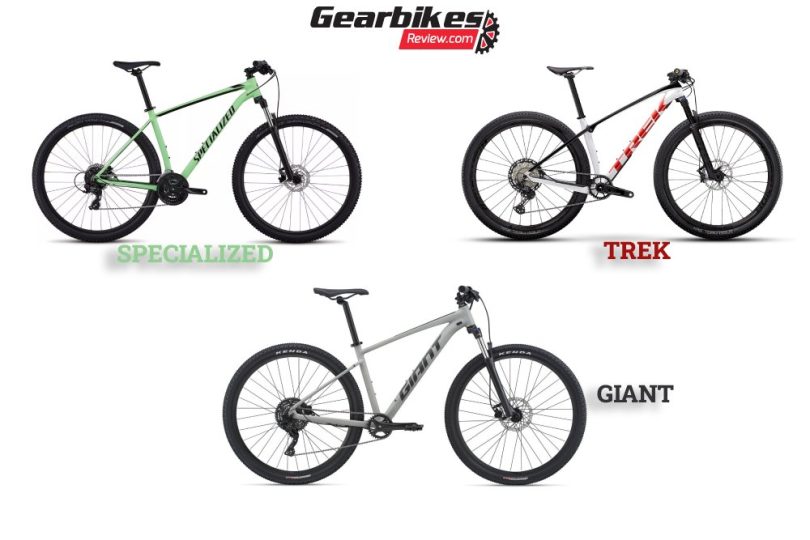
Bikes are a versatile concept. We can ride them to work in the morning or we can throw them around a dirt trail at 70mph. Either way, you need the right bike for the job. So which brand is best?
The trifecta of bike manufacturers: Specialized, Trek, and Giant. Each continues to innovate in the industry and produce very high-quality bikes, with Giant being the largest bike company in the world.
What you drop the cash on depends on what you want and what you expect of each brand.
Specialized
- High-end manufacturer
- Bikes for every rider
- High-quality aluminum manufacturing
- Broad product range
- Big drop in quality at lower price ranges
- Third-party components
- Both entry-level and high-end models
- First-and second-hand warranty
- High-quality build
- Broad range of bikes
- Low depreciation
- Higher chance of needing to upgrade certain components
- Certain models aren’t very customizable
- Largest bike manufacturer in the world
- Bikes made for every kind of ride
- Innovative company with expertly crafted bikes
- Large variety
- Cheaper than other brands
- Quality build
- A go-to for mountain biking
- Some E-bike models suffer unreliability
- Rapid depreciation on most models
Specialized vs Trek vs Giant – What’s the Best?
1. product range.
Specialized manufacture around 220 different bikes across 41 models, offering a bike for any situation whether it’s on-road, trail, electric, or fitness (among others).
Trek produces around 420 different bikes across 10 categories, with bikes for any road, mountain and trail , women and children, and so on.
Giant offers bikes across the subsets of:
- Cross and gravel
As the largest bike manufacturer globally, they have a large number of new and old bikes you can choose from.
It’s difficult to accurately say who offers the widest variety of bikes. Trek certainly produces many different bikes while Specialized clearly offers the broadest variety of models. Too difficult to decide in our opinion!
2. Brand Reputation
Specialized is known for their high-end bikes and focus on the wealthy consumer. They have a strong presence in the trail and racing side of biking sport but have been marred with negative press in the past after taking up several lawsuits over copyright and intellectual property infringements.
Trek are seasoned race winners, with often more than double the race wins than their next competitor, Giant. They’re known for expensive bikes that push the edges of bicycle technology and dominate the North American market.
Giant hasn’t gotten to their position as a leader in bicycle manufacturing unliked. They’re a well-respected and heavily established producer of a wide range of simple and advanced bikes. Given their lower price range, they certainly appeal to a larger number of buyers.
Trek and Giant have seen little bad press over their lifetimes. Between the two, there’s barely a comparison.
Specialized, perhaps suggested by the name, is a high-end manufacturer. They place a lot of emphasis on bike design and technology, often catering more towards those without a money problem.
Trek is very focused on their R&D. Each new bike is an innovation, and it shows in the price and design of the bike. They optimize for everything and continue to push the boundaries of biking tech.
Giant tries to produce for the masses. They have had breakthroughs and continue to make them, but it’s easy to see that getting the bike off the factory floor is more important than keeping it in the design phase.
The design winner depends on what you’re looking for. If you want something unassuming, try Giant’s catalog. If budget isn’t a problem and technology is your deciding factor, Trek or Specialized are bound to have the bike for you.
4. Frame materials engineering and technology
Specialized optimize their frames with SuperLight frame technology, making their alloy frames incredibly light and just as strong
Carbon fiber and aluminum technology is Trek’s focus. They use their proprietary OCLV carbon fiber manufacturing technique and alpha aluminum frames.
They use their innovative Aluxx aluminum in alloy frames and ACT (Advanced Composite Technology) in their carbon frames.
All three brands have impressive materials engineering employed in the manufacture of their bikes, though it seems Specialized lack a dedicated carbon fiber manufacturing process. Giant and Trek both win in their technology.
Specialized tend to use active braking (explained below), isolating the (often hydraulic) disc brakes from the suspension.
Trek solved the problem of interdependence between the brakes and the rear suspension where braking would lock the suspension with the Active Braking Pivot (ABP). ABP keeps the rear suspension working normally whenever the rider hits the brakes.
Trek will often use hydraulic disc brakes on most of their bikes.
Similar to Trek’s ABP, Giant uses their proprietary Maestro braking system that keeps suspension active while braking. They also tend to employ hydraulic disc brakes.
Each brand uses essentially the same technology, mostly spearheaded by Trek.
6. Suspension
Specialized make use of smart suspension technology with adaptive stiffness depending on the terrain. Also, when it comes to their mountain bikes, Specialized uses Future Shock Rear (FSR) technology to smooth out the bumps.
Full-floater and RE:Aktiv suspension technologies are both hallmarks of Trek bikes. Pedaling with a full-floater is much smoother while RE:Aktiv gives you more power uphill.
Another of Trek’s suspension innovations is Active Pivot Point, giving you more clearance over obstacles.
Giant’s patented Maestro system is a useful piece of technology when it comes to pedaling power uphill and during a race.
As usual, Trek bikes are a technology hotbed, featuring many more innovations than their rivals.
7. Drivetrain
- SRAM XX1 Eagle carbon crankset
- SRAM X01 Eagle 10-50t cassette
- Rear SRAM XX1 Eagle derailleur
- Fox Float 34 Factory FIT4 fork
- 130mm travel length
- 12 speed SRAM XO1 crankset
- Float 36 Grip 2 fork on an SRAM XG-1275 Eagle 10-50t cassette
- Rear SRAM Eagle Dub derailleur for incredibly smooth gear shifts
- 12-speed SRAM SX Eagle gear
- 11-50t cassette and SRAM SX Eagle Dub crankset
- Radon 34 Boost fork
- Tubeless-ready Giant XCT rims
- MaxxisForekaster 29” tires
You’ll notice there’s a lot of overlap in the components each brand uses in their bikes. All three opt for the SRAM Eagle gears and/or cassette and crankset. However, only Specialized use the XX1 carbon crankset, making their chainring more durable than their competitors’
8. Warranty
For in-house forks and bike frames, Specialized offers a lifetime warranty, but only a two-year warranty on the frame paint.
For the frame paint and the suspension, Trek has a one-year and five-year warranty respectively. For proprietary swing arms and frames, Trek has a lifetime warranty.
On all frames, Giant has a limited lifetime warranty. This means frames are protected by warranty for manufacturer defects and not wear and tear from ownership. Like the others, Giant offers a one-year warranty on frame paint but a 10-year warranty on forks.
Trek’s warranties cover a larger number of components.
9. Price range
Excluding children’s models (which go down to $190), Specialize produces bikes costing in the range of $500 to $16,000.
Trek will set you back between $600 and $17,200. They have some low-priced entry-level bikes that really fill out the product range.
Giant bikes range in price from around $1,800 to $10,000.
Given Giant’s…giant market share, they’re able to produce at lower costs as they bulk buy components and benefit from large manufacturing economies of scale.
Giant are generally less expensive; however, you can get a small bike suitable for an adult for under $1000 from Specialized. So, when it comes to which is cheaper between Giant and Specialized, it depends what you’re buying.
Key differences at a glance
Specialized, trek, and giant – which one should you buy.
It comes down to what you’re looking for as each brand excels in different areas.
Specialized is a high-quality, high-end manufacturer with a serious focus on a refined, expertly crafted riding experience. Quality drops off at lower price-tags as the passion in Specialized just isn’t there.
Trek explores the cutting-edge, packing as much new technology into each new bike as they can. This is very clearly reflected in the average price of a Trek bike. So, if you’re looking for the most innovative thing money can buy, Trek is the bike for you.
Finally, Giant is the layman’s bike in general. They pour a lot of time and energy into their MTBs, but overall, they make a bike for everyone and every budget.
Q. Is Trek owned by Specialized?
No, Specialized is owned by founder Mark Sinyard. Trek is a subsidiary of Roth Distributing Co.
Q. Where does Specialized produce their bikes?
Specialized produce almost entirely out of Taiwan.
Q. Where does Trek produce their bikes?
Trek manufacturing is across the Netherlands, Germany, Taiwan, and China.
Q. Where does Giant produce their bikes?
Giant is a Taiwanese bike manufacturer with manufacturing facilities in Taiwan, China, Hungary, and the Netherlands.
You may also like

The TST Defender – A Powerful and Plush Fat Tire...

How Long Does a Bike Chain Last? : Pro-backed Guide

How to Find a Stolen Bike? : Things to Do Before...

How to Prepare for a Long Bike Ride? : A Complete Guide

Electric Bike Adventures: Unveiling Scenic Outdoor...

Why is My Bike So Hard to Pedal? : 10 Reasons &...
About the author.
Joshua Fernand
I’m a 38-year-old father of two and an avid adventurer with a history of road bike racing in the mountains. I’m also a member of the Mountain Top Cycling Club, Colorado. I took part in several cross country rides across the states with my cruiser bike.
Tell you what, each tour was over a thousand miles long and it wouldn’t have been possible if I hadn’t studied bike mechanics. Most of the fixes required during my travel had to be fixed by myself. Cruiser became my favorite category since then.
Leave a Comment X
Save my name, email, and website in this browser for the next time I comment.
- Help Center
- Chat with a Ride Guide
- 1-866-401-9636
- Retail Store
- Bike Services
Reset Password
We will send you an email to reset your password.
Don't have an account? Create an account
Create Account
Already have an account? Sign In
- Favorite your products & save them to your account
- Save a search & get notified when new products drop
- Be first to know about the latest events & promotions
Bike Finder
Results have arrived, deep dive: specialized diverge vs. trek checkpoint.
The Specialized Diverge and Trek Checkpoint are top dogs in the gravel bike world, but they take different approaches to taming gravel. We compare their tech and features, so you can decide which is best.
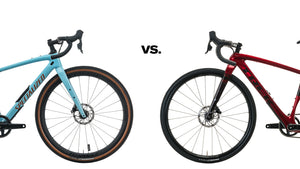
Written by: Bruce Lin
Published on: May 20, 2022
Posted in: Gravel
When it comes to shredding gravel, there are two bikes that rule the roost: the Specialized Diverge and the Trek Checkpoint. Not only are they both high-tech, highly capable gravel machines, but they are also two of the best-selling bikes in the business.
If you’re interested in a Diverge or Checkpoint, how do you choose between the two? Unfortunately, we can't definitively answer which bike is “better” (sorry). Instead, this comparison aims to explore the history of the two bikes, the technology they use, and the features they offer so you can make the right choice.
- Diverge vs. Checkpoint: overview
- Future Shock vs. IsoSpeed
- Tire clearance
- Frame weight
2015-2017 Diverge
2018-2020 diverge, 2021+ diverge, 2018-2021 checkpoint, 2022+ checkpoint.
- Final thoughts
[button] Shop gravel bikes [/button]
Diverge vs. Checkpoint: Overview

The Diverge and Checkpoint take two different approaches to improving comfort on gravel roads. Specialized partnered with Formula 1 innovators, McLaren Applied Technologies, to design Future Shock, which uses a spring in the head tube that suspends the rider with 20mm of vertical travel. Specialized chose to use a coil spring system because it can actively absorb the frequencies commonly encountered on road and gravel without adding excessive weight. Springs are also less complex and have less stiction than traditional suspension systems (e.g., an air fork on a mountain bike) and require less force to initiate their travel.
Specialized claims that because Future Shock is positioned under the stem, it doesn’t affect handling or efficiency. The wheelbase doesn’t change through the suspension's travel and there’s no power loss due to a suspension fork compressing. Future shock only suspends the front of the bike. At the rear, the Diverge relies on high-volume tires and seatpost flex for comfort. The top tube slopes down and the seatpost is clamped low to provide ample room for the post to flex when hitting bumps.

Unlike Future Shock, Trek’s IsoSpeed Decoupler system is a passive system with no moving parts. It provides extra comfort without the weight or complexity of suspension. The top tube is split at the seat tube junction and the seat tube passes through it. The tubes don’t directly touch but are joined by a horizontal shaft and two sealed cartridge bearings. The seat tube can flex fore and aft a few degrees, and between the tubes are two additional elastomer inserts. This helps mute vibrations and bumps that travel through the frame to the saddle but maintains lateral stiffness to keep the bike feeling fast and efficient. The IsoSpeed system used on the high-end SLR model will feel a bit firmer thanks to the added damper.
Both versions of IsoSpeed require little to no maintenance and the bearings and other components are replaceable if needed. The Checkpoint doesn’t use IsoSpeed at the front of the bike because Treks claims high volume gravel tires provide enough compliance, so adding front IsoSpeed is not worth the extra weight or cost.
When it comes to choosing between the two, I suggest riders consider where they value comfort more — in the front or rear. Future Shock is great for riders who experience pain or fatigue in their hands during rough or long rides, while IsoSpeed is similarly good for riders who experience sit bone or lower back pain.
Specialized Diverge vs. Trek Checkpoint: Tire clearance

Until the release of the 2021 Diverge, the Checkpoint was the clear winner when it came to tire clearance. Now, I would call it a draw. Even though the latest Diverge can clear 47mm tires, tires in the 40-45mm range are the most common. Also, even though it was never officially endorsed by Trek, the 2018-2021 Checkpoint can likely fit 650b wheels and tires with no issues.
Specialized Diverge vs. Trek Checkpoint: Geometry
By comparing geometry, it’s clear to see that the latest versions of the Diverge and Checkpoint have moved toward longer reach and chainstays. This has been a common trend for both gravel and mountain bikes because longer bikes are more stable, especially on off-road terrain. Lower bottom brackets and slacker head tube angles also add more stability. One thing to take note of is the stack height. In general, the checkpoint has 10-20mm less stack than a comparable Diverge.
If you lack confidence when going fast or cornering on rough or loose gravel, then longer, lower, and slacker geometry might be better for you. If you prefer more agility or do a lot of road miles, you might prefer shorter, higher, and steeper geometry. Check out our guide to bike geometry to learn more.
Specialized Diverge vs. Trek Checkpoint: Frame weight
The frame weights listed above are for 56cm frames without a fork. I’ve only included weights that have been published online and are easy to find, so you might notice that information is missing for earlier Diverge models because Specialized has not provided it. Also, these are the manufacturer's claimed frame weights, so take them with a grain of salt.
Overall bike weight will mostly come down to the components, but for both the Diverge and the Checkpoint, you can expect carbon models to weigh in between 18-22 pounds, which is very respectable for bikes meant to handle a lot of off-road abuse. Comparing current the top-spec S-Works and SLR models, the Checkpoint just barely wins out. The weights are all close enough though that I don’t consider it a deciding factor.
[newsletter]
Diverge vs. Checkpoint: History
If you're curious to learn how these two models have evolved over the years, or want to understand the differences between various generations, read on for a deep dive.
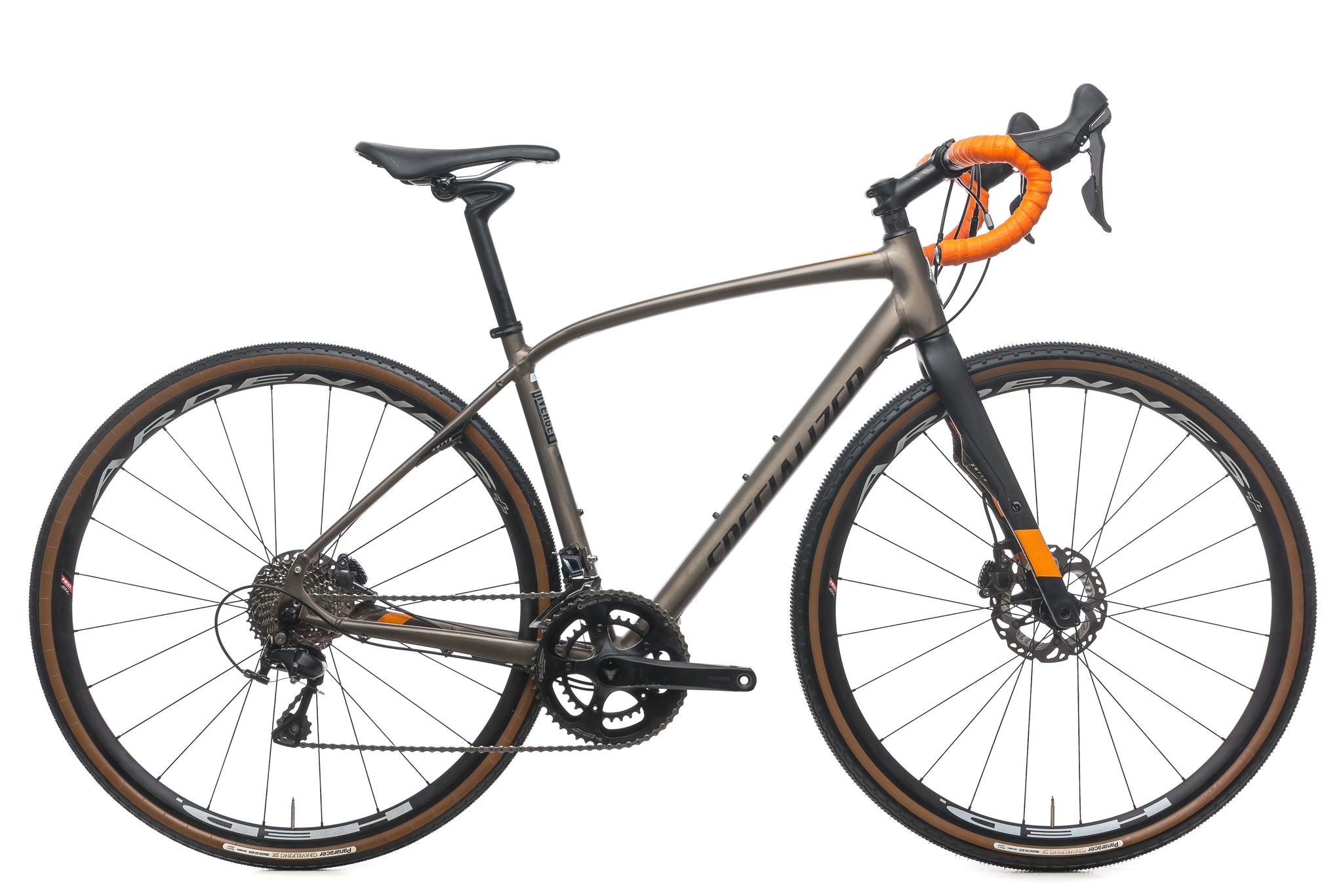
The Diverge geometry matched the Specialized’s Roubaix endurance road bike, with the one difference being more standover height. The frame came in 10r carbon, SmartWeld E5 aluminum, or basic A1 alloy, and had a large focus placed on compliance. The E5 aluminum frame was as compliant as a carbon Roubaix SL4 frame, with the carbon version being another 6% more compliant. Carbon and E5 frames both used vibration-damping Zertz elastomer inserts in the fork and seat stays, while A1 alloy models use Zertz inserts in the fork with curved seatstays to increase compliance.
[product-block handle="specialized-diverge-carbon-gravel-bike-2015-large"/]
The bottom bracket used Specialized’s OSBB standard, which is essentially the same as BB30. Notably, the first generation Diverge uses a 15x100mm front axle and Specialized’s proprietary SCS rear axle spacing with a 12x135mm rear axle. This unique axle spacing can limit future wheel upgrade options.
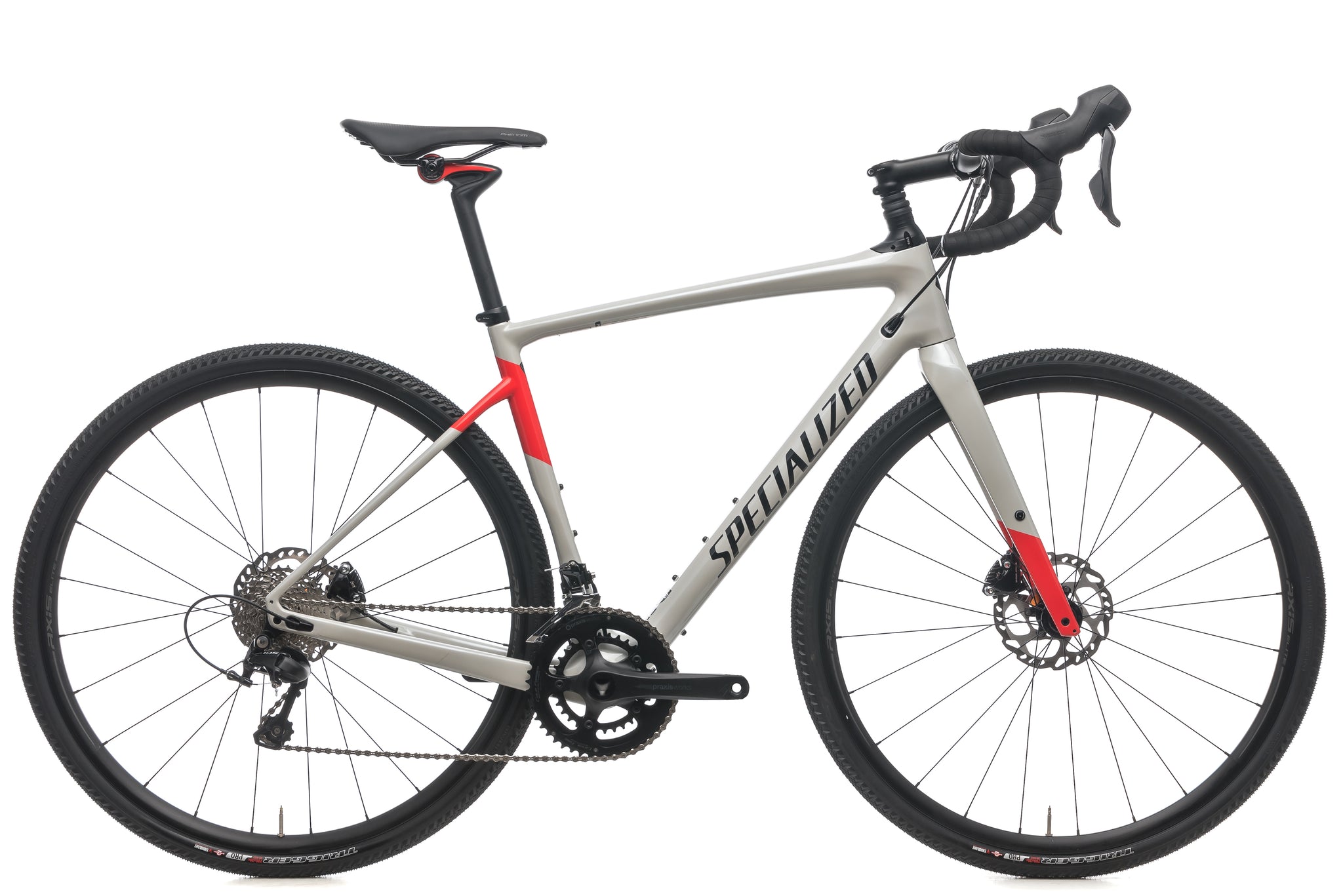
The second-generation Diverge could fit 700c x 42mm or 650b x 47mm tires. The geometry is more stable than its predecessor, with taller stack (mostly due to the addition of Future Shock), lower bottom bracket, longer chain stays, and a slightly slacker head tube.
Then there’s Future Shock, which completely replaced the old Zertz inserts. First introduced on the 2017 Roubaix, Future Shock is a suspension system located under the handlebars that provides 20mm of travel to absorb bumps and increase comfort and control on rough terrain. Springs can be swapped between soft, medium, and hard options to suit different rider weights and preferences.
[product-block handle="2019-specialized-s-works-diverge-l-6"/]
Second-generation Diverge frames came in 9r carbon (which is slightly heavier but also tougher and more compliant than 10r carbon) and E5 aluminum versions. Specialized also added an S-Works model that used high-grade 11r carbon and reduced frame weight to a stunning 880 grams. The axles were updated to standard 12x100mm front and 12x142mm rear thru-axles. The bottom bracket was changed to BB386. Note that the E5 aluminum models are limited to 38mm tires in the rear and the entry-level E5 sport model does not have Future Shock to reduce cost.
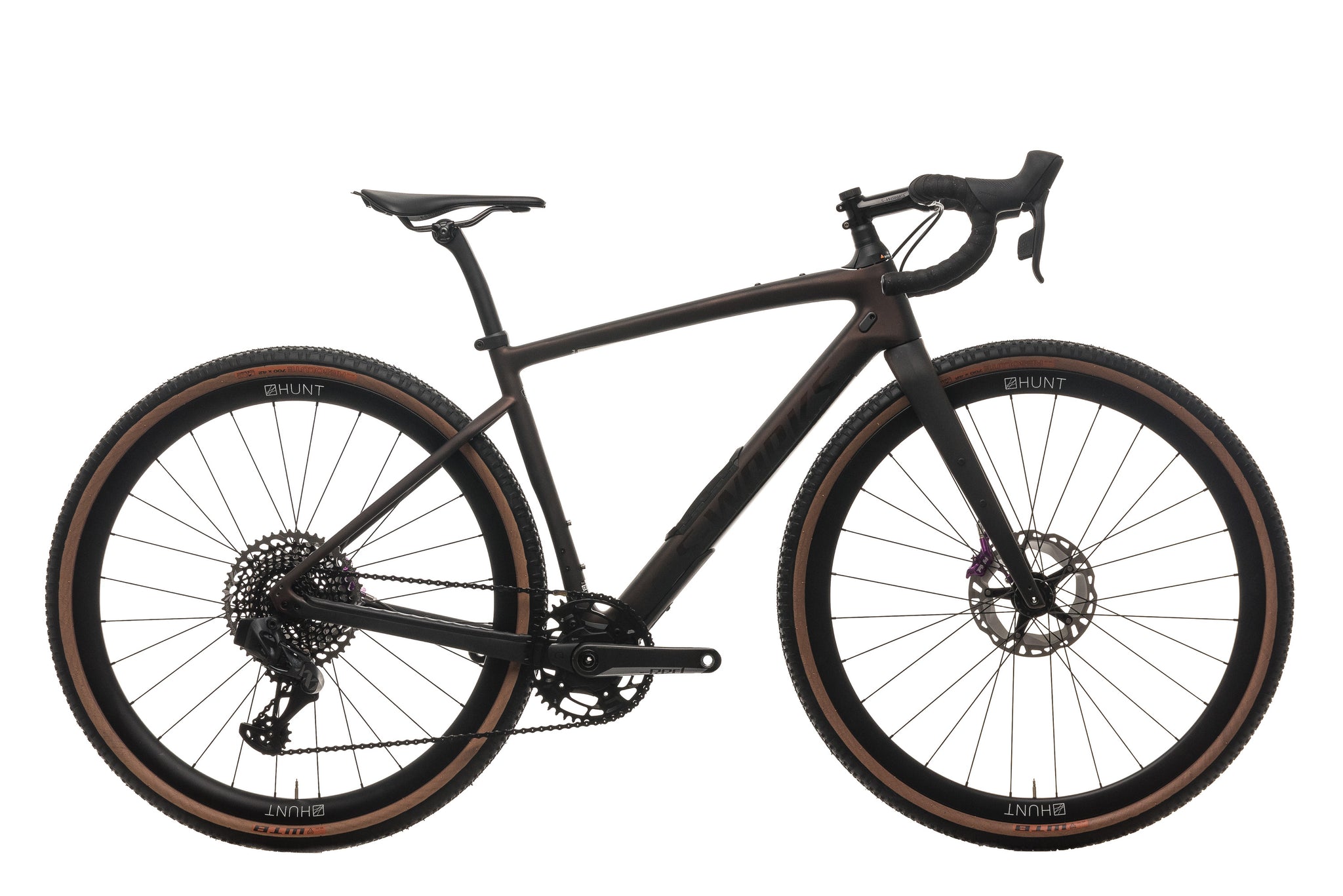
Thanks to a narrower chain stay design, tire clearance has grown to allow for massive 700c x 47mm or 650b x 2.1” tires. The head tube has been slacked out by about a degree across all sizes to increase off-road stability. And an internal S.W.A.T. box storage compartment has been added to the down tube on carbon models.
[product-block handle="2021-specialized-diverge-expert-l-1"/]
Comp Carbon and above models (which use 9r carbon) get the new Future Shock 2.0 system which adds hydraulic damping to keep it more composed in rough terrain and an adjustment knob that allows riders to toggle between firm and soft settings on the fly. Sport Carbon models (which use lower grade 8r carbon) use Future Shock 1.5, which is similar to the original Future Shock used on the previous generation with no damper and swappable springs.
[product-block handle="2022-specialized-diverge-expert-l"/]
E5 aluminum models do not have Future Shock, with the exception of the E5 Evo model which uses Future Shock 1.5. The E5 Evo is a unique option that takes inspiration from mountain bikes with flat handlebars, a dropper seatpost, longer reach, and a slacker 70-degree head tube for all sizes. It also only comes in S, M, and L sizes. It’s a fun option for riders who want to explore singletrack trails and gnarlier gravel roads.
Finally, in a move that’s sure to please home mechanics, all carbon and aluminum Diverge models now have traditional BSA threaded bottom brackets.
[button] Shop the Specialized Diverge [/button]
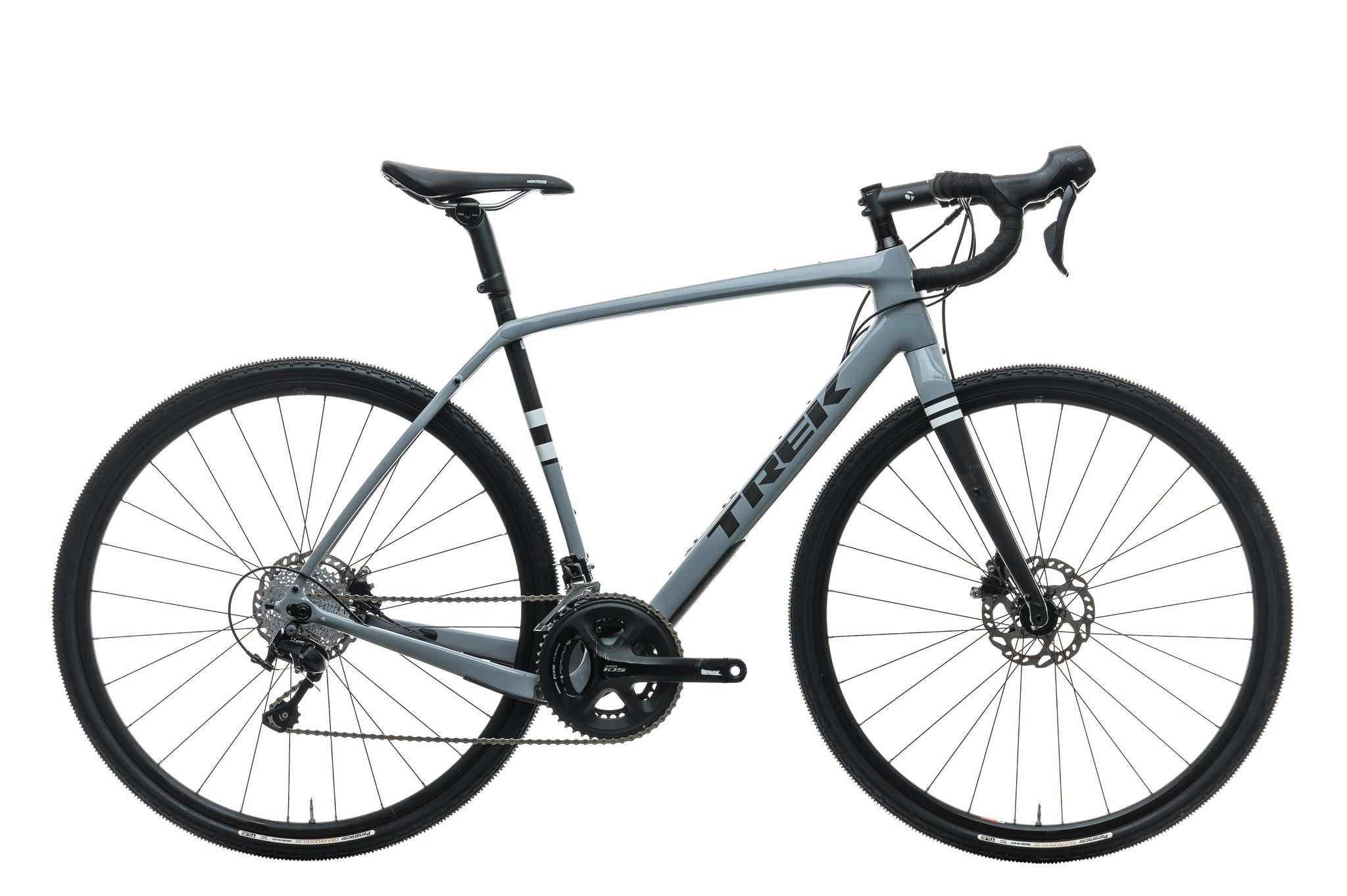
Tire clearance was good from the get-go, with room for wide 700c x 45mm tires. The geometry was carried over from the agile Boone cyclocross bike, with the exception of a lower bottom bracket. Trek claimed this combination of a nimble front end with a lower center of gravity was ideal for riding on fast off-road surfaces. But the Checkpoint also came with Trek’s “Stranglehold” adjustable dropouts. For riders who desired more stability, the rear end could be lengthened up to 15mm to mellow things out. These sliding dropouts also allowed for easy singlespeed setups.
The standout feature though is Trek’s IsoSpeed Decoupler, found on carbon models. IsoSpeed physically decouples the top tube from the seat tube and separates them with elastomers. This allows the seat tube to flex so it can absorb vibrations and bumps, enhancing rider comfort.
[product-block handle="2021-trek-checkpoint-sl7-l"/]
The first generation Checkpoint came in either an SL carbon or ALR aluminum frame. The ALR frame does not have the IsoSpeed Decoupler. SL frames used Trek’s OCLV 500 carbon and a BB90 bottom bracket. ALR frames used a standard PF86 bottom bracket.

The Checkpoint has been so popular that Trek decided to add a new SLR carbon model to the line-up, which sits above the SL carbon and ALR aluminum models. The SLR model has a lighter frame built with higher-grade OCLV 700 carbon, and it uses Trek’s latest Top Tube IsoSpeed Decoupler. Top Tube IsoSpeed features an additional elastomer damper in the seat tube to minimize bouncing. It’s also tuned for specific frame sizes, so small frames intended for lighter riders are more compliant than large frames.
[product-block handle="2022-trek-checkpoint-sl-6-etap-m"/]
SL Carbon checkpoints retain the original IsoSpeed Decoupler design, but they switch from an integrated seat mast to a standard 27.2mm seatpost, which means riders can now run a dropper post if desired. ALR aluminum models still don’t use IsoSpeed but get the same geometry updates as carbon models.
Trek has also added internal down tube storage to the SLR and SL carbon Checkpoint and all Checkpoint models now use threaded T47 bottom brackets.
[button] Shop the Trek Checkpoint [/button]
Specialized Diverge vs. Trek Checkpoint: Final thoughts
If you’ve made it this far, you’ve learned pretty much everything you need to know before purchasing a Specialized Diverge or a Trek Checkpoint. So how do you choose between the two? There are four main factors to consider when comparing them:
- Tire Clearance
- Personal taste
The biggest deciding factor is Future Shock vs. IsoSpeed. Every rider’s body is different, and it’s up to you to decide whether you value front-end or rear-end comfort more. For example, I struggle with hand pain on long gravel rides but generally have no issues with my saddle area, so I’d prefer the Diverge. Some riders, however, might not like the active nature of the Future Shock and would prefer the simpler, more passive action of IsoSpeed.
If you intend to run wide 45mm tires, then it will be easier with the Checkpoint. With the Diverge, you’ll be limited to 2022+ models, which may be more expensive and harder to find. Also, if you like having a low handlebar position, it is easier to achieve on the Checkpoint because it has significantly less stack height than the Diverge. Because of the Future Shock, second-and third-generation Diverges have fairly tall front ends. This is great for comfort, but racers often like having lower front ends for better aerodynamics.

Ian Boswell's 2021 Unbound Gravel 200 winning Specialized Diverge. Photo: Wil Matthews.
Finally, both bikes will perform extremely well on gravel and mixed terrain, so it might just make sense to pick the bike you think looks better, or the brand you find yourself more loyal to. If you’re a racing fan, it’s worth noting that the Diverge is the current defending champion of Unbound Gravel 200, the world’s premier gravel race.
Recently, I’ve been digging the look of the new Diverge, so that’s what I’m leaning toward buying. What bike would you choose and why? Let me know in the comments!
More Gravel

Features, Gravel, Guides, Latest May 15, 2024
6 Tips to Improve Cornering and Descending on Your Gravel Bike

Features, Gravel, Guides, Latest May 8, 2024
How Much Training Do You Need to Finish Unbound Gravel?
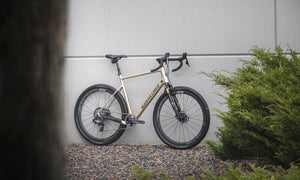
Bikes, Features, Gravel, Latest May 6, 2024
This Santa Cruz Stigmata + Fox 32 Taper-Cast Was Too Cool To Sell (As Is)

Features, Gravel, Latest, Tech Apr 30, 2024
The Bike Computer & Electronics I Rely on for Gravel Racing
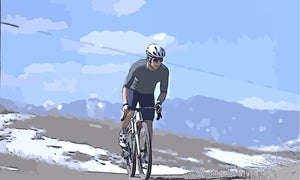
Features, Gravel, Guides, Latest Apr 24, 2024
My 2024 Unbound Gravel Kit: Can Clothes Help You Ride Faster?
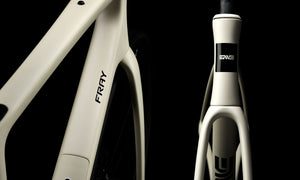
Bikes, Gravel, Latest, Road Apr 11, 2024
ENVE Fray: The Definitive All-Road Bike? The Coolest for Sure.

Features, Gravel, Guides, Latest Apr 10, 2024
The Best Gravel Bike Comfort Upgrades for Unbound (and Beyond)
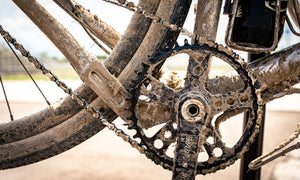
Features, Gravel, Guides, Latest Apr 1, 2024
Waxing Your Chain vs. Using Wet Lube for Dust, Mud, & Unbound Gravel
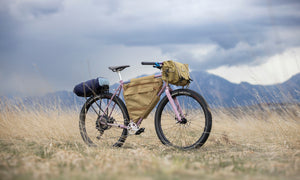
Bikes, Features, Gravel, Latest Mar 28, 2024
This Crust Bombora Shows Us a Different Side of Cycling
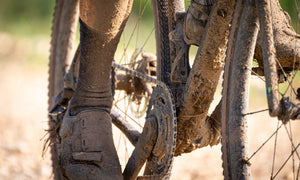
Features, Gravel, Guides, Latest Mar 25, 2024
1x vs. 2x: What Drivetrain Should You Race at Unbound Gravel?
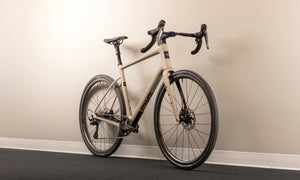
Bikes, Features, Gravel, Latest, Tech Mar 22, 2024
This ENVE MOG x Classified Bike Might Represent the Future of 1x

Features, Gravel, Guides, Latest Mar 21, 2024
Choosing The Best Tire Setup for Racing Unbound Gravel
New arrivals.

Certified Pre-Owned
BMC Roadmachine 01 FOUR Road Bike - 2023, 58cm

Specialized S-Works Aethos Road Bike - 2022, 49cm

Ibis Ripley AF Mountain Bike - 2022, Medium

Factor Ostro VAM Road Bike - 2022, 56cm

Specialized Turbo Creo SL Expert Road E-Bike - 2021, Small


Giant TCR Advanced Pro Road Bike - 2020, Medium

Cervélo Caledonia-5 Road Bike - 2021, 51cm

BMC URS THREE Gravel Bike - 2020, Small

Marin El Roy Mountain Bike - 2021, Grande

Cannondale SuperSix EVO Carbon Disc 105 Road Bike - 2020, 56cm

Trek Domane SLR 9 Project One Road Bike - 2022, 58cm

Specialized Turbo Creo SL Evo Gravel E-Bike - 2020, XX-Large
OUTSIDE FESTIVAL JUNE 1-2
Don't miss Thundercat + Fleet Foxes, adventure films, experiences, and more!
GET TICKETS
Powered by Outside
Specialized Roubaix vs. Trek Domane: Clash of the endurance bike titans
Heading out the door? Read this article on the new Outside+ app available now on iOS devices for members! >","name":"in-content-cta","type":"link"}}'>Download the app .
When it comes to endurance road bikes, there exist two outright titans of the segment: the Specialized Roubaix and the Trek Domane SLR . Specialized arguably created the segment when it launched the first Roubaix in 2004, and although Trek followed closely afterward with the Pilot, it wasn’t until the company launched the Domane in 2012 that it could really go head-to-head. Ever since, the two bikes have been locked in a battle for sales supremacy.
Endurance road bikes are all about comfort and confidence, and the latest versions of the Roubaix and Domane are unquestionably the most progressive examples either company has put forward to date. Both feature new — and truly legitimate — pavement-specific suspension technologies designed to smooth out rough roads, powerful disc brakes, stable handling with back-friendly fits, and clearance for big, cushy tires.
The Roubaix and Domane are very similar, but they differ greatly on the road — and in this hotly contested market, there can be only one winner.
The contenders
Specialized introduced the first Roubaix more than ten years ago, and in hindsight, that debut was little more than a toned-down race bike. The handling was slightly more stable, the ride quality smoother and more composed, the rider position more upright and relaxed. Zertz elastomeric inserts at the seatstays and fork blades supposedly helped attenuate road vibration (although it was highly debatable whether they ever worked), but the tires were still just 23mm wide.
That original Roubaix may not pass the sniff test for what an endurance road bike should be in modern terms, but it had a massive impact on the market back then. Whereas virtually every mainstream road bike at the time simply mimicked the look, feel, and fit of full-blown racing bikes, the Roubaix marked the first time a major brand took more of an everyday-rider approach instead of forcing everyone to ride bikes that didn’t make sense for what they were doing.
More than a decade later, the new Roubaix still holds rider comfort at the top of its design priorities, but it bears little resemblance to its grandfather.

Rider comfort is still very much at the top of the bike’s list of design requirements, but in place of those squishy Zertz inserts is the far more radical FutureShock coil-spring short-travel suspension cartridge up front, paired to a novel approach to a traditional solution out back.
Unquestionably the most intriguing aspect of the Roubaix’s design, FutureShock offers up 20mm of movement via a set of telescoping tubes, a pair of simple steel coil springs, and low-friction roller bearings — a concept very similar to Cannondale’s earliest Headshok designs. But whereas a conventional suspension fork moves the front wheel up and down below the frame, Specialized positions FutureShock above the head tube; the front wheel stays put while the bar and stem move up and down.
According to Specialized, conventional suspension forks are designed for bigger impacts. FutureShock, however, is aimed more at reducing vibration and protecting the rider’s upper body from fatigue over longer rides.
At the opposite end, the new Roubaix is more straightforward.
Seatpost flex is one of the primary sources of rider comfort while sitting in the saddle, and bike designers have long understood that decreasing the seatpost’s diameter and increasing its effective length can enhance that effect. As such, the new Roubaix’s seatpost collar is now 65mm lower than usual — well below the seatstays, in fact — and the seat tube opening is flared above that to provide room for the post to move. In addition, the Specialized CG-R carbon fiber seatpost incorporates an unusual kink up top that promises even more movement, and while the company could have gone further with a more undersized seatpost diameter (like Cannondale and others), the 27.2mm size is the smallest option that still allows for easy replacement as needed.

Trek’s latest Domane SLR endurance platform presents a very different approach to the same issue.
On any bike, it’s not just the seatpost that flexes when a rider hits a bump; the entire seat tube bends like a diving board. Frame designers — particularly those working with carbon fiber — have long attempted to enhance that movement without compromising other aspects of a frame’s performance.
With the Domane SLR, Trek incorporates the groundbreaking IsoSpeed “decoupler” that was first seen on the original Domane, launched in 2012. A mechanical pivot at the intersection of the top tube and seat tube separates those two elements from each other (hence the “decoupler” moniker). This allows the seat tube to flex much more than usual when hitting bumps, as it no longer is constrained by the top tube or seatstays, yet it also keeps the frame from flexing in ways you don’t want it to.
This latest version ups the ante by offering user-adjustable ride stiffness, tunable with a handy vertical slider that effectively changes the length of that diving board by altering the fulcrum point — just like what real-life competitive divers do, in fact.
The effectiveness of IsoSpeed has rarely been disputed, but earlier Domanes were criticized for delivering an unbalanced ride with the front end decidedly less cushy than the rear. The new Domane SLR, however, now incorporates a Front IsoSpeed mechanism to match. Here, the upper headset bearings sit in a pivoting cradle instead of the usual fixed seat, allowing the steerer tube to flex more than usual when hitting bumps. And just like with the rear IsoSpeed setup, the isolated two-dimensional movement on Front IsoSpeed promises to limit the undesirable out-of-plane movement that can yield unpredictable handling.

Otherwise, the new Roubaix and Domane SLR are quite similar to each other.
Typical for the segment, the geometry on both bikes features mellower handling and more upright riding positions relative to full-blown race bikes: the head tube angles are slacker, the front ends are taller, the wheelbases are longer, and the bottom brackets are lower, all of which prioritize stability and confidence over agility.
Also standard on both the Domane SLR and Roubaix are flat-mount disc brakes , 12mm-diameter thru-axles, and room for tires up to 32mm-wide (the Roubaix is disc-only, but the Domane SLR is also offered with rim brakes). A little extra practicality is on tap for the Trek with its hidden fender mounts; the Roubaix incorporates fittings for Specialized’s optional SWAT storage box down by the bottom bracket.
Carbon fiber construction keeps the frame and fork weights similar for both, too. Trek claims an official weight of 2,030g for its top-end 56cm Domane SLR Disc model, including the frame, fork, headset, integrated seat mast topper, front and rear IsoSpeed units, and all associated hardware. Specialized claims 1,975g for a 56cm Roubaix under similar conditions (and including the FutureShock cartridge).
For this head-to-head review, I rode both bikes for an unusually long period as compared to typical bike tests — 16 months for the Domane, five months for the Roubaix. I tackled a wide range of both paved and unpaved surfaces throughout, and also sampled a collection of wheels, tires, and saddles on both machines to get as well-rounded an opinion of their respective characters as possible.
It’s also worth noting at this point that I’m not comparing specific models here, but rather the performance of each platform in general. Both bikes are offered in a wide range of build kits and multiple grades of carbon fiber, and while the Domane SLR tends to be slightly more expensive for a given spec, they’re close enough to be considered direct competitors.
On paper, these bikes target the exact same type of rider and promise similar performance benefits. But in the end, they couldn’t be much more distinct.
The same, but different
The coil-spring front suspension on the Roubaix is easily the most polarizing feature of either bike so it makes sense to discuss that first. Say what you will about the FutureShock’s aesthetics, but in terms of function, it works far better than one might expect — myself included.
Coming from a mountain-bike background, I initially questioned Specialized’s decision to omit any sort of damping mechanism in the FutureShock design. But in fairness, it’s precisely that approach that allows the Roubaix front end to be so effective at protecting your hands from vibration. FutureShock isn’t so much a way to absorb individual bumps as it is a filter for the road buzz that can be so disruptive on longer rides. Provided you take the time to select the right spring for your weight and riding style — there are three different spring rates available — your hands essentially float in the sweet spot of the spring’s travel range while the front of the bike busily follows the contours of the road beneath you.
FutureShock isn’t just about comfort, either; there’s also a traction benefit, which I happily exploited while racing the mixed-surface Boulder Roubaix race earlier this year, where tires tend to skitter through the many loose-over-hardpack dirt turns that punctuate that course, and washboard sections make it hard to keep the front end on the ground. With FutureShock, I was able to push down harder on the front end than I normally would have, and the tire stayed more confidently planted for faster cornering and more effective speed control.

That said, the lack of damping can feel clunky on bigger bumps, and with such stiction-free movement, the bars are constantly moving up and down to some degree, especially in out-the-saddle sprints and climbs. How disruptive you find that movement will depend on your preferences, but there’s no way to eliminate it completely, even with the stiffest spring option.
There’s also no getting around the FutureShock’s ungainly appearance. Effective or not, it certainly challenges widely accepted notions of how an elegant, high-end road bike should look.
Trek drew plenty of criticism with the original Domane for its unbalanced ride quality: the rear end was pillowy smooth, but the front end was comparatively harsh. With the Roubaix, it’s the exact opposite. FutureShock is incredibly effective on vibration, but less so on individual bumps. The extended seatpost, meanwhile, works better on unexpected impacts, but feels considerably stiffer overall.

The effectiveness of the flexing CG-R seatpost head is also dependent on the amount of saddle setback and rider weight: heavier riders and/or riders running more saddle setback will notice some benefit, but lighter riders who ride with their saddles further forward likely won’t be able to tell the difference between the CG-R and a conventional carbon seatpost.
In comparison, the Domane SLR is far more balanced. Front IsoSpeed rides firmer than the FutureShock cartridge on the Roubaix: the latter eradicating vibration almost completely; the former behaving more like a filter that removes the harshness from the road surface. Nevertheless, it’s still very effective, and offers a vastly smoother ride than what the previous-generation Domane front end once offered. To put it in automotive terms, FutureShock is like an old Cadillac; Front IsoSpeed is more akin to a well-tuned German suspension.

Meanwhile, I continue to be in awe of how well IsoSpeed works out back, and the adjustable version only improves it further still. Whereas the rear end of the Roubaix is still occasionally jarring and buzzy, the tail end of the Domane SLR varies from eerily smooth to firm-yet-comfy, depending on where you place the slider. The system does bob more under power than what Specialized uses on the Roubaix, but that softer feel also leaves you feeling fresher after a long day.
As a bonus, Trek has done a great job of integrating both IsoSpeed units into the Domane SLR frame. They’re nearly invisible from a distance, and in profile, there’s almost nothing in the Domane SLR’s shape to suggest that there’s anything unusual baked into the chassis.
Ride comfort isn’t the only thing that matters when it comes to endurance road bikes, though, and while the two bikes once again share plenty of character traits, there are still notable differences.
Trek has achieved the once-dichotomous performance characteristics that bicycle frame makers have sought for ages: excellent stiffness where you want it; copious amounts of give elsewhere. The front end is rock-solid when climbing or sprinting out of the saddle (steerer tube flex notwithstanding), and that huge main triangle yields little when mashing the pedals.

Meanwhile, the Roubaix, with its more slender and svelte frame construction, feels slightly less stout, but arguably livelier beneath you — less muscle, more personality.
Nevertheless, Trek may have strayed too far toward the stability end of the spectrum when it comes to the Domane SLR’s handling.
By nature, endurance bikes are built to lend their riders more confidence while on the road (or dirt). And while the Roubaix’s bottom bracket is already lower to the ground than what you’d normally find on a race bike, the Domane SLR is practically scraping the asphalt with a full 80mm of drop relative to the axles (70mm is more common on road bikes). Likewise, the Roubaix geometry also features shorter chainstays and shorter wheelbases across the board, as well as longer trail dimensions.
https://velo.outsideonline.com/2011/02/the-geometry-of-bike-handling/
As a result, the Domane SLR is stable almost to a fault, lending heaps of rider confidence when it comes to staying upright on the straight-and-narrow, but feeling less willing to snake its way through twisty stretches of road. The Roubaix is still steady in its demeanor, but not as extreme in its approach, requiring a less deliberate lean and less countersteering to hit your apexes. It’s nimbler through the corners, feels more eager to snake its way down through fast and twisty canyons, and generally seems more playful overall as compared to the sleepier Domane SLR.
Bits and baubles
Elsewhere, it’s more a question of subtle quirks and novel features when it comes to distinguishing between the Domane SLR and the Roubaix.
Both bikes are approved for tires up to 32mm-wide, but only Trek takes full advantage of that clearance from the factory. Depending on the model, Specialized equips each Roubaix model with 26mm or 28mm-wide tires instead, arguing that it’s a more appropriate size for the paved surfaces on which most Roubaix riders are expected to ride. Indeed, this contributes somewhat to the Roubaix’s spritelier personality straight of the box when riding on the road, but at the expense of multi-surface capability.
Specialized’s tire size argument holds some merit, but switching to 32mm-wide tires still substantially expands the comfort envelope in terms of what the Roubaix can handle. Given the minimal impact in terms of weight and rolling resistance, it’s a bit disappointing that Specialized decided against diving right into the high-volume pool straight from the factory, especially given the fact that the company obviously had no qualms building the entire bike around the FutureShock suspension unit.
CyclingTips Podcast, Episode 9: Rethinking road bike tire sizes and pressures
The Domane also has the edge in terms of all-weather capability with its discreetly integrated fender mounts, which still leave room for those meaty 32mm-wide treads. Curiously, no fender mounts are included on the Roubaix at all.
Specialized does incorporate mounts down by the bottom bracket for the handy SWAT storage box, however — a tidy plastic container with enough room for a spare tube, an inflator cartridge and head, a tire lever, and a multi-tool. It’s more an issue of aesthetics and convenience (cue the anti-saddle bag crowd), but neat to have nonetheless.

I wouldn’t normally go into depth on bottom brackets when comparing two bikes, but given the proliferation of press-fit systems — and the annoying creaking that often goes with them — it’s worth mentioning that Specialized has the upper hand here.
On the Domane SLR, Trek uses its long-standing BB90 system , which features a 90mm-wide bottom bracket shell with cartridge bearings that press into recesses that are molded directly into the carbon fiber structure. From an engineering standpoint, BB90 makes a lot of sense: it’s always better to space bearings further apart on a rotating shaft, there’s more room for bigger frame tubes and broader chainstay spacing for extra tire clearance, and with no additional cups required, it saves a decent amount of weight.
But those bearing seats can loosen over time, and while Trek offers slightly oversized bearings to fit in those situations, no other aftermarket solutions exist. Meanwhile, Specialized has reversed course from recent years, outfitting every new Roubaix (save for the top-end S-Works version) with a conventional threaded shell . It’s a few grams heavier, but far easier to service at home, and offers more aftermarket options and greater compatibility with different crankset formats.
Unfortunately, that advantage is negated by the Roubaix’s woefully clumsy headset adjustment.
Instead of the usual single preload bearing and headset cap sitting atop the steerer tube, a pair of grub screws sit on either side of the upper headset cover. The lower ones adjust the bearing preload, and the upper ones are tightened on top of those to lock the setting in place — in theory, not unlike how an old threaded headsets work.
In reality, though, having just two points of contact (instead of the fully circumferential one you would normally get by evenly pushing the stem down on top of the upper headset cover) makes it tricky to get a balanced adjustment. Tightening the upper set screws on top of those can also add extra unwanted preload, and there’s no way to directly counter-rotate the lower and upper set screws against each other; thread-retaining compound is a must.
As a result, I found myself on more than one occasion with a headset that was either tighter than I ideally wanted, or one that refused to stay tight. In general, the design feels disappointingly unfinished and crude, to the point where it arguably should never have left the engineer’s computer.
Decisions, decisions
Taking everything into consideration, then, which one would I choose?
Specialized deserves a lot of credit for incorporating something as radical as FutureShock on to its highest-volume road family. It’s undoubtedly polarizing, but it also works. That said, it also has a few rough edges, the ride quality of the rear end can’t keep up, and there are a few too many curious spec issues to ignore.
Had Specialized addressed all of this before the bike’s release, it might have been a closer fight. But as is, the Domane SLR’s ride quality is more balanced, it feels more refined and polished overall, it includes fender mounts for year-round usability, and at least in my opinion, its more cohesive design just flat-out looks better.
For me, my money is on the Domane SLR.

Popular on Velo
What’s it like to be an American cyclist living in France? Watch to get professional road cyclist Joe Dombrowski’s view.
Related content from the Outside Network
One way south, mountain bikers react to their first taste of non-alcoholic craft beer, video review: bmc urs 01 two gravel bike, kiel reijnen vuelta video diary: the painful decision to abandon.

Trek Domane vs Specialized Roubaix: Which Is The Best Endurance Road Bike?
In this post I’m going to compare the Trek Domane with the Specialized Roubaix. Which, if you’ve stumbled upon this post by accident and you’ve missed the tone of things round here, are both road bikes.
I’ll give an overview of the range of bikes available within each of these model families. I’ll also look at the particular features that are specific to the bikes, particularly in the area of comfort and ride smoothening.
This is part of a series of posts I’m writing, comparing the road bikes stables of these two large US bike manufacturers, Trek and Specialized. If you haven’t already, you should check out my introductory post on the subject .
Whilst other posts in this series (will) deal with aero bikes, lighter climbing bikes and gravel bikes, this one is really about my specialist subject (sort of): the bike for the older, more comfort-seeking gent.
Or ‘endurance road bike’, as the cycling industry seems set on calling it.
Why I Might Be Biased
I own a Trek Domane (a 4.3, which I bought in 2013). I really like it.
So much so that I just took it back to the frame, cleaned all the components, bought some new bits and then put it all back together:
I do therefore have an affinity towards it, and Trek in general.
That said, I would really like a Roubaix (or any high-end Specialized road bike), so I can’t see me being particularly negative about it, or the company as a whole, as I write this post.
Drool mode… engaged:

Bikes Mentioned In This Post
Er, this isn’t going to come as much of a shock…
- Specialized Roubaix – click here to visit the Specialized website to see the full range
- Trek Domane – click here to see the Domane at Trek
Note: this post contains affiliate links. If you click and buy something, I get a commission.
It’s All In The (Brand) Positioning
Trek and Specialized, pretty early on, both identified that the sort of bike frame that might suit the amateur MAMIL (more relaxed geometry; a bike that soaks up bumps in the road; a more upright riding position, all else being equal) was similar to that used by the pros in the more arduous cobbled classics races (sort of: the pros still use an aggressive riding position).
Thusly, with a bit of smart branding, we could buy a bike altogether more suited to our riding needs and low levels of flexibility whilst still pretending that we had a race-ready riding rig.
If Fabian Cancellara was riding the Domane and Tom Boonen the Roubaix whilst battling it out on the Carrefour de l’Arbre in the early 2010s, who could question the pro pedigree of our choice of bike?
Fabian Cancellara's farewell Paris-Roubaix Trek Domane SLR | https://t.co/U3YFUhcXU6 https://t.co/DizNSUTTvt pic.twitter.com/0GX0kKRfur — Cyclingnews (@Cyclingnewsfeed) April 8, 2016
In fact, in the pro world, there is probably less of a gap between ‘endurance’ and ‘race’ bikes these days.
The early and middle parts of races are generally being ridden with more intensity, so race management is much more about reducing fatigue going into the later stages.
Increasing rider comfort on the bike can help with this, and this is being reflected in pro bike geometry, riding positions and tyre choices.
Professionals still look better on a bike than us mere mortals though.
Trek (You Say) Domane
Trek’s endurance bike is the Domane. No one seems to know how to pronounce the word.
Whilst sort of looking French, it’s made up. It’s an anagram of Madone (the name of Trek’s aero road bike, as well as an infamous climb near Nice).
If I were in Trek’s marketing department, I’d say it the same way you pronounce ‘domain’ in English. As I’m not, it seems to be ‘doe-ma-knee’ (emphasis on the ‘ma’).
I Am A Very Happy Domane Owner
You can read my ‘review’ of my Domane 4.3 here . That was written years ago (I’m thinking of doing an update in video form). Here’s a photo from the archives:

I bought the bike back in July 2013 as part of an extensive overhaul of my whole bike setup ( new bike, new bike fit, new pedals, new shoes ). It hasn’t disappointed. It’s still going strong.
One of the reasons for getting the Domane (in addition to trying to fool myself that I’m a pro Spring classics rider) was that if it was designed to be robust enough for the Roubaix cobbles, then it must be capable of dealing with the Derbyshire potholes. This reasoning has played out.
My Domane has been subject to a good amount of (road surface based) abuse. I’ve upgraded the wheels (to these Campagnolo Zondas ) but the stock ones (Bontrager) held up well.
Is That Frame Broken (Fire Up The Isospeed Decoupler)?
The most innovative feature of the Domane is the fact that the top tube doesn’t actually connect to the seat post. Which sounds like a recipe for disaster.
In truth the tubes do connect. They’re just not fused together (is that what they do with carbon fibre? ‘bonded’ maybe). Instead, there is an ‘Isospeed Decoupler’ linking the two.

This bracket allows the seat tube to flex (a bit) over its full length, rather than being held in place where it meets the top tube. This limited amount of ‘give’ reduces vibration and that brittle jarring you get when riding over rough surfaces.
And ‘rough surfaces’ is essentially the lot of the British MAMIL in his home environment.
All this vibration damping and flexing at one of the key rider contact points aims to reduce (unnecessary) fatigue over the course of the ride, so the rider is fresh enough to contest the selection, when it comes. Or in my case, to allow me to finish a ride (hopefully).
Upgrades To The Original Domane
My Trek Domane features the first generation of Isospeed ride cushioning.
Subsequent models have seen a number of iterations of the rear ride dampening technology.
In addition to making the joint more sleek, for the higher end SLR models, Trek has given riders the ability to adjust the amount of flex in the seat tube via moving a slider, initially on the seat tube itself and, most recently, underneath the top tube.

The original rear Isospeed was introduced for the derrière. Since then, Trek has brought in a front Isospeed for your…. arrière?
The front Isospeed is located at the top of the headseat, allowing for (again, limited) flex in the steerer tube, reducing the road noise that riders feel through their arms.
Trek describes the headset as sitting in a rocker cup. This allows front and back movement in the steerer tube, but no lateral movement. Which is probably a good thing if you want to avoid riding into hedges.
You can read more about the whole Isospeed caboodle on the Trek website (if you should so desire…).
Other Things That Have Changed Since 2013…
Whilst the UK legislative agenda may have ground to a halt, we’ve at least had the ‘disc brake revolution’.
All Domanes these days come with disc brakes only. No rim brakes allowed (other than on the aluminium version, the AL, but thats essentially a different bike for a different blog post).
With great (disc brakes) power comes great responsibility (tyre clearance). I recall when I bought my Domane, much fanfare was made about its ability to handle wider tyres. That was something like 28cm.
The most recent generation of Domanes can take up to a 38cm width. They’ll be fitting it with front and rear suspension next. Oh, wait…
Next, the latest generation of Domanes have a hole (deliberately) in the down tube which provides an internal storage compartment for tools and, say, a CO2 cartridge.

And what’s this?
The Trek Domane No Longer Uses A Press Fit Bottom Bracket!
That’s right. The BB90 press fit bottom bracket that is apparently hated by everyone (but which I enjoyed learning how to fit in this video) has been replaced with a T47 threaded bottom bracket.
Mechanics everywhere will rejoice. Monty will stand around looking vacant.
(Whilst he’s looking vacant, let’s move on to the Specialized Roubaix)
Roubaix Roubaix Roubaix Roubay (Ooo-oo-ooo-oo)
Specialized’s endurance bike model is, as mentioned, the Roubaix. It featured on the short list of bikes I considered back in 2013.

Roubaix is a town in northern France famous historically for producing wool and textiles. It was chosen as a model name by Specialized to fit in with its strategy of choosing industrial names for bikes, like the Tarmac.
(I’m very tempted just to stop here…)
Sure, there’s a famous bike race each year that finishes in the Roubaix velodrome. Famous for traversing 29 cobbled sectors ( proper cobbles). Famous for testing riders and their bikes to the limit. And being called ‘the Hell of the North’.
So Specialized probably named the Roubaix after that. Sure sure sure.
Does The Specialized Roubaix Have Suspension?
At the time I was looking at buying a Roubaix, Specialized tackled the whole ‘quasi-suspension’ thing by integrating ‘Zertz’ inserts into the seat stays and the fork.
These plastic (okay, ‘viscoelastic polymer’) dampeners purported to absorb vibrations that would otherwise pass unhindered into the rider’s butt-oxe and hands.

Specialized adopts a similar principle to the comfort features of the Domane. Logic as follows:
- Vibrations lead to fatigue.
- Fatigue leads to tiredness.
- Tiredness leads to pain.
- Pain leads to anger. Anger leads to hate. Hate leads to… suffering.
Anygroad, Specialized have dispensed with Zertz in the most recent generations of Roubaix (Roubaiz?). Instead they do have an actual shock absorbing piston, with 20mm of travel, built into the head tube.
This feature, known as the ‘Future Shock’ gives (understandably) more vertical movement than the Zertz-based flexy-forks approach. This makes for a more comfortable rider experience in the ‘cockpit’ area of the bike.
Like Trek’s Isospeed feature (in the more expensive models), the Future Shock 2.0 used in bikes at the higher end of the Roubaix range can be adjusted to control the amount of dampening.
Towards the bottom end of the range (Roubaix Comp and below), the Future Shock 1.5 is used, which does not have the adjustment knob (it still has 20mm of travel though).
Does The Specialized Roubaix Have Rear Suspension?
In short, no.
Distinct from the Domane, the Roubaix provides no mechanical ‘comfort features’ around the seat tube and chain stays. Your butt-oxe will no longer be cossetted. Many apologies.
That said, all of the models come with the S-Works Pave seatpost (there you go – a little bit of S-Works bling, even at the low end of the range).
Specialized states that the Pave is the ‘first compliant seatpost that’s aerodynamic’ and without any ‘contraptions’ (surely a dig at Trek?). More flex has been built into upper part of the seat post (quite what ‘more flex’ is relative to isn’t stated).
Anyhoo, at least Specialized are thinking about these things, so it’ll be better than nothing.
The Specialized Roubaix Range
The aim of this section is to give an overview of the Specialized Roubaix range so you can quickly triangulate between the name (Sport, Comp, etc), the price and the high level spec.
For more detail you’ll want to check out the Specalized website (also the range differs slightly between the US and the UK).

Roubaix Sport
- Cost: £2,750 / $2,900
- Frame: FACT 10R
- Suspension: Future shock 1.5
- Colour scheme options: 2
- Components: Shimano 105 R7000 (11 speed) other than Praxis Alba crankset (compact)
- Wheels: DT Swiss R470
Roubaix Comp

- Cost: £3,500 / $3,600
- Components: Shimano Ultegra R8000; compact 11 speed; clutch rear derailleur RX800
Roubaix Expert
- Cost: £4,750 / $6,000 (no idea why the US price is so high relative to the UK)
- Colour scheme options: 1
- Suspension: Future shock 2.0
- Components: Shimano Ultegra R8000 Di2; compact 11-speed; clutch rear derailleur RX805 (Di2)
Roubaix Pro
- Cost: £6,600 / $6,700
- Suspension: Future Shock 2.0
- Components: SRAM Force eTAP with RED etap rear derailleur; 12 speed; compact (46/33t)
- Wheels: Rovel Alpinist CL
S-Works Roubaix – SRAM Red eTAP AXS
- Cost: £10,500
- Frame: FACT 11R
- Components: SRAM RED eTAP AXS 12-speed with power meter
- Wheels: Rovel Alpinist CLX
S-Works Roubaix – Sagan Collection

- Cost: £10,069
- Components: Dura-Ace Di2 11-speed with dual-sided powermeter
- Wheels: Rovel Rapide CLX
The Trek Domane Range
Oof, there are a lot of variants of the Domane available, making them difficult to summarise without this post descending into a turdpile of tedium*.
(* Ha ha, yes, I see, you already think it’s a tur…)
Again, you’ll want to check out the full range at the Trek website:

At the top end you have the SLR series of bikes, all of which use Trek’s highest quality OCLV 700 Series carbon frame (something to do with the quality of the carbon layup…).

Then you have a few sub-variants:
- SLR 6 – mechanical Ultegra / Bontrager Aeolus Pro 3V wheels – $6,800 / £5,500
- SLR 7 – electronic Ultegra Di2 / Bontrager Aeolus Pro 3V wheels – $7,800-8,300 / £6,350-6,900
- SLR 7 eTap – wireless electronic SRAM Force eTap AXS / Bontrager Aeolus Pro 3V wheels – $8,500-8,800 / £7,000
- SLR 9 – electronic Dura-Ace Di2 / Bontrager Aeolus RSL 37 wheels – $12,000 / £10,000
- SLR 9 etap – wireless electronic SRAM RED eTap AXS / Bontrager Aeolus RSL 37 wheels – $12,000 / £10,100
In case you’re wondering, the prices ranges for the two SLR 7 variants is because there appears to be a ‘standard’ colour scheme for each one (lower price) and then a few colour options that are built to order (higher price)
The SLs all have the OCLV 500 series frame. Not as high spec as the 700 but designed to be lightweight, strong and stiff (but aren’t they all…).

- SL 4 – mix of Shimano Tiagra and Praxis / Bontrager Affinity Disc wheels – $2,400 / £2,100
- SL 5 – Shimano 105 / Bontrager Affinity Disc wheels – $2,900 / £2,550
- SL 6 – mechanical Ultegra / Bontrager Paradigm Comp wheels – $3,800 / £3,350
- SL 7 – electronic Ultegra Di2 / Bontrager Aeolus Pro 3V wheels – $6,000 / £5,100
- SL 7 eTap – wireless electronic SRAM Force eTap AXS / Bontrager Aeolus Pro 3V wheels – $6,200 / £5,650
In case it’s not obvious (it really isn’t), you can transmogrify between the SLR and SL ranges to see that the number 7, say, corresponds to a spec featuring Ultegra Di2 and Aeolus Pro 3V wheels.
I’ll save the electric and aluminium versions of the Domane for other blog posts.
Is There A Trek Domane Women’s Bike?
Actually, yes. And no. Mainly no.
Trek used to do a higher end women’s version of the Domane. Now they are saying that for all new Domane SLRs and SLs, they’re producing frame sizes down to 44cm (i.e. small). So there should be an option that fits every rider, whether they are man, woman or squirrel.
As an aside, there are two new AL (aluminium-framed) versions of the Domane that are described as ‘Women’s’. The frames do look slightly different to the equivalent men’s models (they’re a different colour at least) but the bumf on the website makes more of them being fitted with ‘women-specific’ saddles and handlebars than the geometry.
It’s Probably Worth Saying…
I’ve only ridden one Trek Domane (the one in my garage). The technology and ride feel has no doubt moved on. Similarly, I’ve never been lucky enough to try out a Specialized Roubaix.
This post from Bikeradar provides a comparison based on their reviews of both bikes (albeit from previous generations of both bikes). And for an actual bike review, you’d like to think they’ve ridden them extensively…
Which Should You Buy?
Here I must disappoint. I’m going to sit on the (carbon fibre) fence.
I have really enjoyed riding my Trek Domane this past six years. Many readers of this blog found it by reading my original ‘review’ of the bike. Almost every comment or email I’ve received about it has been positive.
That said, I (obviously) covet a nice Specialized Roubaix. I’m sure it’s also an excellent choice.
So it looks like if you’re in the market for a new endurance bike (and no cyclist is truly out of the market for a new bike), you’ll have to test them both out. What a hassle…
Stay tuned for the next episode in this occasional Trek versus Specialized series.
In the meantime, do you own either the Domane or the Roubaix (or maybe both!)?
Let me know your views in the comments below.

Subscribe to Sportive Cyclist
I write entertaining articles about road cycling: gear reviews, training advice. All from a MAMIL perspective. Subscribe below and I will send you enjoyable and helpful cyclo-info straight to your inbox.
9 thoughts on “Trek Domane vs Specialized Roubaix: Which Is The Best Endurance Road Bike?”
Hello, At long last after38 years I have now switched from a vintage Koga Miyata Radonneur steel frame to Specialized Roubaix and I am amazed about the quality and smoothness of the ride. Yes, my steel steed was comfortable but some sections of tarmac roads we have here in Scotland are horrible, even on a steel bike. Imagine my astonishment when I rode the Roubaix (2016 model), Zipp Firecrest303 carbon wheels, on these roads and they just became smoother and less harsh. I always thought that carbon is harsh but in the right configuration it is marvelous, not to mention the nearly 9kg in weight saving.
I have a 2016 Specialized Roubaix SL4 Elite Disc, and it is the most comfortable bike I’ve ever ridden. When I was buying in 2016 I got my shortlist down to the Domane and Roubaix. Test rode both, and couldn’t separate them for ride quality and comfort. It eventually came down to price, with the Roubaix being £50 less. On saying that, I’m heading back to the ride quality of steel in a few weeks time, with a Mason Resolution 2 on order. So, if anybody fancies a well looked after Roubaix…? 😂
Thanks for the info. Im still riding my 2013 domane 500 series as well. But thinking it’s time for disc brakes. You didn’t mention electronic shifters either ! Maybe time for that info as well !
Have been following you for a while, always find you entertaining and informative. I wrote off my beloved 2015 domane disc in a ‘night time chain gang vs pothole’ incident (as well doing a number on my right wrist, which is now part bone, part titanium). ( I am now banned from night riding by SWMBO). Bought a Mason Definition 2 with Di2, based on the reviews and an hours ride from their base on the South Coast. But we’ve never ‘gelled’. It gives me neither the comfort nor the speed of the domane. It also feels quite harsh up front, which is not good for my often painful wrist, so the new domane is an itch I think I’ll have to scratch. Looking at a sale 2020 SL 7 with Force eTap and carbon wheels at a bargain price. Never had eTap, but the reviews are excellent. A little nervous as I adore Di2, but almost certainly going to pull the trigger once I’ve had a ride.
Hi Glenn – did you go for another Domane in the end?
Hello Glenn, could you share more about your “wrist?” I just purchased the 2021 Roubaix Sport, after returning from an almost 30-year hiatus and riding, again, my 40 year old, too-big-for-me Fuji Flair. Riding the new bike, I brake entirely too hard and have jolted myself to where I hurt my right wrist (I am right-handed). Thanks in advance for your time and attention.
I’ve ridden a Trek Domane 4.3 since 2013 and recently purchased the Domane SL5. I’ve found the post very low in comparison so have flipped the stem, which has made me more upright. The Arvada saddle for me is creating a lot of pressure compared to my Affinity (no longer available) saddle on my 4.3. I’m therefore changing this to a Trek Versa and hope this will alleviate the problem. Still love my 4.3 and hopefully will enjoy my new SL5 as much once it’s sorted to my liking. The SL5 is my 4th Trek with the pride of my collection being the SL8 full Dura Ace Emonda.
The Affinity saddle is available for a bargain basement price of $75 (carbon rails too). I picked one up for my Trek Fuel and it is the most comfortable saddle I have tried. Search “overstock” on trek’s website. https://www.trekbikes.com/us/en_US/equipment/cycling-components/factory-overstock/bontrager-affinity-pro-carbon-factory-overstock-bike-saddle/p/24630/?colorCode=white
I had the domane 4.3 for many years, great bike. Now I went for the domane sl7 2021 with di2. I love it!
I did my first bike race at 315km. What a comfort!
Leave a comment Cancel reply
This site uses Akismet to reduce spam. Learn how your comment data is processed .
Specialized Vs Trek Vs Giant Bikes Compared ?
Today, Specialized, Trek, and Giant are three of the largest and most reputable bike brands. They make everything top-end, from mountain bikes to hybrid bikes. But how do you choose between Specialized vs Trek vs Giant?
While the three stock top quality bikes, Giant offers the most affordable but the least flashy all-around options. On the other hand, Trek offers the best high-end racers while Specialized offers the best high-end climbers.
Overall, the quality of the brands is undeniable, owing to their impressive frame technologies, quality suspension, top-end components, and excellent warranties.
This guide will look at the things that these three brands have in common and their key differences. That’ll help you know which of the three suits you more.
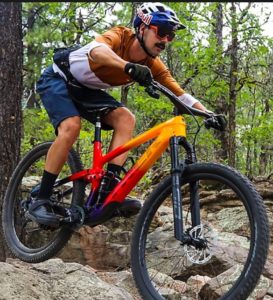
Specialized vs Trek vs Giant: Similarities and Differences.
Let’s start with the differences.
Trek vs Specialized vs Giant – The Differences
Here are the things that separate the three brands:
1. Market Focus
While Specialized claims to make bikes for all cyclists, it focuses mainly on the high-end market. Trek also appears to be leading the Specialized way, but unlike Specialized, Trek also focuses more on the mid-range.
Giant being the ‘mother of all brands’, make bikes that cut across all levels. They have as many entry-level bikes as their high-end siblings.
2. Suspension Technology
Specialized is known to use Brain Technology, which enables the suspension to self-adjust according to the condition of the terrain. That makes Specialized better climbers.
Specialized also employs Future Shock Rear (FSR) suspension on most MTBs to guarantee better comfort and optimal bump absorption.
On the other hand, Giant employs the Maestro System, which gives the bikes more leverage when climbing and racing. As a result, they are better all-around choices.
As for Trek, the manufacturer is known for RE: Aktiv and Full-Floater suspension. While RE: Active offers you more leverage uphill, Full-Floater makes pedaling more seamless.
Most modern Trek bikes also employ Active Pivot Point (AVP), which minimizes ground contact and lets you ride over obstacles.
3. Saddle Technology
Specialized sets itself apart from the other two when it comes to saddle design. Specialized employs Body Geometry, a saddle technology that conforms to your body to offer you better comfort.
While Trek and Giant have decent saddles, they are not as ergonomic as Specialized.
4. Frame Technology
Specialized employs SuperLight frame technology on some of its bikes to guarantee extra lightweight frames.
Giant, in contrast, employs Advanced Composite Technology on its carbon frames and Aluxx aluminum on its aluminum frames, making the bikes lighter, stiffer, stronger, and most high-end.
On the other hand, Trek employs OCLV carbon on its carbon frames and alpha aluminum technology on its high-end aluminum frames. The two bike frame technologies guarantee lighter, stronger, stiffer, and high-quality frames, just like the other brands.
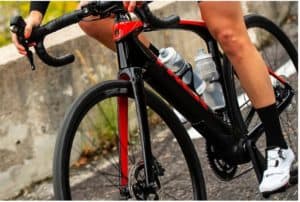
4. Specialized vs Giant vs Trek Frame Warranty
All three brands offer limited lifetime warranties for the frames, but it doesn’t apply to all bikes. Specialized offers lifetime warranties for all its branded frames and forks, but you only get two years on the frame paint.
Trek also offers you a lifetime warranty for its branded frames and swing arms. However, you only get one year for the frame paint and five years for the full suspension.
Additionally, Giant offers a limited lifetime warranty for all frames, ten years for its rigid forks, and one year for frame paint.
5. Brand Reputation
Though all the three brands are pretty reputable, most pro riders tend to go for Trek as Trek has won Tour de France ac couple of times. Though the other two brands have participated in the annual race, they aren’t that successful.
But still, the issue of reputation has nothing to do with the bike’s quality. It’s a matter of what brand appeals to customers the most.
6. Bike Design
While the qualities of these bike brands are unquestionable, their designs are a bit different. Giant tends to keep things low-profile, and so its bikes are less flashy. That’s unlike Trek and Specializes that employ the most stylish and flashiest designs.
7. Bike Price
While all the three bike brands make quality bikes, Giant tries to make their bikes more affordable. For that reason, the bike maker makes bikes at all price points.
Primarily, that’s because Giant gets its supplies in bulk, which means they enjoy the discount advantage, which compels them to price their bikes slightly lower.
Remember, Giant also makes some of its frames for Trek and other brands. So their bikes cannot be of the same price.
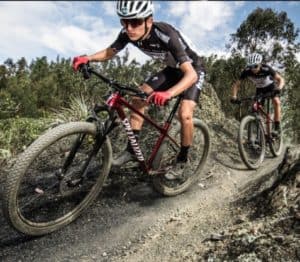
Giant vs Trek vs Specialized – The Similarities
There are reasons why it’s hard choosing among these three brands, and I’m talking about the following:
1. Frame Quality
Though the three brands employ different frame technologies, it’s hard to separate their high-end bikes as they are high-quality. The frames are lighter and enjoy a more excellent strength-to-weight ratio, which explains why most come with a lifetime warranty.
2. Components Quality
The three brands get most of their components from reputable manufacturers like Shimano, RockShox, and SRAM. Plus, they have an in-house quality control team that ensures the parts are precise and high-quality.
3. Bike Customization
These three brands offer you the option of customizing some of their high-end bikes. That’s the primary reason why they attract the high-end pro-cycling community.
4. Bike Weight
These three bikes are top-sellers mostly because they are lighter than most bikes. Yes, they employ different technologies, but the results are the same; more lightweight bikes.
Specialized, for example, employs SuperLight frames while Trek uses OCLV carbon and alpha aluminum frames as Giant focuses on Advanced Composite frames. All of these frames are lighter.
5. Bike Types
These three brands stock a variety of bikes which include:
- Mountain bikes
- Gravel bikes
- Hybrid bikes
- Electric bikes
- Women bikes
However, Giant offers you more options for each bike category to accommodate both the high-end and low-end markets.
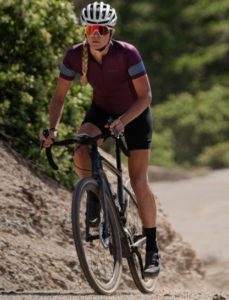
Table Summary of Giant vs Specialized vs Trek
Here is a table summary to help you compare Specialized, Giant, and Trek.
Giant vs Specialized vs Trek Road Bikes
When it comes to road bikes, the three brands promise bikes that are lightweight and aerodynamic. Overall, Specialized’s SuperLight technology is just as effective as Trek’s OCLV carbon technology and Giant’s Advanced Composite Technology.
But given the stiffness of Trek’s OCLV carbon, the bikes are much steadier and more enduring. Their recent Tour de France victories are proof of this.
The issue, however, is that Trek high-end road bikes are costly, which makes Giant a fair choice. Giant offers you an array of budget road bikes and a few high-end options which cost much less than Trek.
Specialized is not a bad choice for racing either, but it’s a much better climber.
Giant vs Trek vs Specialized Mountain Bikes
A good mountain bike should feature a lighter and stronger frame with a good suspension. These three bike brands seem to have covered this area, making it harder to choose among them.
Overall, Specialized self-adjust brain technology makes the bikes more adaptable to challenging terrains, making them better climbers.
That doesn’t make other brands less effective uphill, however. It’s only that their suspensions are not as adaptable as that of Specialized.
But given that some Specialized MTBs cost over $10,000, Giant presents itself as the cheaper option.
Yes, some Giant MTBs are just as costly as Specialized MTBs, but the difference is that you are likely to find a quality Giant MTB on a budget than either a Specialized or Trek option.
Giant vs Trek vs Specialized Hybrid Bikes
There is little to separate the three bike brands when it comes to the hybrid sector. On the one hand, Giant offers you some of the most affordable hybrid bikes, and on the other hand, Trek offers you some of the fastest though slightly costly options.
Specialized sadly falls behind the two when it comes to hybrid bikes. For one, there aren’t as many options as there are on Trek and Giant.
Secondly, while some Specialized hybrid bikes cost under $1,000, you are only likely to get a decent option with more than $1,000. That’s unlike Giant, which offers a lot of hybrid bikes for less than $1,000.
Trek is also like Specialized, offering you slightly costly hybrids. The difference is that there are more options on Trek than Specialized.

People Also Ask
1. is giant better than specialized.
Giant offers you more affordable bikes than Specialized, but that doesn’t make it the better option. Overall, Specialized focuses more on the high-end cycling market when Giant produces bikes for all markets.
2. Is Trek or Specialized Better?
Both Trek and Specialized make top-end bikes that suit pro riders more. The difference is that Trek is a better racer while Specialized is a better climber.
In that case, go for Trek if you want a high-end road bike and Specialized if you want a high-end mountain bike.
3. Is Trek Better Than Giant?
While Trek targets the high-end and mid-range market, Giant focuses on all markets. Thus, you are more likely to find a budget bike on Giant than on Trek. But overall, both bike brands are high-quality, making it unfair to pronounce one better than the other.
- Scott Bikes Vs Trek Bikes
- Trek Vs Giant Bikes
- Scott Bikes Vs Giant Bikes
Specialized vs Trek vs Giant – What Suits You?
Deciding among Trek, Specialized, and Giant depends on a couple of things; budget, experience level, and bike purpose.
If you are looking for a better climber, go for Specialized as its self-adjust Brain Technology suspension makes hill climbing more comfortable.
In contrast, if you crave a proven racer, go for Trek. The fact that Trek has won Tour de France is proof that these bikes are great racers. But still, everything boils down to its OCLV carbon and alpha aluminum frames that are super lightweight, making the bikes faster.
But if you want an all-around bike (a climber and racer) on a budget, go for Giant. Giant offers you an array of quality bikes for racing, mountain biking, commuting, and recreational cycling.

Specialized Sirrus vs Trek Fx Bikes (7 Helpful Differences)

When it comes to choosing a bike, there are many factors to consider. Two of the most popular brands on the market are Specialized Sirrus and Trek Fx. Both offer a wide range of bikes for different purposes, so it can be tough to decide which is right for you.
To help you make your decision, we’ve put together a comparison of Specialized Sirrus bikes and Trek Fx bikes.
Specialized Sirrus vs Trek Fx Bikes
Both brands offer a wide range of bike types, from road bikes to mountain bikes. However, Sirrus specializes in hybrid bikes, while Trek focuses more on performance-oriented bikes. If you’re looking for a bike to use for commuting or leisure riding, Sirrus is a great option.
However, if you’re looking for a bike to take on tougher trails or race, Trek is the better choice.
In terms of pricing, Sirrus bikes are generally more affordable than Trek bikes. However, Trek offers more premium options that come at a higher price tag.
When it comes to features, both brands offer a wide range of options. However, Sirrus bikes tend to be more basic, while Trek offers more advanced features. For example, Sirrus bikes typically have steel frames, while Trek offers aluminum and carbon fiber frames.
Trek also tends to offer more suspension options, making their bikes better suited for off-road riding.
In terms of size, Sirrus bikes are typically smaller than Trek bikes. This makes them a better choice for riders who are on the shorter side.
However, Trek offers a wide range of sizes, so you’re sure to find one that fits you well.
Finally, when it comes to warranty, Sirrus offers a lifetime warranty on their frames and a two-year warranty on their components. Trek offers a similar warranty on their bikes.
It depends on your needs and budget. If you’re looking for a bike to use for commuting or leisure riding, Sirrus is a great option.
However, if you’re looking for a bike to take on tougher trails or race, Trek is the better choice. It comes down to what you need the bike for and how much you’re willing to spend.
Specialized Sirrus Bikes
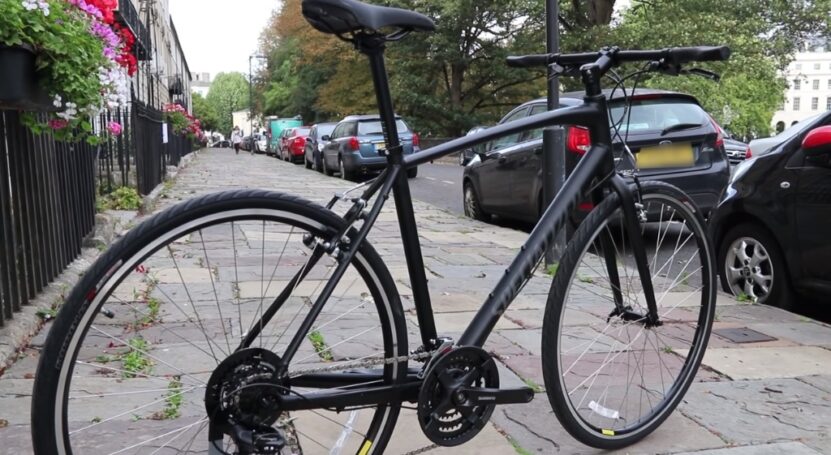
Specialized Sirrus bikes were first introduced in 2003 as part of the company’s line of urban fitness bicycles.
The Sirrus was designed to offer a balance of comfort, performance, and value, and quickly became a popular choice for riders looking for a versatile bike that could handle both city streets and light off-road trails.
In recent years, the Sirrus has undergone several major redesigns, and today’s models are available in a wide range of styles and configurations to suit the needs of any rider.
Whether you’re looking for a simple city cruiser or a versatile all-rounder, there’s a Sirrus bike that’s perfect for you.
Sirrus bikes are built with lightweight aluminum frames and forks that provide a smooth, comfortable ride. The bikes are equipped with durable components that can handle the rigors of everyday riding, and they’re available in a variety of sizes to fit riders of all shapes and sizes.
Sirrus bikes come in both men’s and women’s specific models, and they’re equipped with a wide range of gears to help you tackle any terrain. Whether you’re looking to commute to work or explore your local trails, a Sirrus bike will help you get there in comfort and style.
Trek Fx Bikes
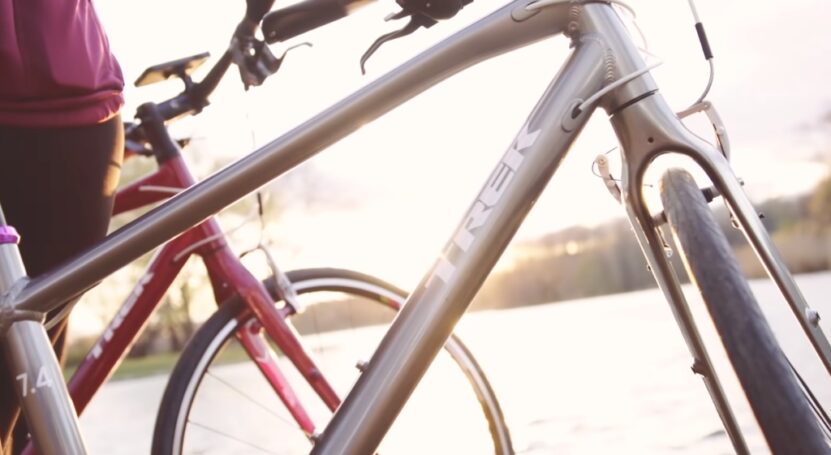
Trek began in 1976 when two young men decided to follow their dreams and start their own business. They started by selling bike parts out of the back of a van at races and rallies, and quickly gained a reputation for quality products and excellent customer service.
Trek has since grown into one of the largest and most successful bicycle manufacturers in the world , with a passion for innovation and a commitment to quality that is unmatched in the industry.
Trek’s FX series bikes are some of the most popular models in the lineup, thanks to their versatility and affordable price point. The FX series offers a wide range of bikes designed for everything from casual riding to commuting to serious training and racing.
Whether you’re looking for a lightweight carbon fiber road bike or a durable aluminum hybrid, Trek has an FX bike that’s perfect for you.
If you’re looking for a versatile and affordable bike that can do it all, the Trek FX series is the perfect choice. With a wide range of models to choose from, there’s an FX bike that’s perfect for any rider.
Whether you’re just getting started in the world of cycling or you’re a seasoned veteran, Trek’s FX series has a bike that’s right for you.
Specialized Sirrus vs Trek Fx Bikes Frame
When it comes to choosing a bike, there are many factors to consider. One important factor is the frame. The frame of a bike can have a big impact on the ride quality, weight, and durability of the bike. Two popular choices for bike frames are the Specialized Sirrus and the Trek Fx.
Here is a comparison of the Specialized Sirrus and Trek Fx frames:
Specialized Sirrus:
- The Specialized Sirrus frame is made from lightweight aluminum. This makes the bike lighter and easier to ride.
- The frame is designed to provide a comfortable, upright riding position. This is ideal for casual riders who want to be able to see and enjoy the scenery.
- The Sirrus frame is also designed for easy pedaling. This makes it a great choice for people who want to get around quickly or ride long distances.
- The Trek Fx frame is made from durable steel. This makes the bike heavier but also more durable.
- The frame is designed to provide a sporty riding position. This is ideal for riders who want to go fast and have a more aggressive riding style.
- The Trek Fx frame is also designed for easy pedaling. This makes it a great choice for people who want to get around quickly or ride long distances.
If you want a lighter, more comfortable bike for casual riding, then the Specialized Sirrus is a great choice. If you want a more durable, sporty bike for a more aggressive riding style, then the Trek Fx is a great choice.
Both bikes are designed for easy pedaling , so they are both great choices for people who want to get around quickly or ride long distances.
Specialized Sirrus vs Trek Fx Bikes Groupset
Bike groupset is a very important factor to consider when purchasing a new bike. There are many different types of groupsets available on the market, and each has its advantages and disadvantages.
Two of the most popular groupsets on the market are the Specialized Sirrus and Trek Fx Bikes. Both of these groupsets have their unique features and benefits, so it is important to compare them before making a decision.
Specialized Sirrus Bikes Groupset:
- The Specialized Sirrus Bikes groupset is designed for use on road bikes. It is one of the lightest groupsets on the market, and it offers great shifting performance. The only downside to this groupset is that it is not compatible with mountain bikes.
Trek Fx Bikes Groupset:
- The Trek Fx Bikes groupset is designed for use on both road and mountain bikes. It is a bit heavier than the Specialized Sirrus, but it offers excellent shifting performance and durability. The only downside to this groupset is that it is not compatible with some older model bikes.
Specialized Sirrus vs Trek Fx Bikes Wheels
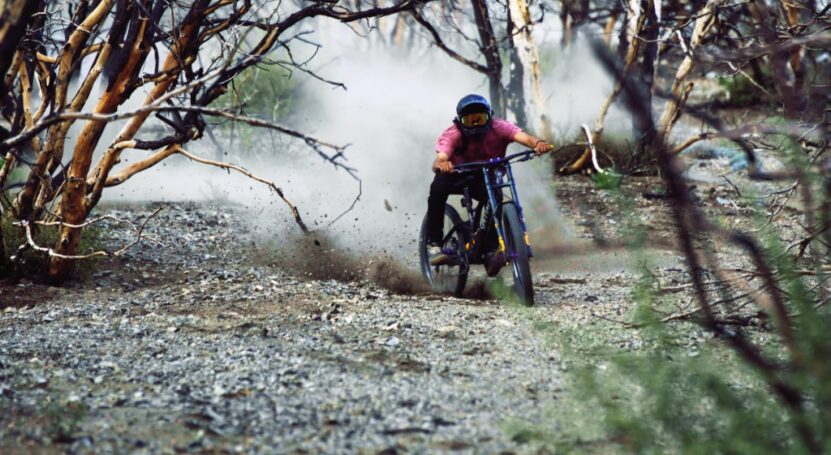
When it comes to choosing a bike, there are many factors to consider. One important choice is between a specialized Sirrus bike and a Trek FX bike. Both offer great options for riders, but they have some key differences in terms of wheels.
The Specialized Sirrus has 700c wheels, which are the standard size for most adult bikes. They are a good choice for riders who want a bike that is versatile and can be used on a variety of terrain. The Trek FX has 26-inch wheels, which are smaller and better suited for road riding.
If you plan to do mostly road cycling, the Trek FX may be a better option.
Both the Specialized Sirrus and the Trek FX have strong and durable wheels. However, the Sirrus has slightly wider tires , which may provide more traction and stability on rough terrain. If you plan to do a lot of off-road riding, the Sirrus may be the better.
When it comes to choosing between a Specialized Sirrus and a Trek FX, it is important to consider your riding needs. Both bikes have great features, but they differ in terms of wheels. Consider your terrain and intended use to choose the bike that will be best for you.
Specialized Sirrus vs Trek Fx Bikes Tires
One of the biggest differences between the Specialized Sirrus and Trek FX bikes is the tires.
The Specialized Sirrus comes with specialized tires that are designed for speed and efficiency, while the Trek FX comes with wider, more comfortable tires that are better suited for leisurely rides or commuting.
The Specialized Sirrus tires are faster and more efficient, but they can be more difficult to ride on rough terrain. The Trek FX tires are wider and more comfortable, but they can slow you down on smoother roads.
Ultimately, the choice between these two types of tires depends on your riding style and what kind of bike you want to use.
If you’re looking for a bike that’s fast and efficient, the Specialized Sirrus is a great option. However, if you’re looking for a bike that’s more comfortable and versatile, the Trek FX may be a better choice.
Specialized Sirrus vs Trek Fx Bikes Brakes
The Sirrus and Trek FX bikes both come with specialized brakes that are designed to provide optimal stopping power and control. Sirrus bikes feature V-brakes, while Trek FX bikes come equipped with disc brakes.
Both types of brakes offer advantages and disadvantages, so it’s important to choose the right one for your needs.
V-brakes are typically lighter and easier to adjust than disc brakes. They also offer good stopping power in dry conditions. However, V-brakes can be less effective in wet or muddy conditions, and they may not provide as much stopping power as disc brakes.
Disc brakes are more expensive than V-brakes, but they offer superior stopping power in all conditions. Disc brakes are also easier to maintain than V-brakes, and they offer more consistent performance over time.
If you’re looking for the best possible braking performance, disc brakes are the way to go. However, if you’re on a budget or you don’t need the absolute best performance, V-brakes may be a better option.
Specialized Sirrus vs Trek Fx Bikes Saddle
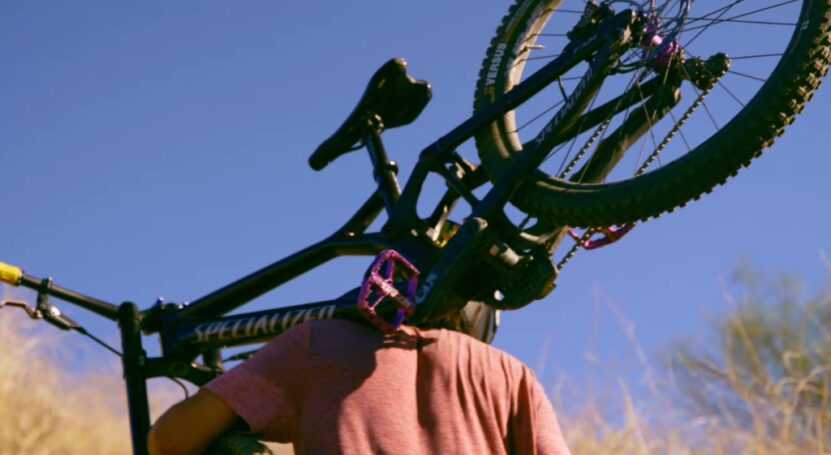
When it comes to comfort, both the Specialized Sirrus and Trek FX bikes offer a comfortable saddle. However, the Specialized Sirrus has a bit more padding, making it slightly more comfortable for longer rides.
For those who are looking for a bike that can handle both road and off-road riding, the Specialized Sirrus is the better option. It has more durable tires and can handle rougher terrain. However, the Trek FX is a great choice for those who want a lighter bike that is easier to carry.
Overall, both bikes offer a comfortable ride, but the Specialized Sirrus is the better choice for those who want a bike that can handle more difficult terrain.
Specialized Sirrus vs Trek Fx Bikes Riding Experience
Riding a bike is a great way to get around. It’s a healthy activity that can help you lose weight , and it’s also environmentally friendly. But what kind of bike should you buy?
There are many different types of bikes on the market, and each has its advantages and disadvantages. Two of the most popular types of bikes are the Specialized Sirrus and the Trek FX.
Both of these bikes have their pros and cons, so it’s important to decide what you’re looking for in a bike before making a purchase. Here’s a look at the riding experience of each type of bike:
The Specialized Sirrus is a great choice for someone who wants a bike that is comfortable and easy to ride. The Sirrus has a suspension fork that absorbs bumps in the road, and the frame is made of aluminum, which makes the bike lightweight.
The Sirrus also has wide tires that provide stability, and the bike comes with Shimano components, which are known for being high-quality.
The Trek FX is a great choice for someone who wants a bike that is fast and efficient. The frame of the Trek FX is made of carbon fiber, which makes the bike extremely lightweight.
The Trek FX also has narrow tires that are designed for speed, and the bike comes with Shimano components.
So, which bike is right for you? It depends on what you’re looking for in a bike. If you want a bike that is easy to ride, then the Specialized Sirrus is a great choice.
If you’re looking for a bike that is fast and efficient, then the Trek FX is a better choice. Whichever bike you choose, you’re sure to have a great time riding it. Get out there and enjoy the ride!
Specialized Sirrus vs Trek Fx Bikes How To Choose?
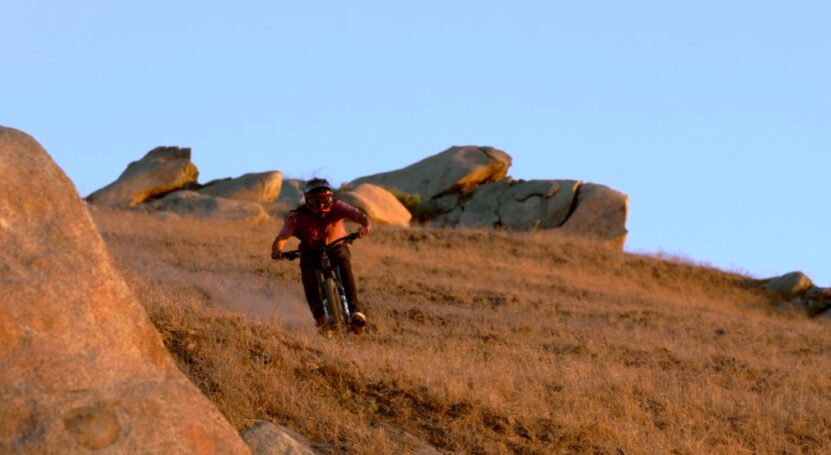
When it comes to choosing a bike, there are a lot of factors to consider. But if you’re stuck between the Specialized Sirrus and the Trek FX, two of the most popular hybrid bikes on the market, how do you choose?
Here’s a quick breakdown of the key differences between these two bikes:
- The Specialized Sirrus has a more road-oriented design, while the Trek FX is more versatile and can be used for both road and off-road riding.
- The Sirrus has a lightweight aluminum frame, while the FX has a steel frame that’s slightly heavier but also more durable.
- The Sirrus comes with front and rear suspensions, while the FX has a front suspension only.
- The Sirrus has disc brakes for better stopping power, while the FX has rim brakes.
If you’re mostly going to be riding on paved roads, the Sirrus is a great choice. But if you want a bike that can handle a bit of everything, the FX is a better option. Whichever bike you choose, you’re sure to enjoy hours of riding fun!
Related Posts:
- Sirrus vs Sirrus X Bike (7 Helpful Differences)
- Trek Dual Sport 4 vs Specialized Sirrus x 4.0 (11…
- In-Depth Comparison: Specialized Roll vs Crossroad…
- Pinarello vs Specialized Bikes (7 Helpful Differences)
- Trek vs Specialized Bikes - 8 Key Differences Explained
- Trek Slash Vs Specialized Enduro (6 Key Differences)
Bike Battle: Trek vs Specialized E-bike
No ride can have a conversation about the best electric mountain bikes without discussing both Trek and Specialized Electric Bikes. These companies are two of the most popular e-bike manufacturers and they offer a range of e-bikes for new and experienced riders. Both companies’ e-bikes are great but which brand is best for you?
Trek Allant+
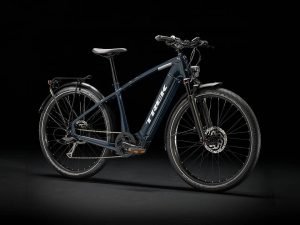
The Trek Allant+ is a sleek bike that provides a comfortable and capable ride on any urban street or light trail. It features an efficient Bosch Performance motor with shift detection. The bike frame can fit an optional second battery pack making it a great bike for long trips. It reaches a top speed of 20 mph and has a great range of up to 120 miles.
- Trek Allant is very durable and comes in a variety of sizes to accommodate all riders.
- This e-bike features an amazing range of up to 120 miles, making it an ideal product for a long commuter.
- Great suspension system with excellent shock absorption makes for a comfortable ride on any city street or light trail.
- Trek has a relatively quick 5.5-hour charge time.
- Great power assistance that constantly checks your speed and pedal time.
- Bosh Purion controller is simple to use.
- Lightweight bike at 54 pounds.
- The motor is loud.
- Difficult to swap out tires and requires a hex key wrench.
- You can’t backpedal.
The price of the Trek Allant+ ranges from $4,000 to $4,500 dollars depending on the model. The Trek Allant+ is an excellent mid-range premium bike for any city rider.
Specialized Turbo Vado
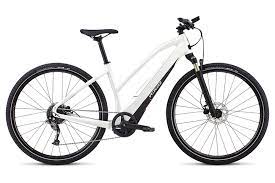
Specialized has long been considered one of the best in the business, so it is no surprise that the company’s main commuter e-bike is a top-notch product.
The Turbo Vado is a Class 3 e-bike that can reach up to 28 mph with pedal assist thanks to the top-of-the-line Brose mid-drive motor. The Turbo Vado’s high speed makes it one of the fastest commuter bikes on the market. It has a 710 Wh battery with a claimed range of 87 miles.
- Affordable bike for such a high-quality product.
- Sleek design that looks less hefty than many e-bikes.
- The 2.0 mid-drive motor creates a smooth riding experience.
- Faster than most commuter e-bikes.
- Average battery life.
The Turbo Vado is an excellent bike with a starting price of $4,000, which is an incredible value for such a high-quality bike.
Which Is Better?
Trek and Specialized have created two of the best commuter e-bikes on the market, but Specialized has created a superior product. Both bikes have similar price points, and the Trek Allant+ can go longer distances. Still, the Turbo Vado has superior speed, durability, and smooth riding experience, making it a product better suited to all riders.
Related Posts

RadRunner VS Lectric XP: The Battle Of Versatile E-Bikes

Battle of the Bikes: Aventon Sinch vs Lectric XP

Ecotric vs. Lectric XP
Specialized vs Trek vs Giant: Which Bike Brand is Best for You?
Specialized, Trek and Giant stand out as three of the most prominent bike brands on the market today. With so many quality options to choose from, it can be tough deciding which brand best suits your cycling needs and budget.
This in-depth comparison examines all the key differences between Specialized, Trek and Giant across the factors that matter most:
Table of Contents
A Brief History of Each Brand
Specialized was founded in 1974 and is based in California. They helped pioneer mountain biking and have invested heavily in research around aerodynamics, suspension and overall bike performance.
Trek got its start in 1976 in Wisconsin. Trek helped popularize carbon fiber frames and has equipped numerous Tour de France winners. They now offer a wide range of reputable road, mountain and electric bikes.
Giant was established in 1972 in Taiwan and is now the world’s largest bike manufacturer. They’re recognized for high quality at lower price points and innovation in aluminum/composite material frames.
Bike Categories Offered
All three brands offer road, mountain, hybrid, electric and fitness bikes. However, each excels in particular categories:
- Specialized is known for high-performance road bikes and mountain bikes. Popular models include the Tarmac, Roubaix, Stumpjumper and Epic.
- Trek offers renowned off-road mountain bikes like the Fuel EX and road bikes such as the Domane. Their FX hybrid series is also popular.
- Giant has models for all levels across styles but is especially respected for affordable road bikes like the Contend and the Anthem X mountain bike.
Frame Technology and Materials
Specialized, Trek and Giant all use combinations of aluminum, carbon fiber, steel and titanium to create light yet durable bike frames:
- Specialized uses FACT carbon fiber on higher-end bikes. Their M5 alloy frames offer vibration damping.
- Trek employs OCLV carbon on road models and Alpha Aluminum for mountain bikes. Ballistec carbon increases stiffness.
- Giant developed the lightweight Advanced Grade Composite used across many bikes. AluxX aluminum improves strength-to-weight ratio.
Overall, Specialized and Trek focus on high-performance materials while Giant also offers great value alloy frames.
Suspension and Components
- Specialized uses the auto-adjusting Brain shocks and a Rx Trail Tune suspension system for all-terrain handling.
- Trek equips mountain and hybrid bikes with the efficient RE:Aktiv shock system with ThruShaft damper.
- Giant employs the Maestro Suspension system for smooth, responsive rear suspension and pedaling.
All three brands often use Shimano or SRAM component groups. Trek and Specialized have wider component customization for a personalized ride.
Pricing and Affordability
Giant offers the most affordable entry-level road and mountain bikes, like the Escape 3 hybrid for under $500.
Specialized bike pricing starts around $1,000 for basic road models up to $10,000 for high-end builds.
Trek also has a few models around $600 but most range from $1,200 to $12,000 for carbon fiber performance bikes.
Overall Giant takes the lead for budget-friendly options, while Specialized and Trek compete on high-performance premium bikes.
Warranties and Service
All three brands provide strong warranties:
- Giant offers limited lifetime frame warranties plus 3 years parts/electronics warranty
- Specialized provides a lifetime frame warranty and 2 year parts warranty
- Trek matches with a lifetime frame warranty and 2 year warranty on components
Specialized and Giant have a slight edge for dealer service network and maintenance. Trek compensates with free tuning and valuations.
Rider Fit and Handling
- Specialized uses Body Geometry to optimize bike fit ergonomics for all-day comfort.
- Trek employs IsoSpeed decouplers to isolate vibration and smooth the ride.
- Giant focuses on stable endurance geometry for their aluminum Defy road bike line.
For the most natural, relaxed fit, Giant takes the lead. Trek suits aggressive racers. Specialized balances performance and comfort.
Resale Value
All three brands make bikes that hold value relatively well if kept in good condition. However, some standout models include:
- Specialized S-Works high-performance bikes retain value extremely well. For example, the S-Works Tarmac road bike might only depreciate $500-800 in 5 years.
- Trek Madone road bikes also continue to demand high prices, falling about 30% after 3 years.
- Giant Reign and Anthem mountain bikes hold value better than most mainstream brands, often still selling for 30% or more of original MSRP after 3-5 years.
Conclusion: Which Brand is Best For You?
So which brand comes out on top? While all three make great bikes, here are some key considerations:
- Giant is ideal for beginners and anyone seeking an affordable but reliable bike for around $500-$1,500.
- Trek is perfect for intermediate to advanced riders looking for a high-performance road or mountain bike priced $1,500 and up.
- Specialized hits the sweet spot for enthusiasts seeking a blend of value, quality components and innovative technology across disciplines.
The bottom line is that each of these reputable brands produces excellent bicycles. By identifying your budget, experience level and riding needs, you can determine which brand offers the best fit. Try out some test rides and you’ll be ready to choose the perfect bike for you.


Trek vs Giant vs Specialized vs Cannondale – Which is the Ideal Bike?
Riding a bike is extremely liberating and refreshing to the mind, body, and soul. Which between the Trek, Giant, Specialized, or Cannondale is the ideal bike for you?
Take a minute and think of your ideal cycling routine and picture yourself riding off into the horizon with the wind against your cheeks and flowing through your hair. Hold that image and think of the bike type you are riding.
Live in that moment for a while and hold onto that image. That is exactly how I envisioned my first bike ride and now I’m here to pick out one between these four great choices. Having some years of cycling experience, it shouldn’t be much of a hassle.
Table of Contents
What is the difference between Trek vs Giant vs Specialized vs Cannondale Bikes?
Trek vs giant vs specialized vs cannondale bike: how do they compare, frame and design.
Trek offers longer-travel at 120mm front and 130mm rear which is a bit large. There is a 140mm RockShox or FOX 34 or FOX 35 fork which is stiffer with the frame measuring anywhere between 10 to 20mm.
Giant’s bike model has a SuntourRaidon rear suspension and it works on the Maestro designed four-pivot point system that is a trademark of Giant premium bikes. Relying on the geometrical positioning of the aluminum Giant Connect seat stays and chainstays, this is essentially a single-pivot shock-absorbing component. It has 120mm travel.
Designed in carbon fiber material, the Specialized bike features a Syntace MegaForce2 stem and a specialized command seat post and a comfortable Phenom Expert type saddle. It also features threaded SRAM bottom bracket shells.
Cannondale’s head angle measures 66 degrees and is combined with 51mm offset forks for 29 inch and 44mm for the 27.5 inch wheel. The trail is 112mm in length, chainstay is 435mm and the arms-reach is 430mm. The boost rear axle measures 12x148mm is a standard Cannondale measurement.
Trek bike stand out as the exception by offering 130mm rear travel as compared to the Giant, Specialized and Cannondale brands which have a shorter rear travel at 120mm.
Trek bikes have a travel length of 130mm. They offer 12 speeds on an SRAM XO1 Eagle crankset with a Float 36 Grip 2 fork running on the SRAM XG-1275 Eagle 10-50t cassette and a rear SRAM Eagle Dub derailleur for easy gear shifting.
Giant’s aluminum bike frame is fitted with a 12-speed SRAM SX Eagle gear system that operates on an 11-50t cassette and SRAM SX Eagle Dub crankset supported by a Radon 34 Boost fork. Featuring tubeless-ready Giant XCT rims over MaxxisForekaster 29-inch tires, you are protected from pinch flats.
Specialized bikes are available in carbon fiber and their frame is supportive of the SRAM XX1 Eagle cranks and chain fitted into the SRAM X01 Eagle 10-50t cassette and a rear SRAM XX1 Eagle derailleur resting on a Fox Float 34 Factory FIT4 fork.
Cannondale bikes have a 120mm travel. The drivetrain system is the SRAM GX Eagle 12-speed and is fitted with Shimano 1×10 groupset, RockShox Recon fork , and a fixed seat post. A full carbon frame has Shimano’s XTR 1×12 group, Fox Transfer Dropper post, and a FOX 34 fork.
With all four bike brands settling for the SRAM Eagle gears in varied models, the Specialized bikes are better placed because they have the more durable Eagle XX1 carbon-built chainring system.
Extra Features
A trap-door is built into the Trek’s downtube which allows you to have secret storage space using an organizer roll designed with pockets to fit a tube, inflator head, cartridge, and tire lever. For your water bottle, a sideload cage is also built into the frame.
Giant bikes feature the trademark Maestro designed four-point fork. Giant Connect is the type of saddle used that provides a stable platform for the Giant Contact saddle that is comfortable to ride on for hours
Specialized bikes have specialized SIP grips for maximum security while riding and the Command Post seat post is raised 160mm to support the Phenom Expert saddle.
Cannondale frames use a boost rear axle, fit a water bottle, feature internal cable routing and the carbon frames are fitted with full-length tubes to minimize rattling and assist with routing.
Trek’s secret storage and Cannondale’s Ai offset function give them a leg up over the Giant and Specialized brands which focus more on providing a comfortable saddle.
Trek vs Giant vs Specialized vs Cannondale Bike: A comparison Overview
Trek bike review.
With the FOX 36 GRIP 2 damper, the Trek mountain bike is quite sturdy which keeps you on the desired track making the experience exciting yet controlled.
It lacks a decent dropper making the Bontrager post sticky and sluggish in performance.The bike weighs 30 pounds which is considerably light.
- Expanded range available
- 140mm forks and 2.6 inch tires
- Rear suspension
- FOX 36 fork
- Sticky Bontrager stock post
Giant Bike Review
This bike model has a Suntour rear suspension and it works on the Maestro designed four-pivot point system that is a trademark of Giant premium. Relying on the geometrical positioning of the aluminum seat stays and chainstays, this is essentially a single-pivot shock-absorbing component. It has 120mm travel.
It comes with a single chainring at the front and a rear-mounted derailleur. With 12-speeds on an 11-50t cassette and running on MaxxisForekaster tubeless tires.
- Great roll-over on rocky terrain
- Wide gear range
- No dropper post
Specialized Bike Review
Designed in carbon fiber material, it minimizes proprietary extras for a simple build that repairs easily and is low maintenance. It also features threaded bottom bracket shells.
Specialized Horst link FSR provides deep suspension with fine-tuning capabilities and an SRAM XXI drivetrain with rubber padded bumper which quietens the bike’s operations and keeps the chainstay well covered from effects of external elements.
- Reactive to corners FSR Deep Suspension
- Rubber padded bumper
- Repeated stutter-bumps and holes
- Gripton tires feel sketchy
Cannondale Bike Review
This bike is designed into a dual-link, four-bar suspension that is very responsive and capable of handling all types of terrain. It is a very sensitive bike that offers riders lots of traction for greater acceleration and braking power.
This four-bar system is perfect for mountain bikes because when braking, it minimizes the anti-rise effects which increase the responsiveness of the suspension making for great traction and control. However, this also increases the forward weight transfer created when braking so be cautious.
- Minimized drag
- Seat Post and Stays are designed to comply
- Integrated front wheel sensors
- Doesn’t work with derailleur
Conclusion
Trek bikes are perfect for hard terrain, Giant bikes have amazing roll-over in varied terrains, Specialized bikes are ideal for maneuvering sharp corners and the Cannondale bike is dominated by aerodynamics.
Verdict: Which is better – Trek vs Giant vs Specialized vs Cannondale Bike
Trek bikes are the better option for added features and benefits. If you love a bike with great extras and value for money, this is it!
What does the shock mount on the Trek bike do?
It minimizes the frame’s rigidity. Which guarantees smoother mobility by absorbing road vibration.
Why is a four-point fork better than a single fork?
Because they minimize bobbing that then hampers your cadence.
What is better Cannondale or Giant?
Both Cannondale and Giant are reputable and respected bike brands that produce high-quality bikes. It is difficult to say which brand is better as it depends on individual preferences and needs.
Cannondale is known for its innovative designs and use of cutting-edge technology, such as the HollowGram crankset and the Lefty suspension fork. Cannondale bikes are often praised for their stiffness, responsiveness, and comfort, and are popular among professional cyclists.
Giant, on the other hand, offers a wide range of bikes at all price points, from entry-level to high-end models. Giant bikes are known for their durability, reliability, and value for money, and are often praised for their smooth ride quality.
Is A Trek Better Than Specialised?
The choice on which one you prefer depends on you. Both brands offer a wide range of bikes at all price points, from entry-level to high-end models, and each brand is known for its own unique features, designs, and technologies.
Trek is known for its innovative designs and use of cutting-edge technology, such as the IsoSpeed decoupler and the OCLV carbon fiber frame. Trek bikes are often praised for their stiffness, responsiveness, and comfort, and are popular among professional cyclists.
Specialized, on the other hand, is known for its Body Geometry Fit system, which aims to provide a comfortable and efficient riding position. Specialized bikes are often praised for their lightweight, aerodynamic designs, and are popular among triathletes and road racers.
Is Giant and Cannondale The Same?
No, Giant and Cannondale are not the same company. They are two separate and independent bike brands that compete with each other in the market.
Giant Manufacturing Co. Ltd. is a Taiwanese company that was founded in 1972 and is one of the largest bicycle manufacturers in the world. Giant produces a wide range of bikes, including road bikes, mountain bikes, hybrid bikes, and electric bikes, and offers models at different price points.
Cannondale Bicycle Corporation is an American company that was founded in 1971 and is known for its innovative designs and use of cutting-edge technology. Cannondale produces a wide range of bikes, including road bikes, mountain bikes, and electric bikes, and is popular among professional cyclists.
Is Giant Better Than Trek?
Both bikes have their perks. Giant is known for offering a wide selection of top-end bikes at friendlier prices than Trek . They are also known for having slightly better components on their bikes, as they are the biggest manufacturer and can purchase parts less expensively. Giant is also known as one of the best budget bike brands.
In contrast, Trek is known for its innovative designs and use of cutting-edge technology, such as the IsoSpeed decoupler and the OCLV carbon fiber frame. Trek bikes are often praised for their stiffness, responsiveness, and comfort, and are popular among professional cyclists.


Specialized Sirrus Vs Trek FX [Which Bike Is Better?]
Are you trying to decide between the Specialized Sirrus and the Trek FX for your next bike? These bikes offer great value and performance, but some key differences make them better suited to different riders.
In this article, we’ll compare the Specialized Sirrus and the Trek FX to help you decide which is right. We’ll look at their frame materials, components, and overall design to give you a better understanding of what each bike has to offer.
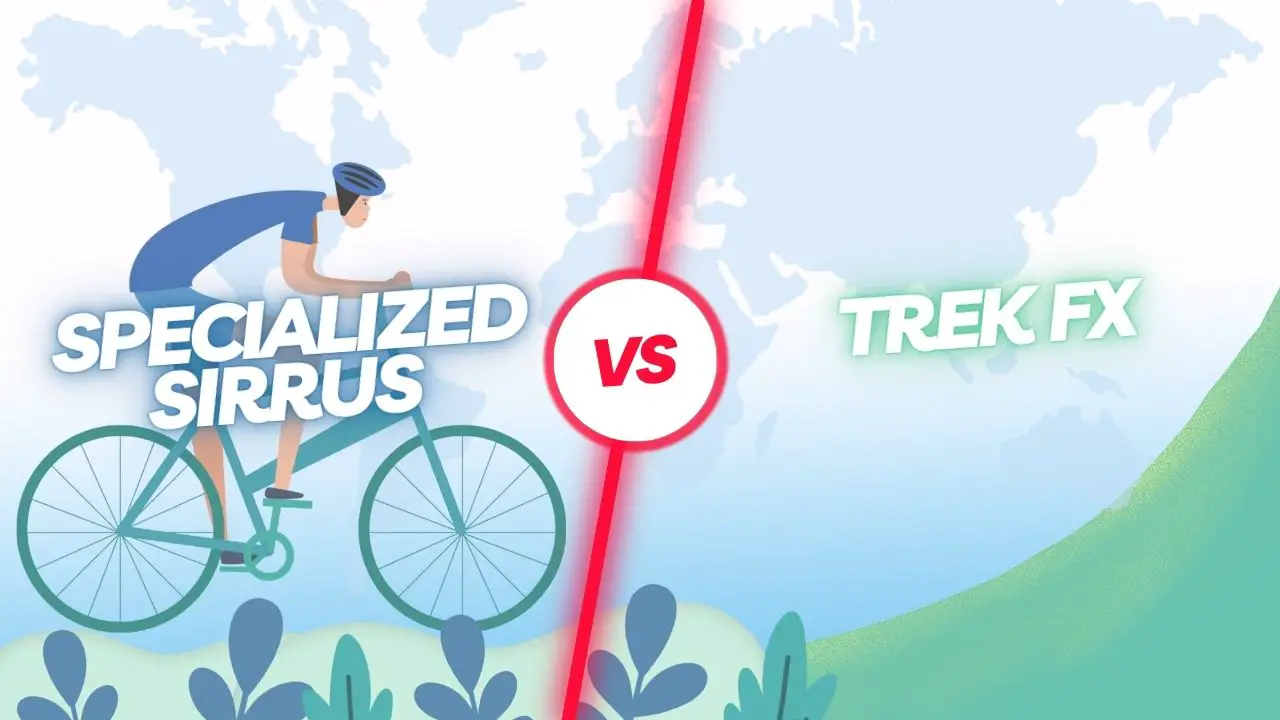
What Are Specialized Sirrus Bikes?
These bikes are a great choice for riders looking for a reliable and comfortable bike for commuting, fitness riding, or leisurely rides. With a lightweight aluminum frame, a comfortable riding position, and a wide range of gearing options, the Sirrus is a great choice for all types of riders.
It comes in various sizes and styles, allowing each rider to find the perfect fit for their needs. The Sirius also has a wide range of gearing options, allowing riders to choose the right gearing for their needs. The components are also high-quality, ensuring the bike will be reliable for years.
Overall, the Specialized Sirrus is a great choice for riders looking for a reliable and comfortable bike for commuting, fitness riding, or leisurely rides.
What Are Trek FX Bikes?
These bikes are a great choice for anyone looking for a quality, lightweight bike that can handle a variety of terrain. The Trek FX line of bikes is designed to be versatile and comfortable, allowing riders to take on any terrain confidently.
Its line is designed with the rider in mind, with various features that make riding more enjoyable.
The lightweight aluminum frame is strong and durable, while the suspension system provides a smooth ride. The Trek FX line also offers a variety of drivetrain options, ranging from single-speed to multiple-speed models. It allows riders to choose the drivetrain best suits their riding style and terrain.
Specialized Sirrus And Trek Fx Bikes – Key Differences
Specialized Sirrus Bikes boast a meticulously crafted frame with lightweight and durable materials like aluminum. Its frame geometry is thoughtfully designed to provide riders with a comfortable and efficient riding position, allowing for extended periods of riding without sacrificing performance.
With internal cable routing, the Specialized Sirrus Bikes offer a clean and streamlined aesthetic.
Additionally, the frames are equipped with convenient mounts for racks and fenders, enhancing the bike’s versatility for various riding needs. The tapered head tube adds stiffness and precise steering control, ensuring a responsive and agile ride.
Furthermore, the frame design incorporates compliance features that effectively absorb road vibrations, providing riders a smooth and comfortable experience on any terrain.
Trek FX Bikes series features frames constructed with lightweight and strong materials, such as Alpha Gold Aluminum or Alpha Silver Aluminum, depending on the specific model.
These frames are designed with a versatile geometry that balances comfort and performance, making them suitable for various riding styles. The internal cable routing on Trek FX frames offers a clean and organized appearance while protecting the cables from external elements.
The frames often come with rack and fender mounts, allowing for convenient customization and practicality. The Trek FX frames utilize a tapered head tube for improved front-end stiffness and precise handling.
Additionally, the frames are engineered to provide a smooth and responsive ride, with some models incorporating compliance features to enhance comfort and absorb road vibrations.
Specialized Sirrus Bikes have high-quality brake systems that ensure reliable and efficient stopping power. Most models feature hydraulic disc brakes, known for their excellent modulation and consistent performance in various weather conditions.
These hydraulic disc brakes offer responsive and precise control, allowing riders to confidently navigate any terrain. The brake calipers are designed to provide strong and reliable braking force, ensuring quick and safe stops when needed.
These Bikes also feature brake levers that are ergonomically designed for comfortable and easy operation, promoting rider confidence and control.
The brake systems on Specialized Sirrus Bikes are low-maintenance, providing consistent performance over long periods without frequent adjustments or maintenance.
Overall, the brake systems on Specialized Sirrus Bikes deliver reliable stopping power and enhance rider safety on the road or trails.
Trek FX Bikes have reliable and efficient brake systems to ensure safe and controlled stopping power. Most models feature mechanical disc brakes, known for their consistent performance and modulation.
These disc brakes provide reliable braking in various weather conditions, making them suitable for versatile riding environments. The brake calipers are designed to deliver strong and consistent braking force, offering riders confidence and control.
It also has ergonomic brake levers that provide comfortable and responsive operation. The brake systems on Trek FX bikes require minimal maintenance and adjustments, allowing for hassle-free riding.
Overall, the brake systems on Trek FX bikes provide reliable stopping performance and enhance rider safety on the road or trails.
Specialized Sirrus Bikes feature various drivetrain options to suit rider preferences and needs. They typically come equipped with reliable and precise shifting systems, such as Shimano or SRAM, providing smooth gear transitions.
The drivetrains on Specialized Sirrus Bikes include various gearing options, allowing riders to easily tackle a wide range of terrains.
Some models may have a 2x (double) chainring setup, offering a broader gear range for climbing and speed. Others may feature a 1x (single) chainring setup, prioritizing simplicity and reducing weight.
Overall, the drivetrains on Specialized Sirrus Bikes are designed to deliver efficient power transfer and smooth shifting for an enjoyable riding experience.
Trek FX Bikes have reliable and efficient drivetrain systems for optimal performance. They often feature Shimano drivetrain components, renowned for their precision and smooth shifting.
The drivetrains on Trek FX bikes offer a wide range of gearing options, allowing riders to easily tackle various terrains and gradients.
Some models may have a 2x (double) chainring setup, providing a versatile gear range for climbing and speed. Other models may feature a 1x (single) chainring setup, emphasizing simplicity and reducing potential maintenance.
Overall, the drivetrains on Trek FX bikes ensure efficient power transfer and reliable shifting, enhancing the riding experience.
Specialized Sirrus Bikes come equipped with high-quality wheels that balance performance, durability, and comfort. They typically feature lightweight alloy rims that provide strength and responsiveness on the road.
The wheel sizes vary depending on the specific model, with options including 700c or 650b, catering to different rider preferences and terrain types.
These wheels are often paired with fast-rolling and grippy tires, offering excellent traction and efficiency. Specialized Sirrus Bikes may also include puncture-resistant tire technology, reducing the risk of flats and increasing overall reliability.
Overall, the wheels on Specialized Sirrus Bikes contribute to a smooth and enjoyable ride experience.
Trek FX Bikes feature high-quality wheels that are designed for performance and durability. They typically come with lightweight alloy rims that provide strength and responsiveness on various terrains.
Trek FX bikes are often equipped with fast-rolling tires that balance speed and grip well. Some models may include puncture-resistant technology to reduce the risk of flats and enhance reliability. Overall, the wheels on Trek FX bikes deliver a smooth and efficient ride experience.
Specialized Sirrus Vs Trek Fx Bikes – Similarities
The specialized Sirrus and trek fx bikes share some similarities but have some distinct differences.
Both bikes are designed for recreational riding, focusing on comfort and performance. Both offer various sizes and colors and feature reliable components designed to last.
However, the specialized sirrus bikes have a more upright riding position and are designed with a more relaxed geometry, while the trek fx bikes are designed with a more aggressive geometry and are ideal for more aggressive riding.
Additionally, the specialized Sirrus bikes offer a more comfortable ride due to their increased tire clearance, while the trek Fx bikes are designed to offer a more responsive ride. Ultimately, both bikes are great options for recreational riders looking for a reliable and comfortable ride.
Frequently Asked Questions
Do specialized sirrus and trek fx bikes come in different sizes.
Specialized Sirrus and Trek FX bikes are available in various frame sizes to accommodate riders of different heights and body types.
Choosing the correct frame size that provides a comfortable and ergonomic riding position is crucial. Consult the manufacturer’s sizing charts or visit a local bike shop to get professionally fitted for the most suitable size.
What Are The Advantages Of Each Bike In Terms Of Comfort And Performance?
Advantages of Specialized Sirrus Bikes
- Comfort: Lightweight aluminum frame for easy maneuvering-Upright riding position for improved posture and visibility. Wide range of gears for easier climbing-Flat handlebars for a comfortable grip.
- Performance: Lightweight frame for quick acceleration- smooth-rolling tires for fast, efficient ride- reliable components for a durable ride.
Advantages of Trek FX Bikes
- Comfort: Upright riding position for improved posture and visibility. Wide range of gears for easier climbing-Ergonomic handlebars for a comfortable grip.
What Are The Differences In Price Between A Specialized Sirrus And A Trek FX?
The price of a Specialized Sirrus bike can vary greatly depending on the model and features. Generally, Specialized Sirrus bikes range in price from around $400 to $1,500.
On the other hand, Trek FX bikes tend to be more affordable. Prices for Trek FX bikes range from around $300 to $1,000. Overall, Trek FX bikes tend to be more affordable than Specialized Sirrus bikes.
Final Words
Overall, both the Specialized Sirrus and Trek FX bikes offer great value for the money. Both bikes are lightweight and offer a comfortable ride.
The Specialized Sirrus is ideal for commuters and recreational riders, while the Trek FX is best suited for those who want to ride longer distances. Ultimately, your best bike will depend on your needs and preferences.
Laura Anderson
Hi, I am Laura Anderson. I am a renowned Lady biker in my neighborhood. So, Mike introduced me to his beloved friend Mehedi. So that I can talk with you about my experience and renovation of cycles, especially those that are used by females. But having knowledge about the bikes, I have written and will be written.
Trek Marlin 5 Vs 6 [Which Bike Is Better?]
Brooks cambium c15 vs c17 [which saddle is better], leave a reply cancel reply.
Save my name, email, and website in this browser for the next time I comment.


Giant Vs. Specialized Vs. Trek: Full Comparison
By Author Anna
Posted on Last updated: March 31, 2023
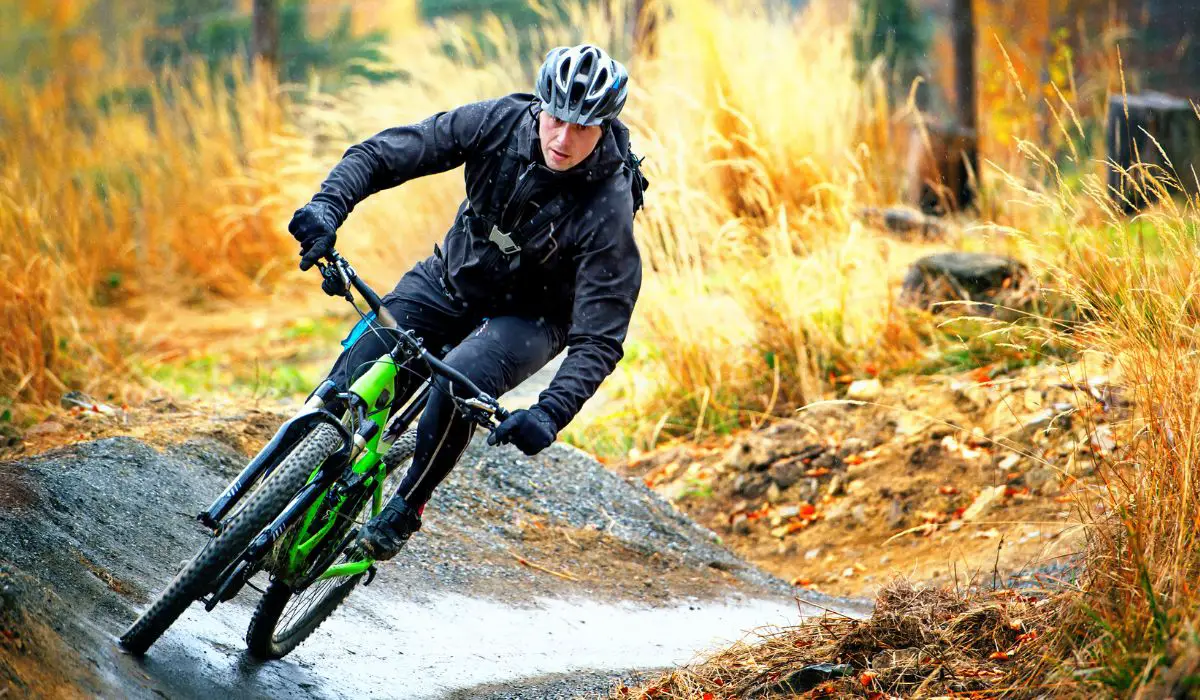
Giant, Specialized, and Trek are huge bicycle brands that are usually your first recommendations in talking with bike mechanics at your local bike shops or from basic Google searches. Although these companies have everything for most people, it’s still helpful to know how they compare.
Giant focuses on options with quality components, even if it’s one or two at every price point. While Trek, and more so Specialized, are more concerned with providing quality performance machines for their mid to high-end clients and often skimp on components on their more affordable builds.
All three of these brands are winners . Each has something to offer, and if you like cycling it’s helpful to note what each leading brand offers .
Giant Vs. Specialized Vs. Trek: History, Reputation, And Resale Value
Like it or not, history can play a vital role in a brand’s reliability . Knowing where a brand came from can help you see where it’s going .
History also spins closely to a company’s reputation . A company that continually strives to produce the best products will have a good reputation that rises above the criticism of being a brand in the public eye.
Giant History, Reputation, And Resale Value
Giant began its global stint by producing bikes for the American Schwinn Bicycle Company . The Taiwanese giant grew more aptly named as it matured to produce bikes and equipment for other recognizable brands such as Scott, Colnago, and even Trek .
After its 1972 birth, the Giant Bicycles brand we now know would come to be in 1981. The cycling market started seeing bikes branded with the Giant brand in the company’s home country . Then it spread to Europe , North America , and other nations .
The company would start foreshadowing its dominance with its involvement in carbon fiber bike production in the late 80s. Giant Bicycles would also start innovating with their Maestro Suspension Technology for offroad riding and all-around performance.
Over the decades, the brand continued ingenuity and bringing high-end performance to budget bikes . The world would grow to consider Giant as the go-to company for riders of all levels , and it’s perhaps this groundwork that would blossom into a reputation of a wide array of bikes at an equally broad price point .
Giant is praised for generally giving cyclist bikes decent components , even if it’s one or two quality components in a relatively benign build.
Although the company doesn’t have the exclusive prestige of specialist bike companies , Giant is a leading cycling corporation that produces long-lasting bikes , and it’s a noteworthy Original Equipment Manufacturer (OEM.)
This company produces mid to high-end bikes that can hold a fair percentage of their original price over the years.
Specialized History, Reputation, And Resale Value
Specialized hasn’t only focused on bike design and product innovation since its start in 1974. Specialized has been proud to promote its humanitarian efforts through programs like Outride to help kids focus on school through cycling .
The Morgan Hill, California company might not measure up in size compared to Giant and Trek. However, its respected brand recognition on the market still makes it a contender not to be overlooked.
The company is innovative , and just a few of its accomplishments undoubtedly prove that.
From the proverbial leftfield, the company satisfied the market with quality tires when there was an obvious need for them. At the behest of everyday riders, Specialized understood the assignment and went on to make some of the first production mountain bikes for offroad cruising .
Specialized would improve and add to the cycling world by also devoting themselves to carbon fiber bikes when the material hadn’t quite infiltrated the general public the way it has today. This may be one of the factors that aided this company to grow to eat at the heels of leading brands, Giant and Trek.
The brand was bought by Meridia Bikes in 2001 and has only expanded its production scope from that point on. Specialized has cultivated a name associated with high-quality builds focusing on light carbon frames and stupendous suspension technology .
Specialized is known for having seemingly exorbitant rates for its bikes, but true to its name, its offerings are specialized and often high-end . This “elitist” status dramatically contributes to their reputation of continually releasing bikes that hold their market value exceptionally well .
Trek History, Reputation, And Resale Value
Trek could probably trademark the spirit of adventure . The company is an accurate representation of family companies that are conceived and nurtured here at home. Trek wasn’t only a dream imagined in Wisconsin; it became the largest cycling company out of the Dairyland State.
Trek’s rise has been as cinematic as its start over a couple of pints and a solid handshake in a bar you’d probably recount your day’s riding. The cycling company would get an early leg-up on its contenders with their long-lived 904 touring bike frames , providing countless miles for avid adventurers and cyclists.
Trek’s devotion to innovation would become easy to follow with its investment in frame designs and emerging cycling technologies . The ever-expanding venture would continue making Hollywood Boulevard strides and go on to create other increasingly recognizable brands such as Bontrager, Electra, and Diamant.
Revolution, comfort, and accessibility are at Trek’s and its subsidiaries’ lead. Trek has invested a lot in its marketing . Combined with their exceptional designs , it has made them one of the most easily recognizable cycling brands .
The company is widely respected and trusted, and its above-average ability to retain its value over the years is one of its best qualities to look out for. Their mid and higher-tier bikes can hold around 50% of their original market value, which is not as typical as you’d think for continually depreciating products.
Giant Vs. Specialized Vs. Trek: Durability, Warranty, And Customer Service
Determining if a bike or product you plan to spend your hard-earned money on will stay with you for the long run is essential. Warranties for these performance machines are also vital to help alleviate the stressors and potential dangers that come with company oversight.

Giant Durability, Warranty, And Customer Service
Giant has proven itself deserving of the number one spot as the most extensive cycling brand in the world. Their bikes have been tested time and again without much faltering. Kids and adults have tested the durability of their bikes, and it has primarily held.
The company is so confident in its builds that they offer a lifetime warranty for its bikes . This warranty covers manufacturer defects on the frame for the original bike purchaser with proof of purchase.
There’s also a limited warranty for faults found on their original equipment and finishes on paint. Giant is humongous and sometimes receives some bad noise for seeming picky with honoring their lifetime warranties .
NOTE: Their online store has been known to dawdle in dealing with some issues. Still, the company primarily deals with problems quickly.
Specialized Durability, Warranty, And Customer Service
Specialized makes bikes that are rated with outstanding durability . The company has amassed respect for its attention to detail and robustness that lasts. The company’s policies are rider-centric, and its lifetime warranty stands as proof of just that. It covers their framesets and branded products .
Their Roval wheels also have a lifetime warranty , and their Specialized-branded products have a two-year warranty that covers faults like paint and visual defects . Their Turbo batteries also have a two-year or 300-charge-cycle warranty .
They also have a two-year warranty from the original date of purchase for subsequent, second-hand owners of Roval or Specialized products. Specialized has similar customer service reception on platforms like :
They are hardly ever based on the quality of their builds. Still, they sometimes receive a beating over their response times and lifetime warranty honoring .
Trek Durability, Warranty, And Customer Service
Trek can’t be much faulted regarding the durability of their frames and overall builds. The company is well-known for being capable of churning out high-quality builds that can last riders for many seasons . Sometimes the line does get slightly blurred between the quality of their handiwork and their knack for excellent marketing .
If nothing else, Trek takes incredible pride in its craftsmanship , as it has been one of its standalone characteristics over the decades. Their lifetime reflects just that.
The warranty applies to their original equipment and aftermarket products . It is non-transferable, meaning that the original buyer needs to be able to prove that it’s been in their care for the entirety of the product’s escapades outside Trek’s factory.
The lifetime warranty benefits their framesets and suspension , as you never know what a couple of hundred miles can unveil.
Trek also has a 2-year warranty on some of their other products, and second-hand owners can get a limited warranty for up to 3 years from the original purchase date of the first-hand owner.
Like all large corporations, Trek has customer satisfaction on either side of the spectrum. Customers do agree that when things go well, they go super smoothly. Still, there are times that hair-pulling can arise from lifetime warranty contests and just general timely replies.
Giant Vs. Specialized Vs. Trek: Accessibility And Servicing
Fortunately, all three of these brands are relatively easy to get your mitts on them. Their extensive inventory also plays well into catering to riders of all levels , and you can get servicing in many shops across the country.

Giant Accessibility And Servicing
Because Giant is a colossal cycling brand, they can ship their bicycles nationwide at a fraction of the cost of other brands like Trek. Even though they don’t have factories here in the States, they can quickly fulfill orders through bike shops nationwide without hindrance.
The brand is also so famous that finding a shop that can service your bike isn’t challenging. Plus, many of Giant’s builds still retain the original simplicity of bikes . You can do your servicing without being thwarted by complicated integrated cable components .
Specialized Accessibility And Servicing
Specialized can hold its head high as one of the largest bike companies in the world and doesn’t trail far behind Giant and Trek. The company’s size is one reason why Specialized bikes are available in many bike outlets worldwide and across the country.
Cyclists shouldn’t encounter much hassle getting their hands on a Specialized bike and servicing it. However, because their lineup has bikes with some advanced engineering , it is challenging to do self-servicing .
Good bike shops with experienced mechanics should have no issues servicing your Specialized bikes. Still, it might get expensive the higher you go up the Specialized hierarchy.
Trek Accessibility And Servicing
Trek does most of its production in-country, and you can walk into many bike shops and ride off with a Trek bike. Being the second largest cycling brand also affords them a far-reaching understanding of their products.
If stock isn’t an issue, you shouldn’t have any trouble getting your hands on one of Trek’s bikes and services. The builds are also straightforward enough that home tinkerers can do servicing themselves .
Giant Vs. Specialized Vs. Trek: Design, Components, And Technologies
These three leading companies can’t be much faulted for their:
- choice of components
- integrated technologies
Trek’s track record is that of a company that focuses on precision and perfected only technologies that have proven revolutionary in the game.
Specialized also seemingly focuses less on trying out every idea in the hopes of lowering the charge to the customers but works to improve what they are already assets to them.
On the other hand, Giant is so big that it can afford to play around with multiple ideas and works to create something for everyone . Giant’s list of tech and designs on their info page could fill a sizeable pamphlet.
Giant Design, Components, And Technologies
Giant seems to focus on making a wide range of bikes to make cycling accessible to as diverse a market as possible while focusing on comfort and quality components .
The company’s designs are a bit flashier than Specialized or Trek. That confident philosophy is reflected in their many technological ventures .
Advanced Composite Technology
Giant uses High-Performance Grade raw carbon to make their unique carbon material. Their focus is on pushing it on the stiffness-to-weight ratio . The company uses Modified Monocoque Construction for a seamless single-piece fabrication of the front triangle on some of their frames.
The company also expands on this technology with its:
- Advanced SL
- Forged Composite Technology
These two technologies are for Giant’s high-end bikes and offer benefits in terms of:
Aluxx Aluminum Technology
Giant reanimates 6061 aluminum alloy from its impending retirement. Using single-butted aluminum tubing, Giant can produce relatively lightweight framesets that are stronger than they ought to be.
Giant again expands this line of material to use on their more esteemed bikes under:
- Aluxx SLR Aluminum Technology
These are performance-grade upgrades to the humble, tried-and-true aluminum material . Giant does it so well that it looks pristine and performs as such .
Comax Composite Technology
Giant’s propriety mix of quality fiber-reinforced polymer and pure carbon makes for a versatile carbon fiber composite. Their engineering of this material allows for the best rider comfort with as little weight as possible while not compromising performance efficiency.
Maestro Suspension Technology
This simulated single floating suspension creates a suspension system on offroad bikes that is one of Giant’s most:
- independent
- fully active
- pedal-efficient
Crest 34 Suspension Fork
Giant effortlessly flaunts decades’ worth of research and work for response and control that is:
- comfortable
Giant touts this suspension fork as one that asserts its unmatched control and stiffness effortlessly against other suspension forks at similar price points.
Specialized Design, Components, And Technologies
Specialized is known for its simple but technologically loaded designs . Everything from their material to the internals of their frames is optimized and dialed in . The cycling company is constantly working to make their bikes:
- appear more straightforward
Brain Technology
The Brain technology that Specialized uses on some prominent bikes adds intelligence to shock absorption . This suspension technology provided by Specialized responds faster to terrain demands and responds intelligently not to seep out the gas under your wheels.
Over two decades of tweaking and working on this tech helped Specialized fine-tune it to think independently from the rider and adjust from the firm to act in response for optimal control and efficiency .
FACT Carbon Fiber
The Specialized Functional Advanced Composite Technology (FACT) carbon process doesn’t only start and end with the carbon composite material. Still, it is a holistic procedure of using only the best material with industry-leading manufacturing processes.
The FACT carbon fiber is perhaps one of the technologies that have grown to cement it as a formidable producer of carbon frames .
Öhlins Shock Technology
Öhlins Shocks offer seemingly limitless adjustability , and the brand produces an incredibly smooth-feeling and high-performing suspension system .
Specialized managed to capitalize on Öhlins’ innovation by having an exclusive partnership with them which is a big plus for both brands.
Rider-First Engineered
The Specialized trademarked Rider-First Engineered focuses on a data-driven frame design inspired by the company’s relationship with McLaren. The company’s engineering labs look at all the potential pain points of the rider and work to rectify any lack of reliable data.
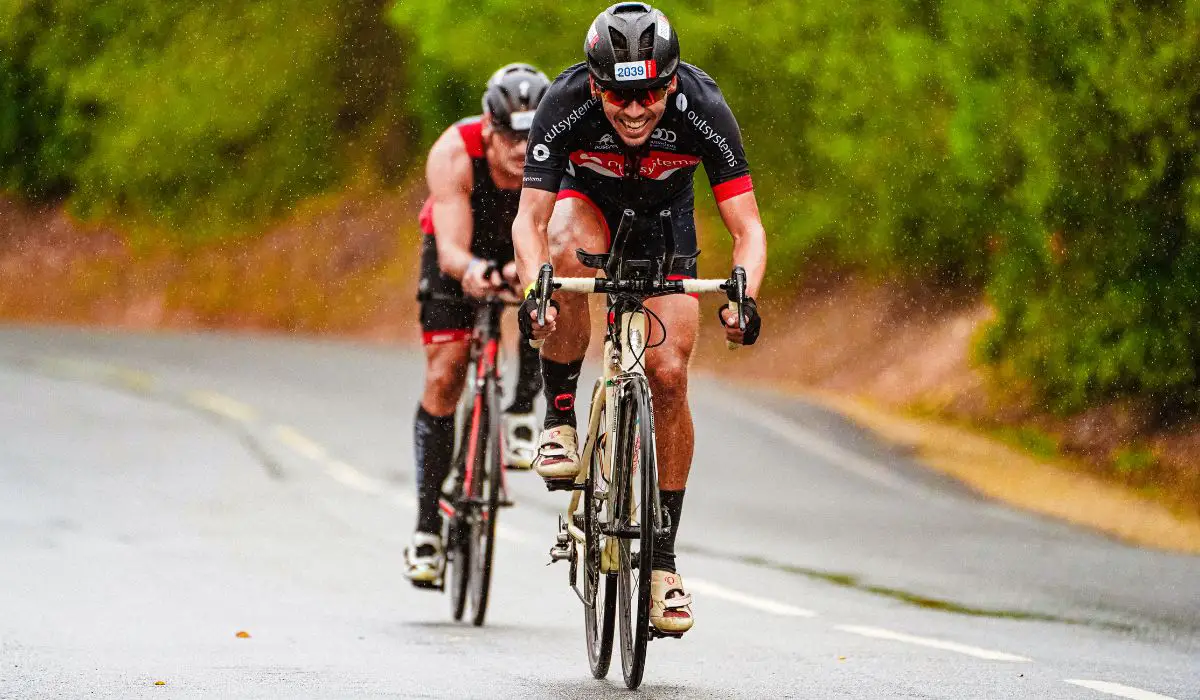
Trek Design, Components, And Technologies
Trek has quality frame designs and takes pride in providing clean and simple lines for its bike silhouette. Their components and mechanics are based on processes they’ve been building on for years.
Alpha Aluminum
Trek says their Alpha Aluminum is their most advanced aluminum concoction . The company has invested innumerable hours into its metallurgical science to produce frames that are robust and light enough to compete against carbon frames.
Trek has squeezed every ounce of performance out of their aluminum for a decreased weight and maximum stiffness on only the places that call for it.
Active Braking Pivot
This simple yet masterful execution of Trek’s suspension system allows riders to brake efficiently without locking out the rear suspension on the mountain bike equipped with this design.
With a simple realignment of the rear suspension pivot , riders can go ham on braking without losing momentum on dicey trails.
RE: Aktiv With Thru Shaft
This setup allows riders to forget that momentary lag of engagement on the shock system , whatever the terrain. Trek is constantly working and reworking its suspension systems to only be there from their input into the ride .
Re: Aktiv has such close tracking of the trail that it almost feels like it’s reading the future .
Trek’s IsoSpeed allows the company’s engineering department to retain the classic diamond-shaped frameset where it should be while adding a beautiful level of:
- predictable stiffness
- frame compliance
Giant Vs. Specialized Vs. Trek: Bike Range And Prices
Giant has one of the largest , if not the largest, spread of bike types at every price . Companies like Giant put mass-produced, discount store bikes in the area they belong in.
Specialized and Trek are more bourgeois brands . Although they offer entry-level bikes, they often all seem like afterthought capitalization compared to their mid-tier and higher-end offerings .
Giant Range And Prices
Giant has pretty much every type of modern bike you can think of. Without much effort, you can find a bike that can be a good companion for several thousand miles specially designed for:
Their electric bike range has been building up steam over the years, continually decreasing prices while improving . The company has road bikes ranging from as low as around $500 to around $12,500 .
Specialized Range And Prices
Specialized also carries a wide array of bikes at all price points . The company provides everything seasoned cyclists and newbies could ever want. Their pure-bred road bikes start at around $1,000 and can dance around the $15,000 mark .
Fortunately, the company knew to not only focus on mid-tier and up ranges . They also offer other hybrid and mountain bikes for around $600 , even though some of these bikes seem to constantly remind you that they are entry-level with the use of questionable components for the price point and the age.
Trek Range And Prices
Trek has a respected lineup of touring and mountain bikes with stellar suspension . Their focus is commendable on these bikes:
- women-centric
Although there’s always a harmonious chorus of getting what you pay for , Trek does get some flak for not fully catering to people with newly emerging cycling interests. Their cheapest road bikes sit around the $1,000 mark and gallop past $14,000 .
The company does properly dip its toe into the entry market with its hybrid bikes with price tags as low as around $600 . However, these bikes often flounder from their lackluster component assembly .
Giant Vs. Specialized Vs. Trek: Pros And Cons
Each of these three companies has something to offer the discerning customer , and you shouldn’t be in much want with any purchase of the brands. It’s more important to know what you want for:
- your budget
- what you can’t afford to include in that assembly

Giant Pros And Cons
It’s widely agreed upon that Giant produces comfortable rides . The entirety of their range is appealing to even the most starved pockets. The vast store of bike types at all price points makes the company a one-stop shop for beginner and more experienced riders .
The company is also respected for selling dead-set products to be bang on the buck . One of the few issues is their propensity to slap one or two name-brand components on lacking builds instead of making the bike more well-rounded.
However, the lifetime warranty on their frames is always comforting because it gives riders a sense of security in their bikes across the board.
Specialized Pros And Cons
Specialized continually cranks out some interstellar builds loved worldwide , especially regarding their S-Works line . Perhaps their high esteem is even more glaring when the company “phones it in” regarding the assembly of components on their entry-level bikes .
Fortunately, mid-tier Specialized bikes usually have a fantastic assortment of components. Another fault with Specialized is that they don’t always have products that match their high price , especially with their mid-tier bikes .
Specialized also has a body geometry design that’s in tune with their riders and can fit like a glove if you take the time to do a proper fitting.
Trek Pros And Cons
Trek has invested a lot of dollars and hours into advertising its brand and saturating the market for recognizability. Their marketing efforts have duly paid off as Trek is now one of the most recognizable cycling brands anywhere in the world .
Unfortunately, many now feel like they are paying more for brand recognizability than the quality craftsmanship from the Trek they grew up with. The lifetime warranty of Trek bikes serves as a small testament to their unwavering dedication to reliable builds and innovative designs .
The company isn’t as affordable as Giant, but it is an American-made brand that stands proud of the fact.
To reiterate, Giant, Trek, and Specialized are leading bike brands for a reason . They are such close matches that an affordable purchase from any of the brands shouldn’t be a disappointment.
For cyclists who have been on the game for some time, it usually comes down to taste and knowing what each company skimps or spurges on .
You might also be interested in:
Giant Vs. Trek Vs. Schwinn
Share me if you found me helpful!


IMAGES
VIDEO
COMMENTS
But just like in a boxing match, there are some key differences between the two. Trek has a wide range of wheel sizes, while Specialized focuses primarily on the 27.5″ and 29″ options. When it comes to material, both brands offer aluminum and carbon fiber options.
The Domane SL5 road bike from Trek is ideal for riders looking for a racing bike that is quick and able to withstand long distances. For Specialized, their range of road bikes includes performance bikes, triathlon bikes, and gravel bikes. A Specialized road bike that justifies this manufacturer's credibility is the Tarmac Disc Comp.
Trek Vs Specialized: Two Of Bike Manufacturing's Biggest Players. Both Specialized and Trek were founded during the "Bike Boom" of the '70s, capitalizing on the gap in the US bike market generated by the more prestigious European cycling brands' inability to keep up with both American and European demand.. Prior to the '70s, bikes in the US were likely imported from European brands ...
The main differences between Trek vs Specialized MTB are: Trek bikes use a full-floater and active breaking pivot rear-suspension system, whereas Specialized MTB use Future Shock Rear. Trek offers entry-level bikes that tend to be expensive, whereas Specialized MTB come more affordable. Trek bikes come with a more conventional design, whereas ...
The Trek Precaliber 24 which costs $470 is a good example of a low-end road bike, the Supercaliber 9.7 a mid-level one at $5099, and the Madone SLR a high-end option at $13,199. The $1300 Diverge E5 is an entry-level road bike by Specialized. Mid-level options are like the popular Roubaix at $2700 and $5500 Tarmac SL7 Comp.
When it comes to Trek vs. Specialized mountain bikes, there's no straightforward answer to which is best. Specialized bikes are faster and more aggressive and are known for their cutting-edge technology. Conversely, Trek bikes are more stable and comfortable, with more variety and options. Both Trek and Specialized bike brands offer a wide ...
The Emonda SL frame is made from 500 series OCLV* carbon and weighs 1.68kg. The SLR version is upgraded to 700 series OCLV and weighs 1.19kg. (* Optimum Compaction Low Void, in case you're wondering…) Specialized (thankfully) adopt a slightly more straightforward forward approach to naming their bikes.
Let's have a look at how much Trek and Specialized bikes cost starting with the entry-level bikes around $700. Specialized entry-level mountain bike costs (29″) $710, Treks entry-level MTB is $760, slightly more expensive. The specialized bike has better slightly bike parts and the biggest difference is the fork.
Specialized Allez vs Trek Checkpoint. The Specialized Allez and Trek Checkpoint are two entry-level road bikes that are designed for beginners and budget-conscious riders. The Allez is known for its lightweight and agility, while the Checkpoint is known for its versatility and durability. Both bikes are designed to provide a comfortable and ...
Tire Clearance - Rockhopper vs Marlin. When it comes to tire clearance the Trek Marlin fits up to 29er × 2.4″ mountain bike tires. While the Rockhopper has room for up to 29er x 2.3″ tires. The Marlin comes stock with Maxxis Ardent (27.5 x 2.4″ or 29 x 2.4″ tires). While the Rockhopper comes with Ground Control (27.5 x 2.3″ or 29 x ...
Winner. All three brands have impressive materials engineering employed in the manufacture of their bikes, though it seems Specialized lack a dedicated carbon fiber manufacturing process. Giant and Trek both win in their technology. 5. Brakes.
Trek vs. Specialized Hybrid - A Detailed Comparison Suspension Fork The Trek Hybrid’s fork is made of steel. Although more and more bicycle manufacturers prefer to stay away from steel, it is known to be a durable metal. These forks usually last through the lifetime of the bike. It is however, a fairly heavy metal which increases the ...
2018-2020 Diverge. With the second-generation Diverge, Specialized enhanced the frame's off-road capabilities. The most notable improvements were increased tire clearance, revised geometry, and the addition of Future Shock. The second-generation Diverge could fit 700c x 42mm or 650b x 47mm tires.
Trek claims an official weight of 2,030g for its top-end 56cm Domane SLR Disc model, including the frame, fork, headset, integrated seat mast topper, front and rear IsoSpeed units, and all associated hardware. Specialized claims 1,975g for a 56cm Roubaix under similar conditions (and including the FutureShock cartridge).
Not as high spec as the 700 but designed to be lightweight, strong and stiff (but aren't they all…). Trek Domane SL 7. SL 4 - mix of Shimano Tiagra and Praxis / Bontrager Affinity Disc wheels - $2,400 / £2,100. SL 5 - Shimano 105 / Bontrager Affinity Disc wheels - $2,900 / £2,550.
Yes, they employ different technologies, but the results are the same; more lightweight bikes. Specialized, for example, employs SuperLight frames while Trek uses OCLV carbon and alpha aluminum frames as Giant focuses on Advanced Composite frames. All of these frames are lighter. 5.
Specialized Sirrus vs Trek Fx Bikes. Both brands offer a wide range of bike types, from road bikes to mountain bikes. However, Sirrus specializes in hybrid bikes, while Trek focuses more on performance-oriented bikes. If you're looking for a bike to use for commuting or leisure riding, Sirrus is a great option. ...
The price of the Trek Allant+ ranges from $4,000 to $4,500 dollars depending on the model. The Trek Allant+ is an excellent mid-range premium bike for any city rider. Specialized Turbo Vado. Specialized has long been considered one of the best in the business, so it is no surprise that the company's main commuter e-bike is a top-notch product.
Trek vs. specialized electric bike â€" A quick roundup Battery power The specialized levo turbo comes with a patented Turbo M2 battery that delivers 500 watts. This is very better than the Trek Domane+ that has Bosch motor delivering 350 watts. The long lasting battery means you can ride for up to 2.5 hours before you start cycling again.
Specialized is known for high-performance road bikes and mountain bikes.Popular models include the Tarmac, Roubaix, Stumpjumper and Epic. Trek offers renowned off-road mountain bikes like the Fuel EX and road bikes such as the Domane.Their FX hybrid series is also popular. Giant has models for all levels across styles but is especially respected for affordable road bikes like the Contend and ...
Trek vs Giant vs Specialized vs Cannondale Bike: How do they compare Frame and Design. Trek offers longer-travel at 120mm front and 130mm rear which is a bit large. There is a 140mm RockShox or FOX 34 or FOX 35 fork which is stiffer with the frame measuring anywhere between 10 to 20mm.
The price of a Specialized Sirrus bike can vary greatly depending on the model and features. Generally, Specialized Sirrus bikes range in price from around $400 to $1,500. On the other hand, Trek FX bikes tend to be more affordable. Prices for Trek FX bikes range from around $300 to $1,000. Overall, Trek FX bikes tend to be more affordable than ...
Giant Vs. Specialized Vs. Trek: History, Reputation, And Resale Value. Like it or not, history can play a vital role in a brand's reliability.Knowing where a brand came from can help you see where it's going.. History also spins closely to a company's reputation.A company that continually strives to produce the best products will have a good reputation that rises above the criticism of ...
Tropical waves often move at 10 to 20 mph, but can move faster. These waves need to survive dry air, fast upper-level winds and the elevated terrain of the Caribbean islands before they can impact ...